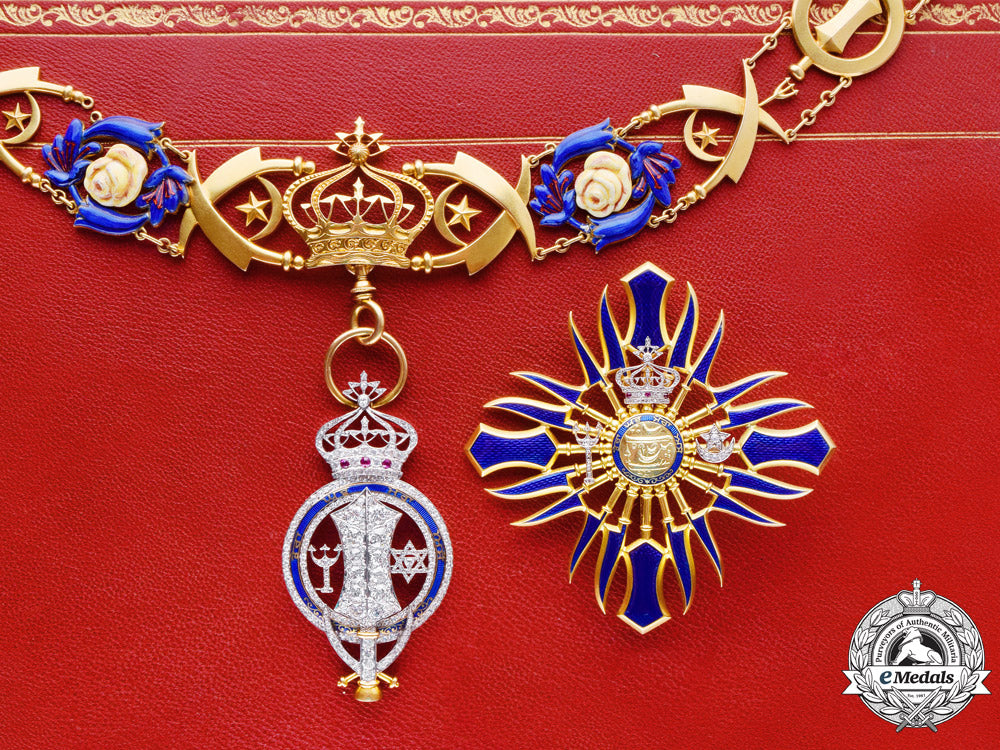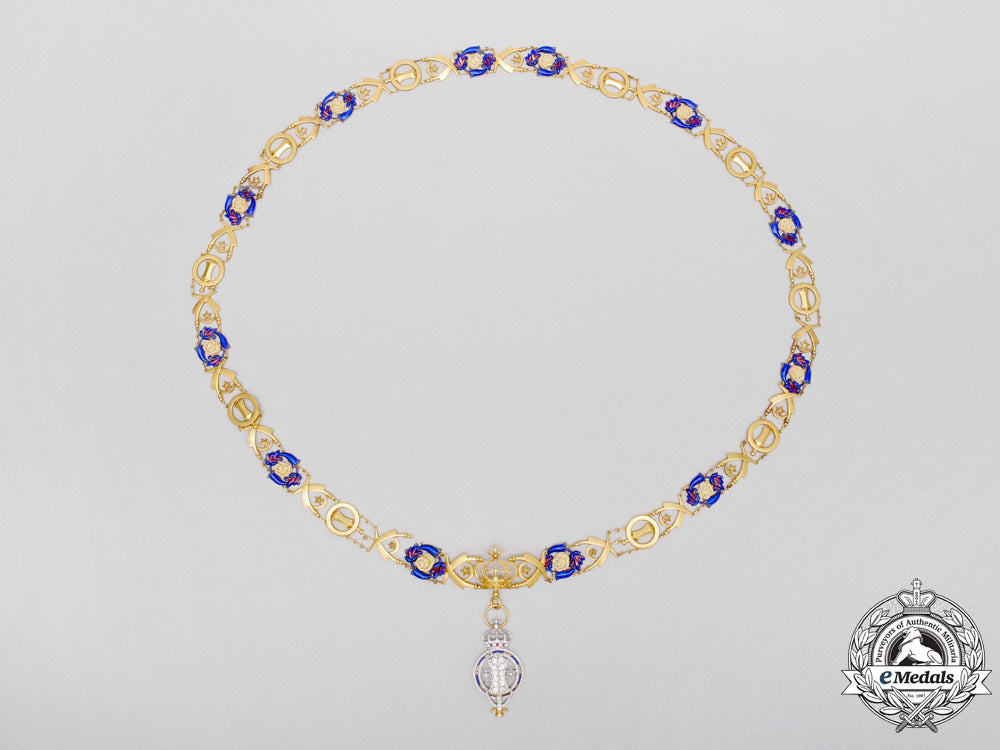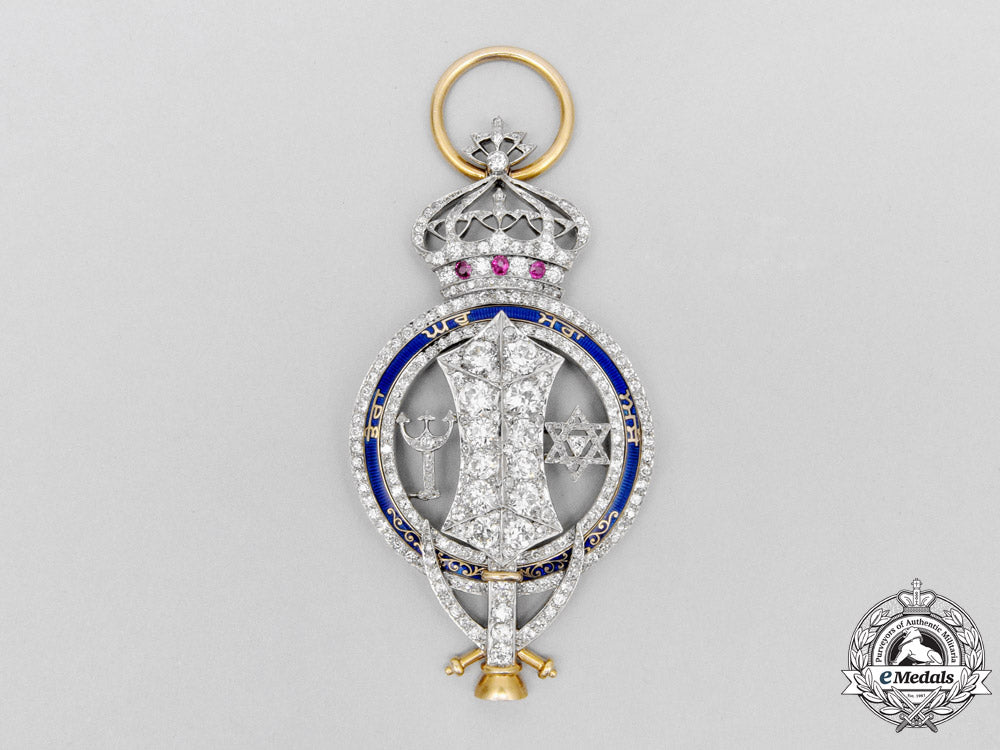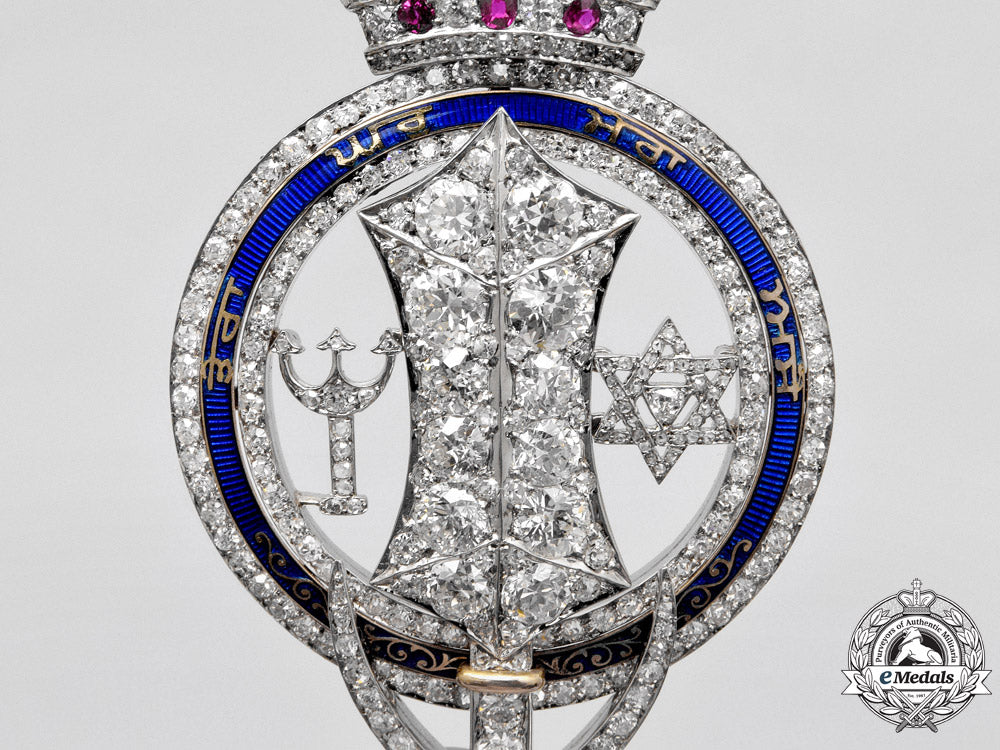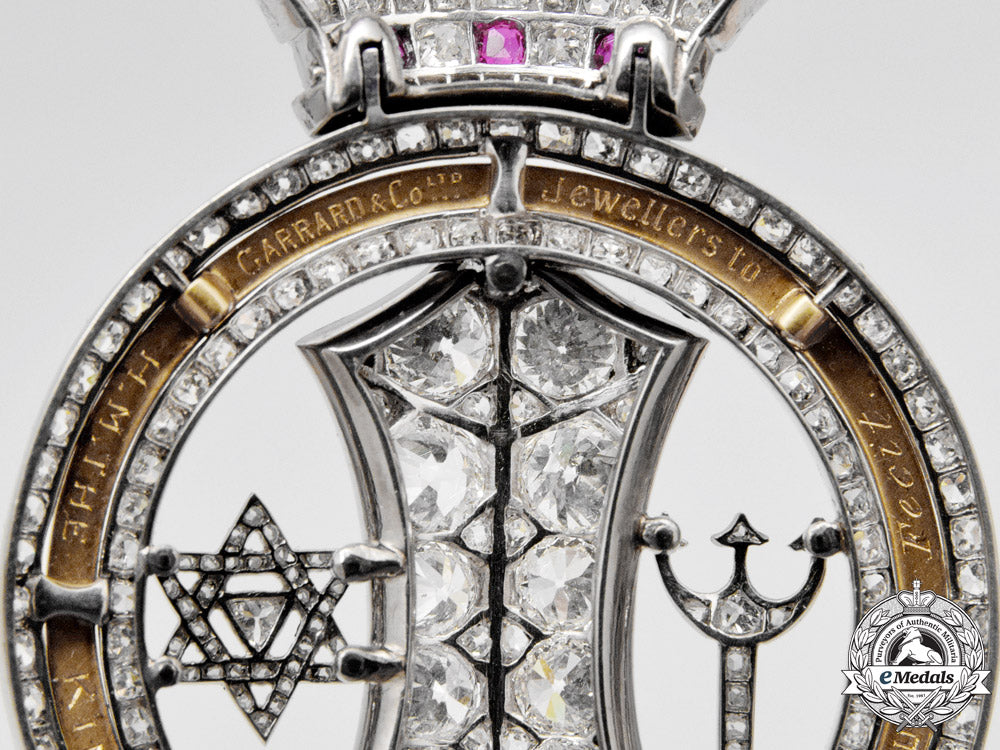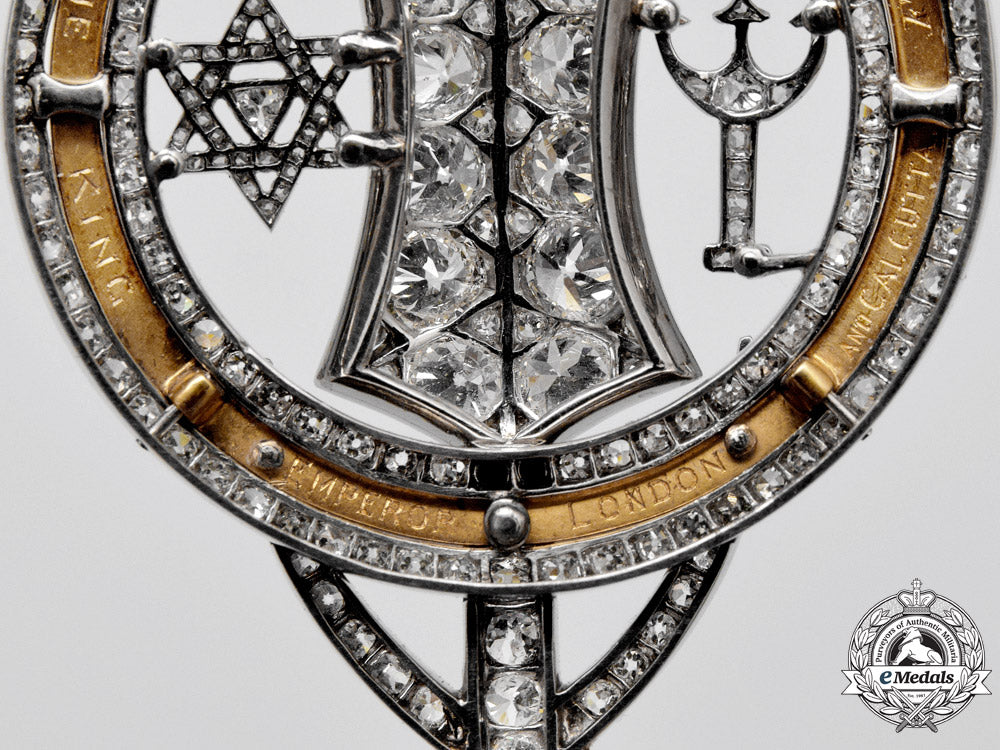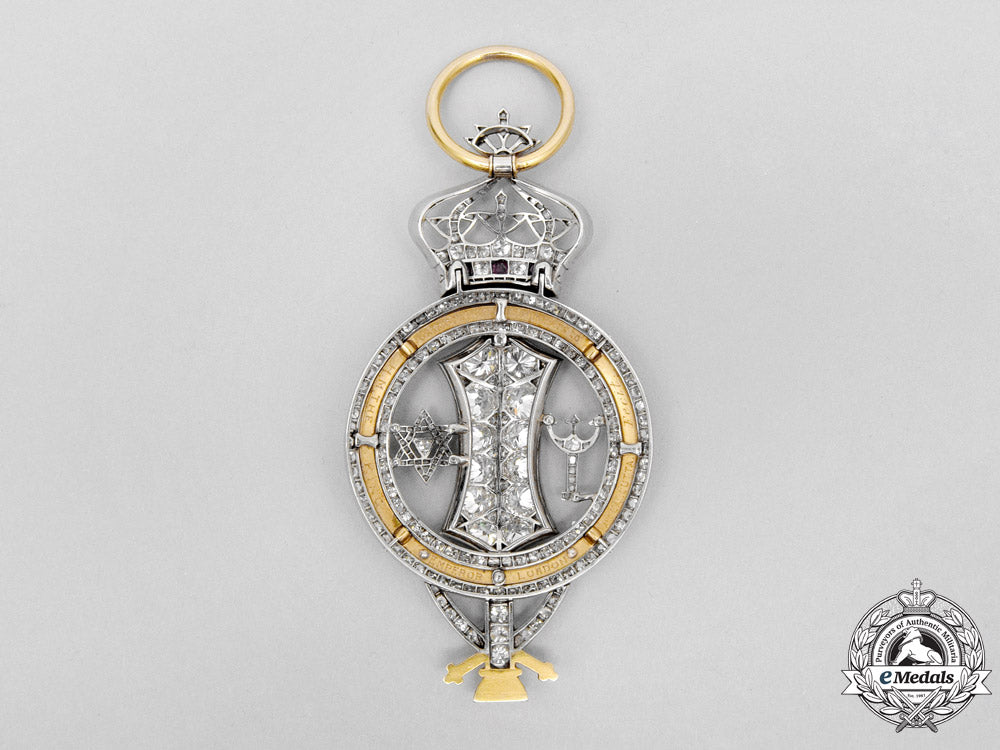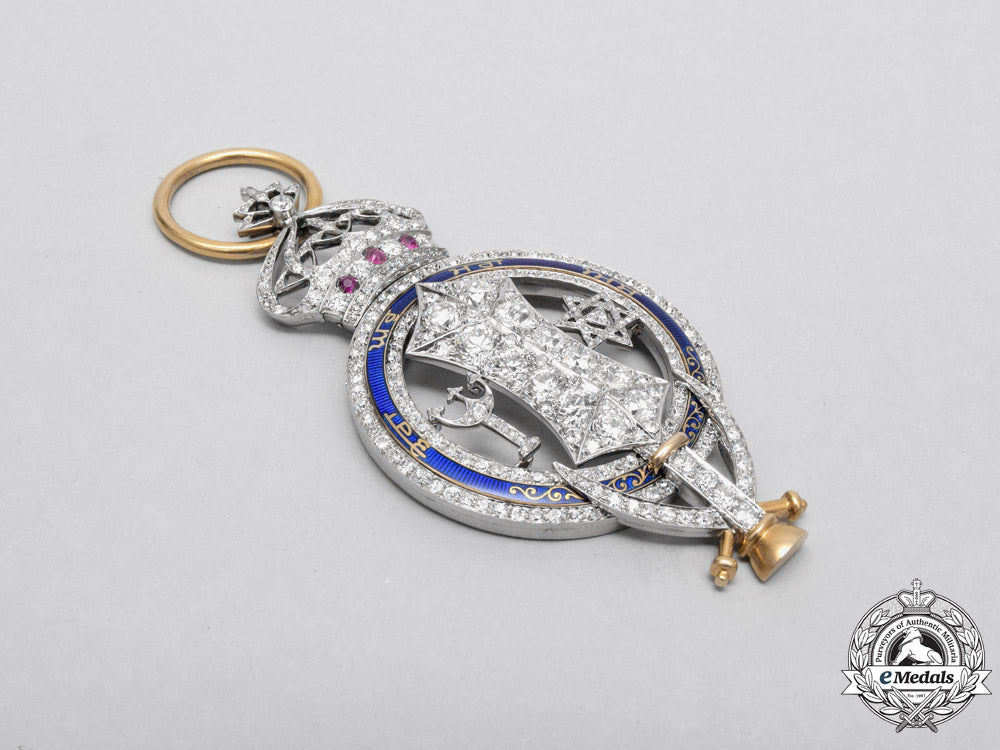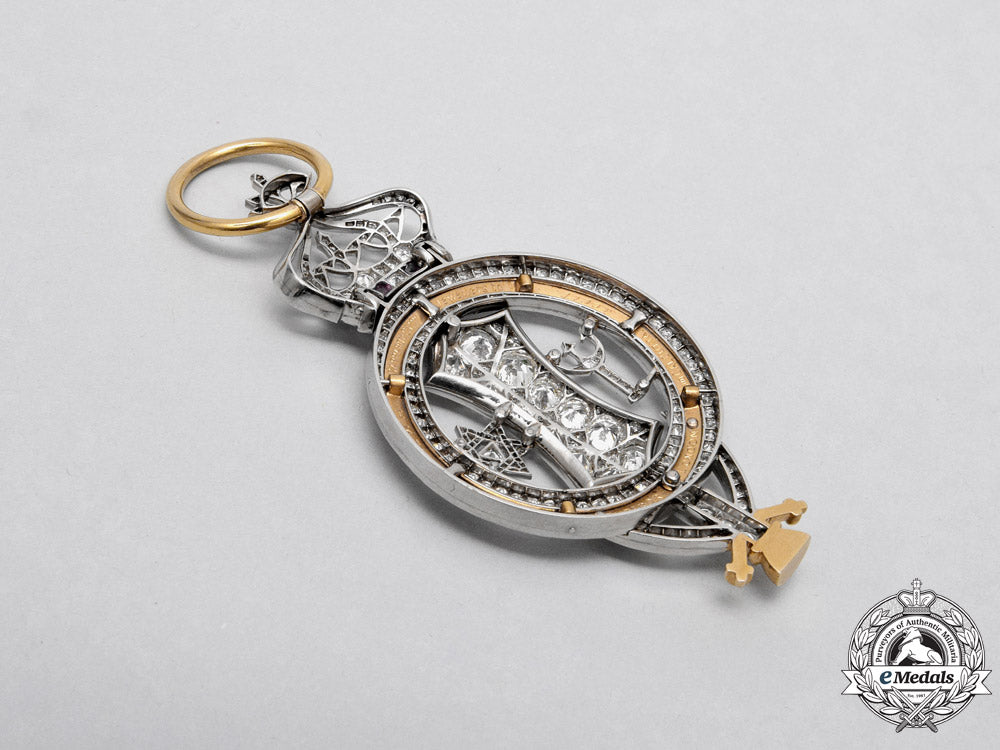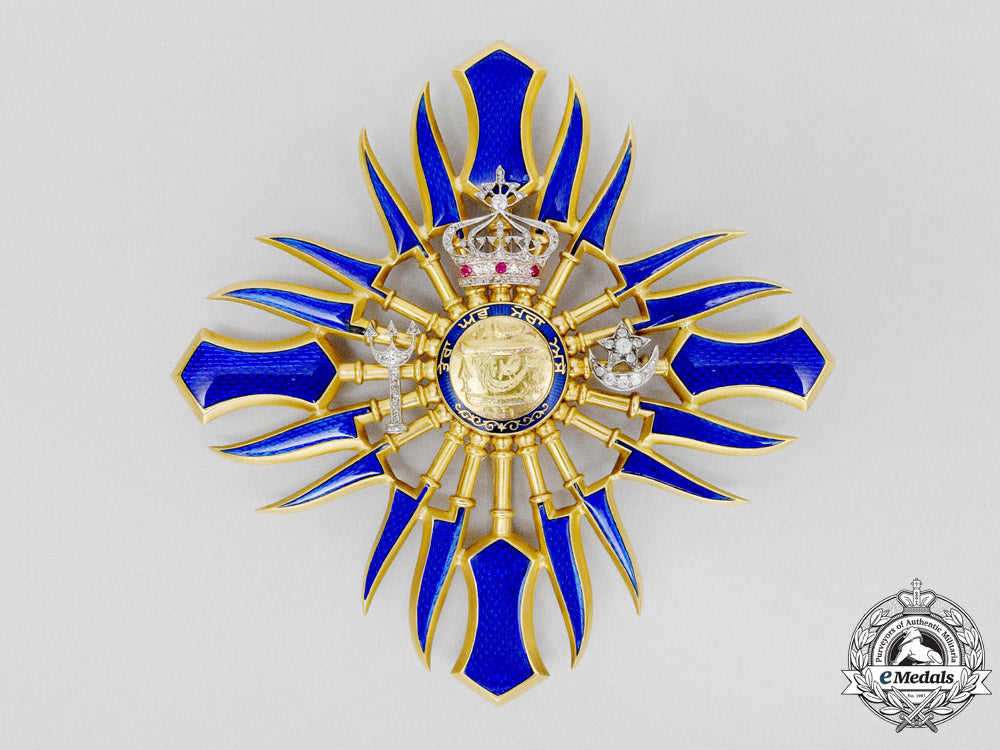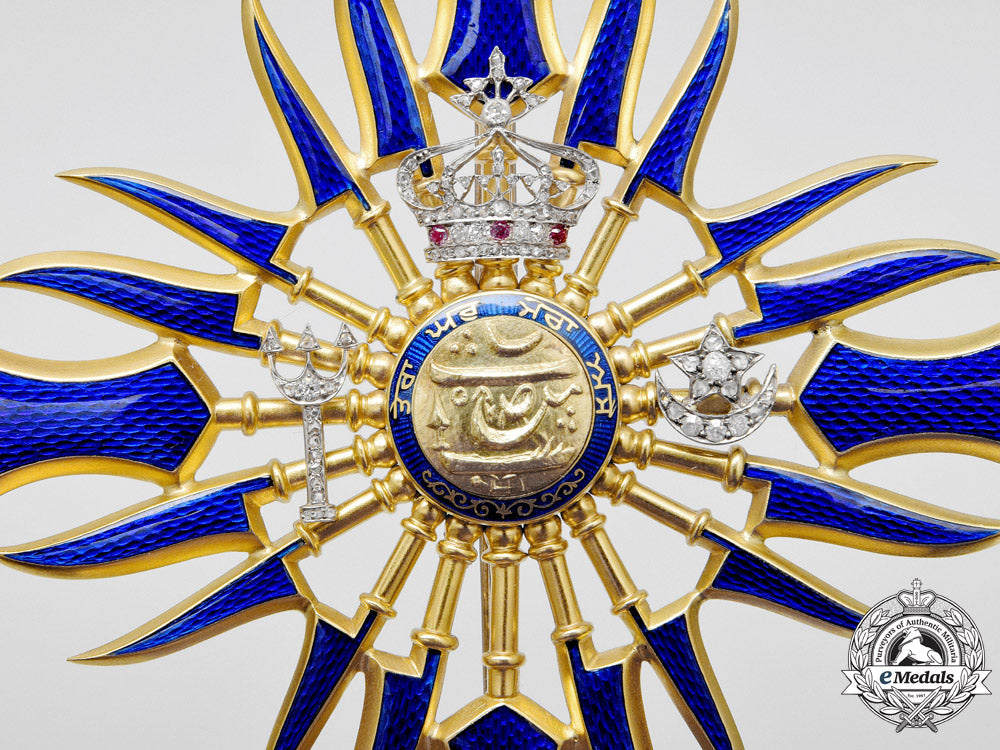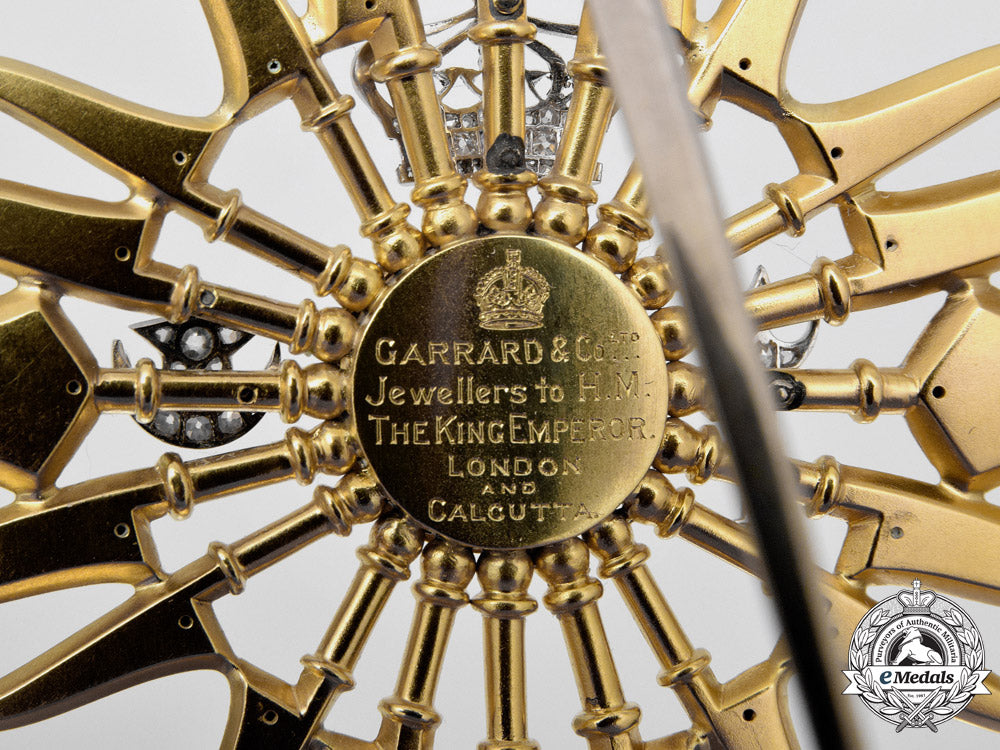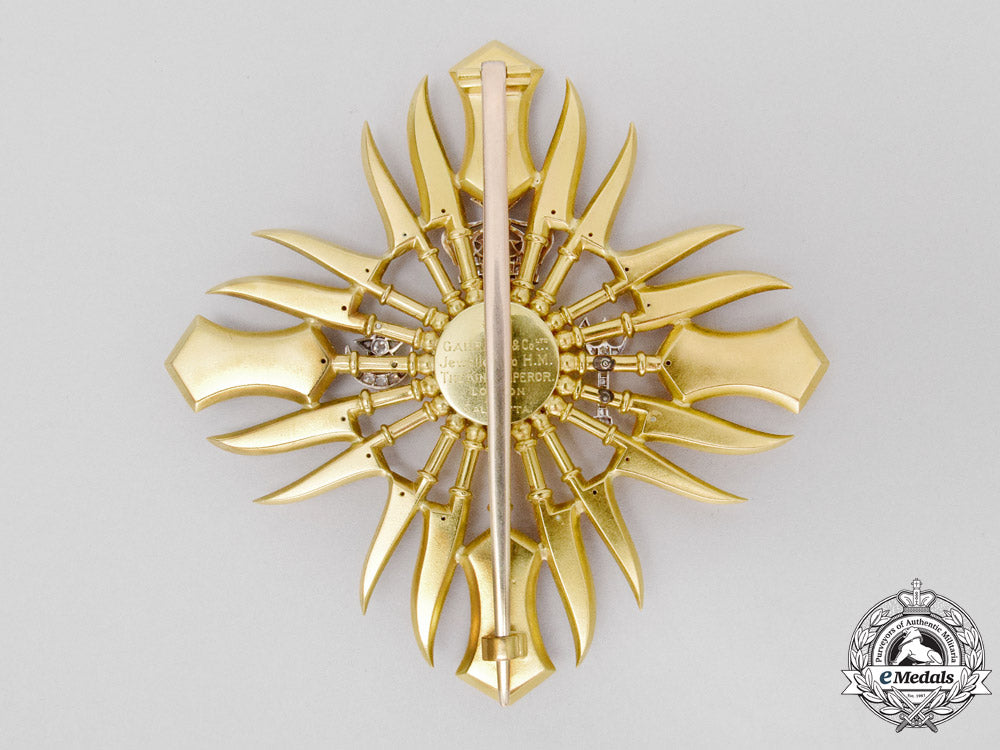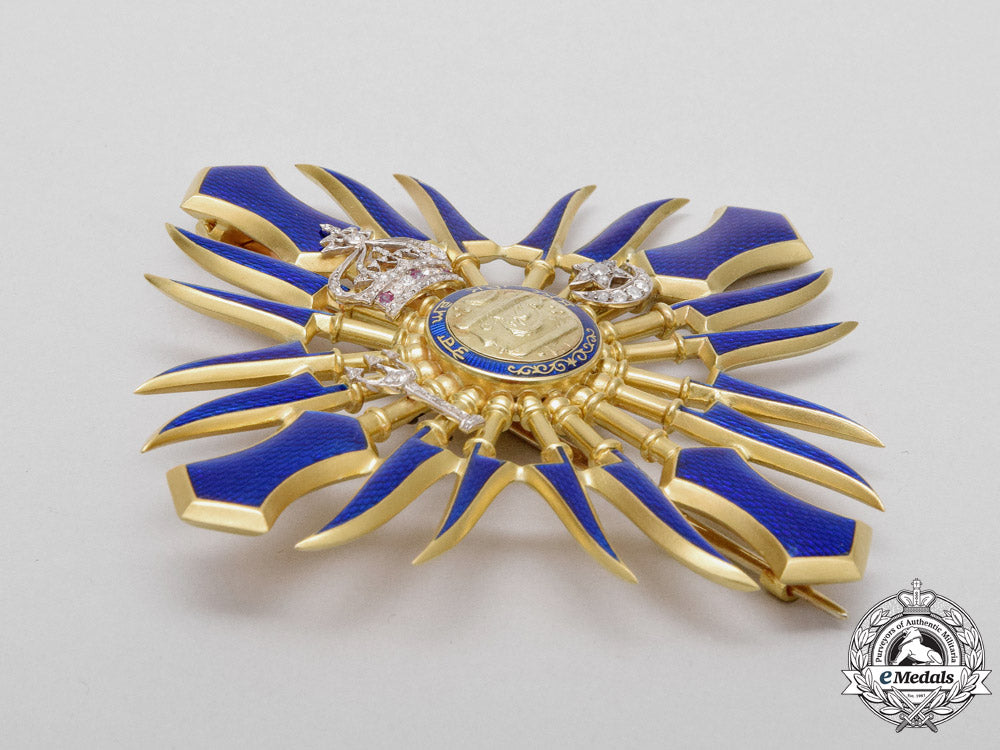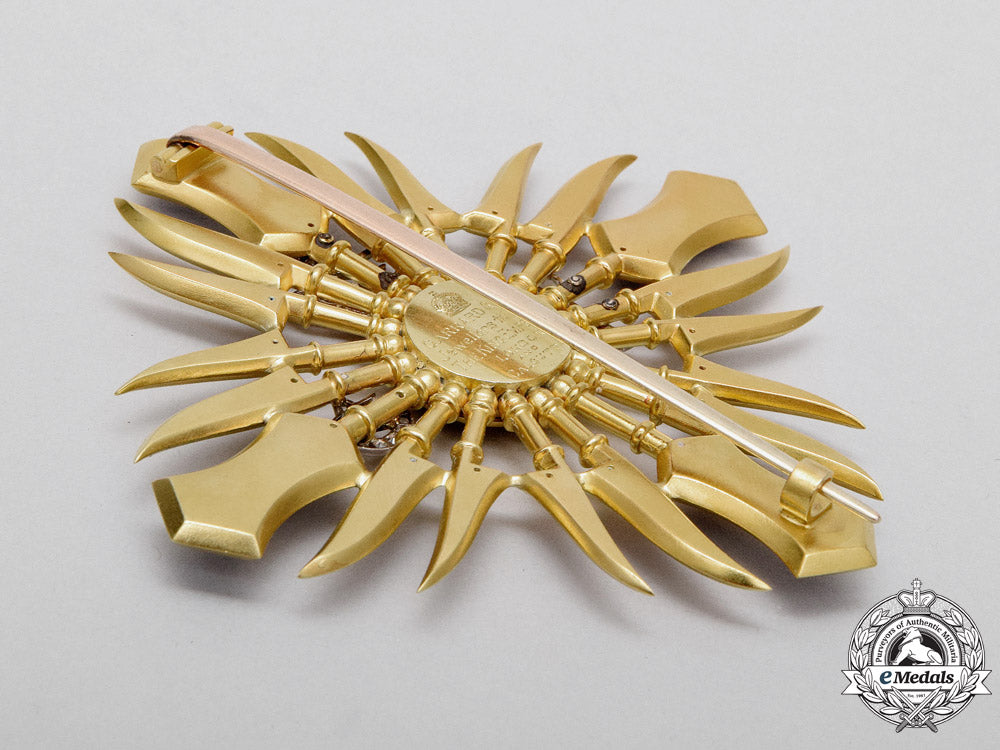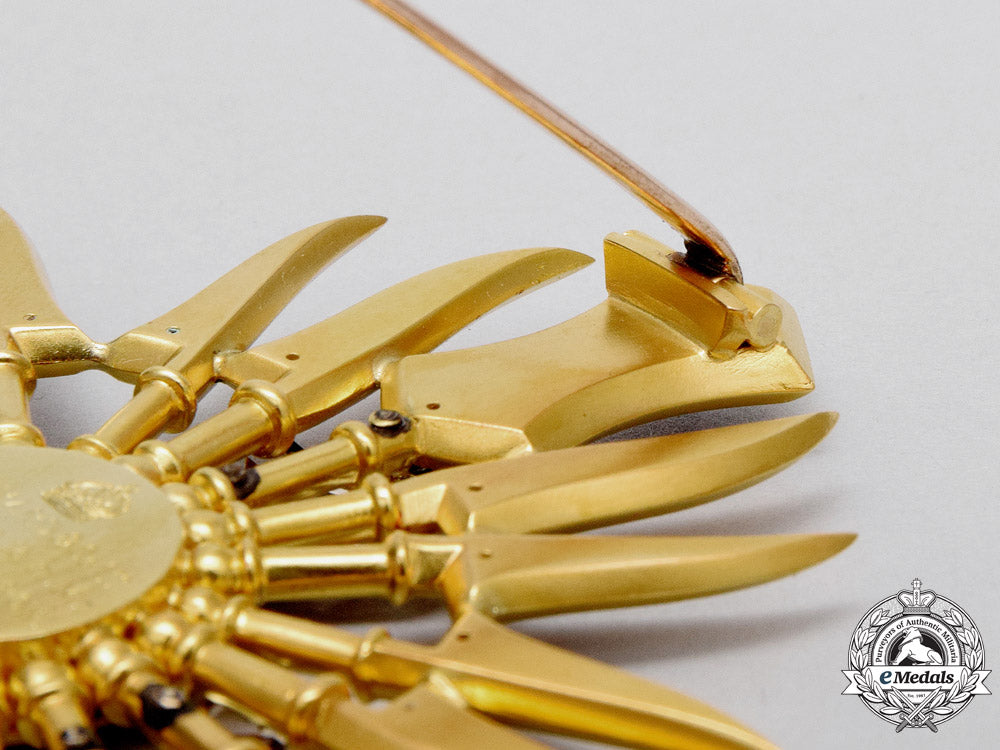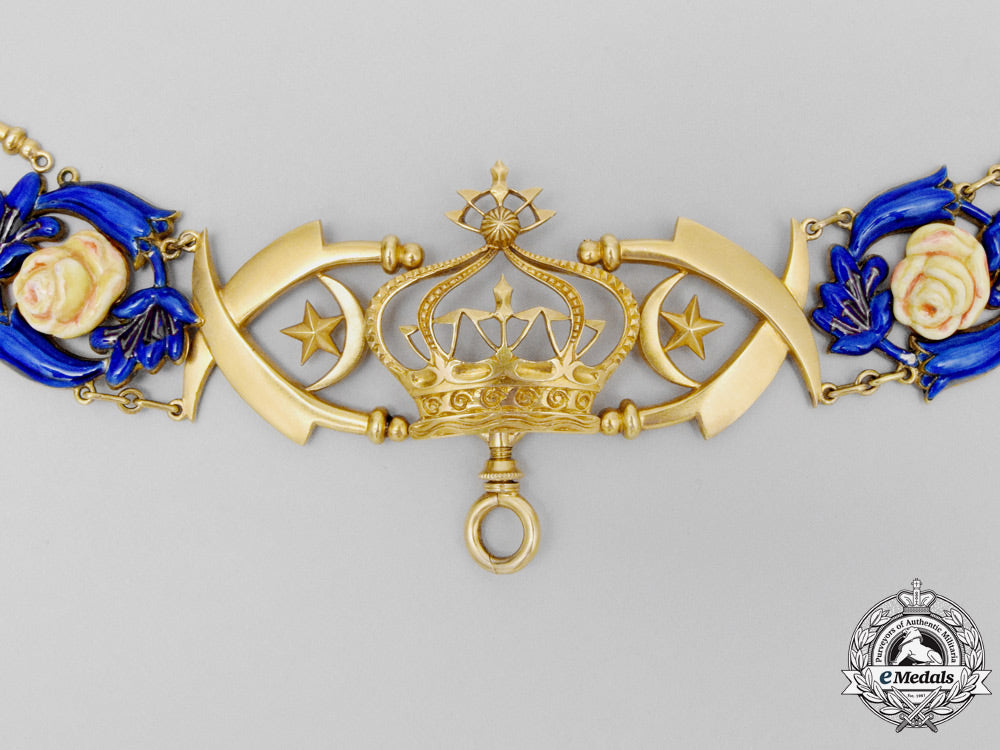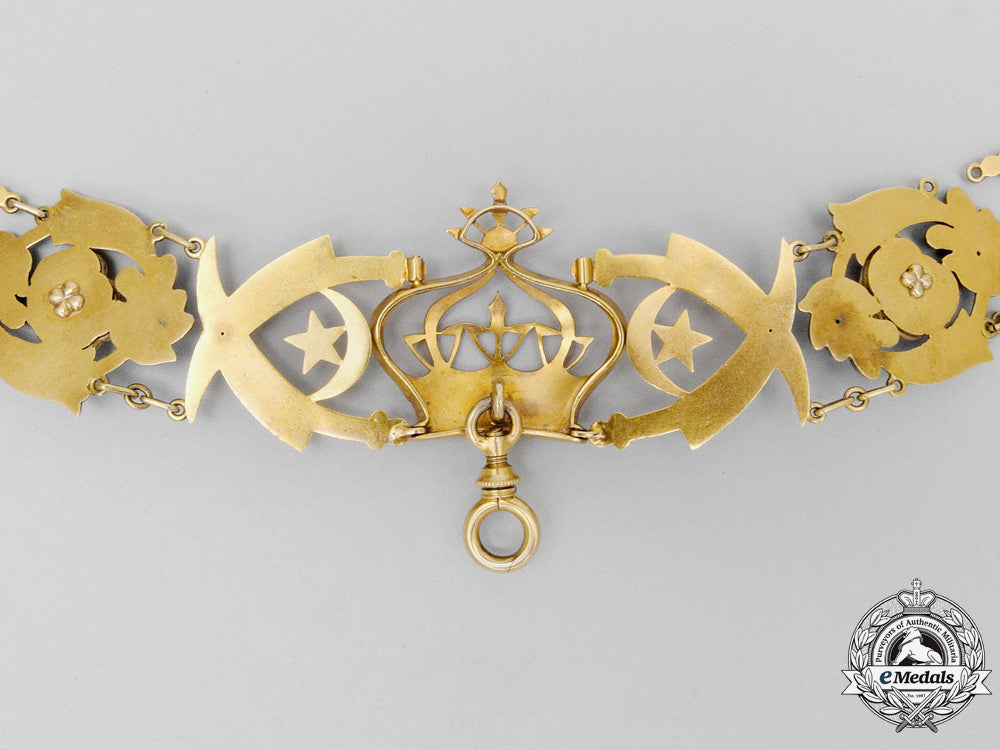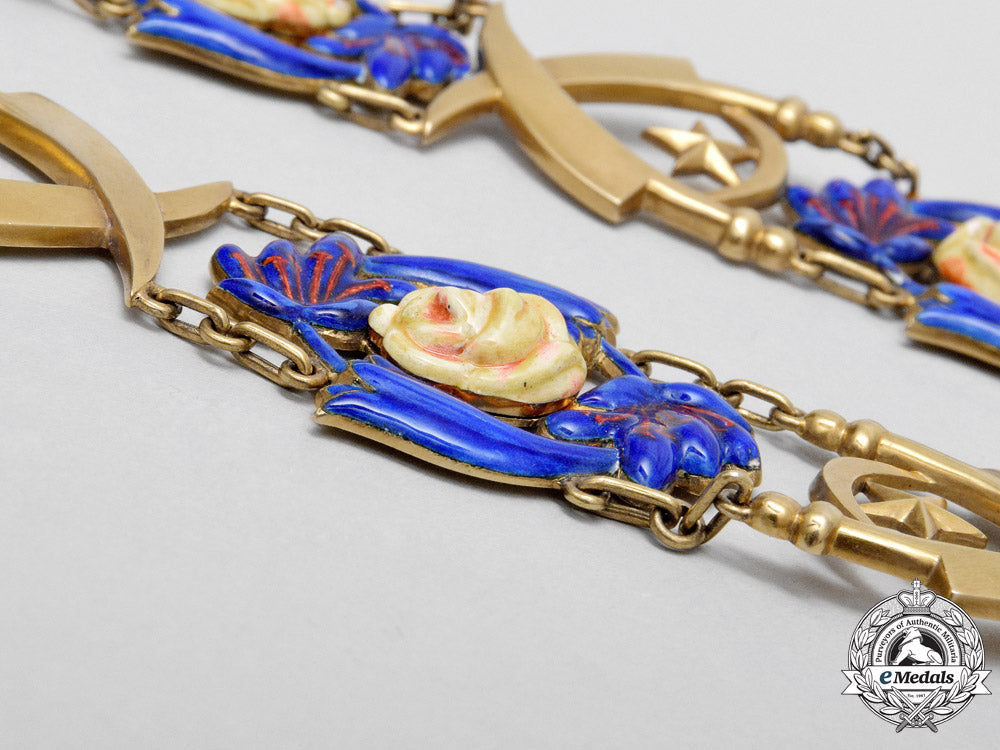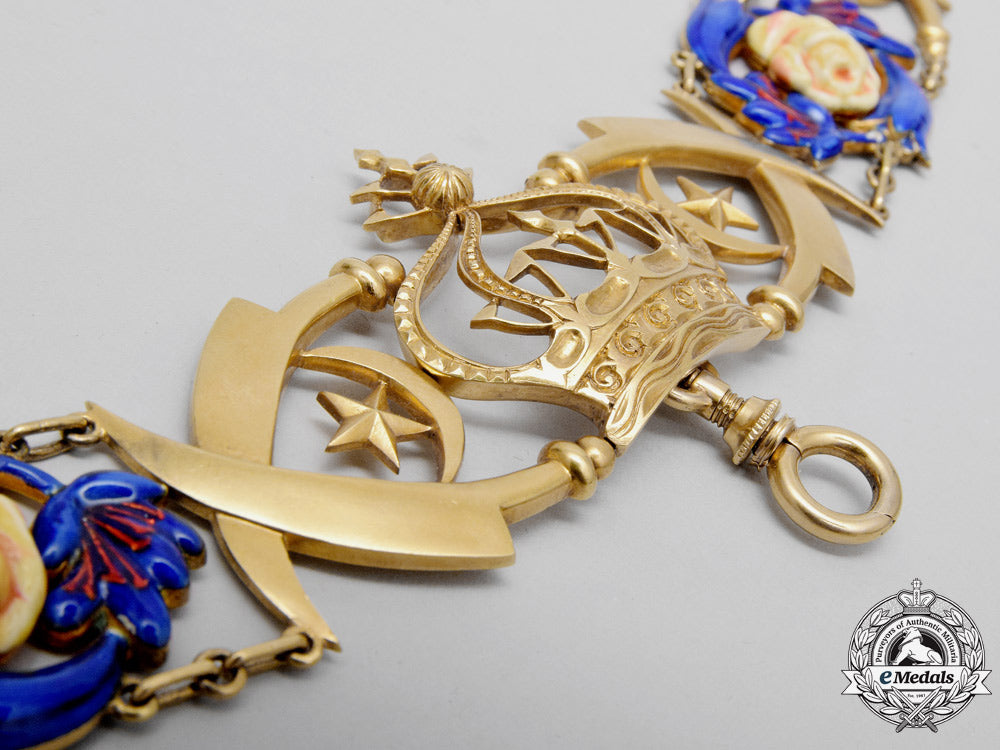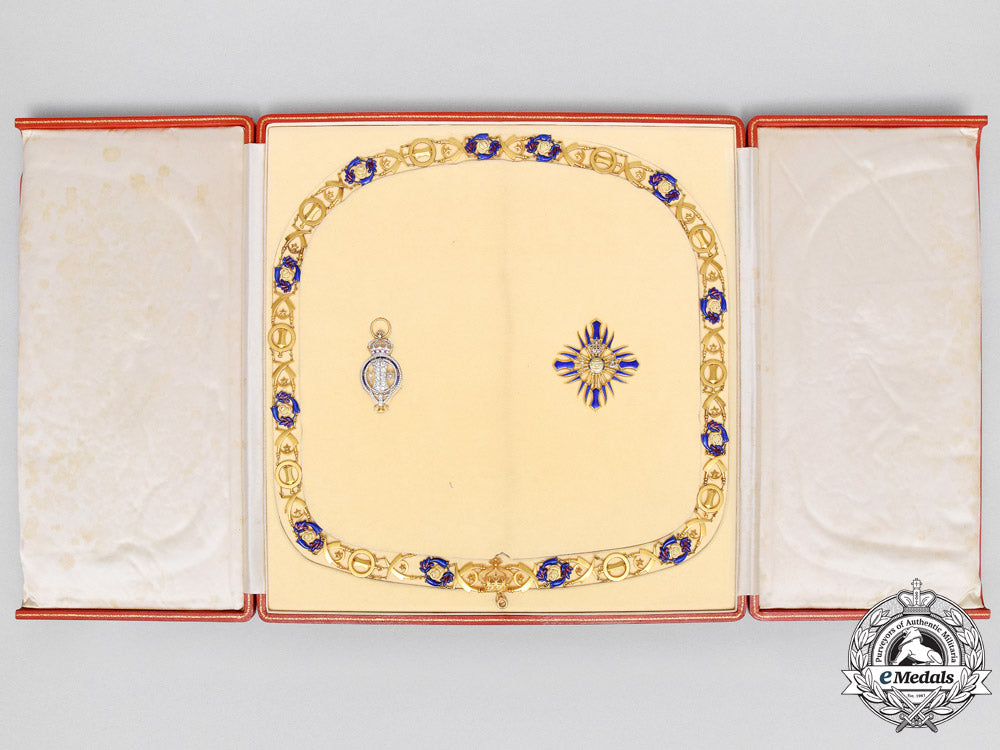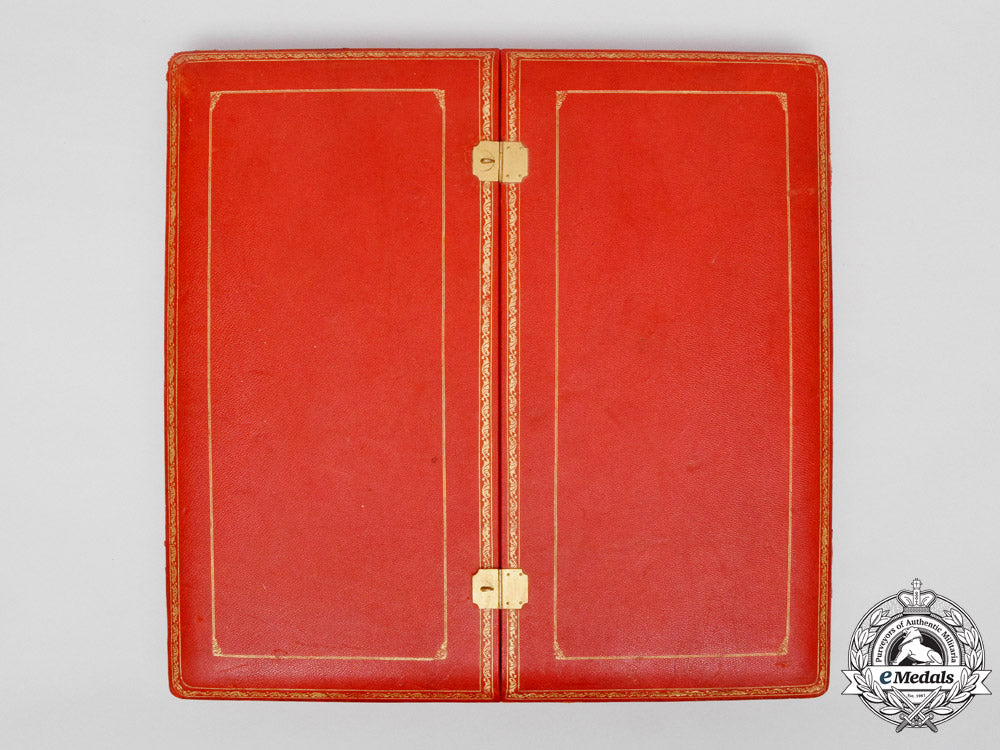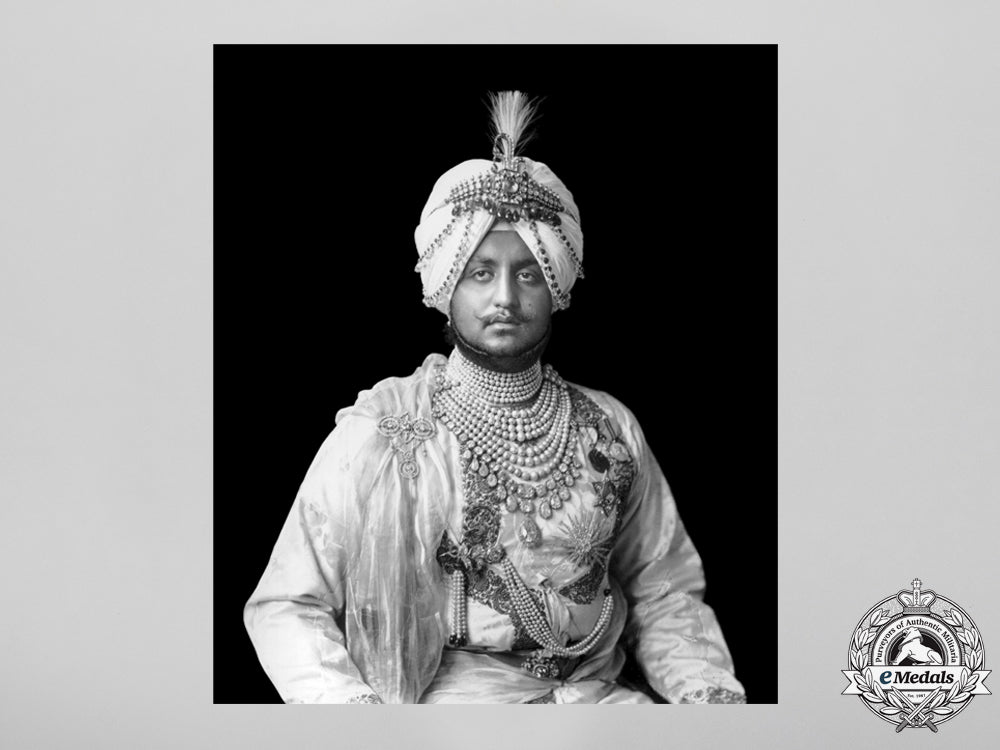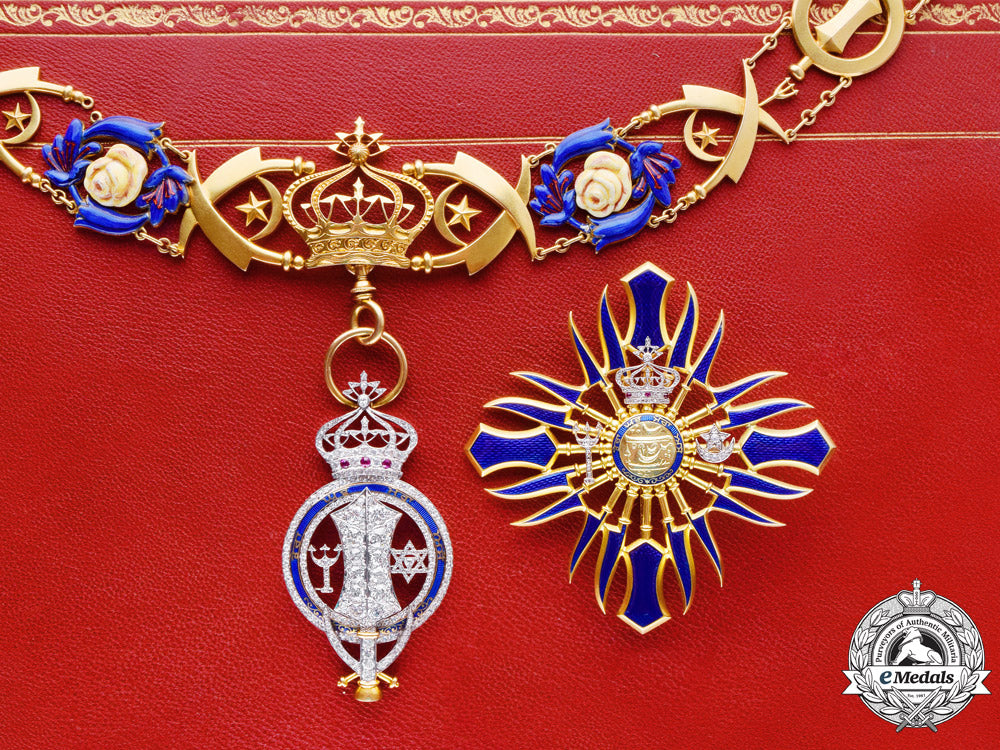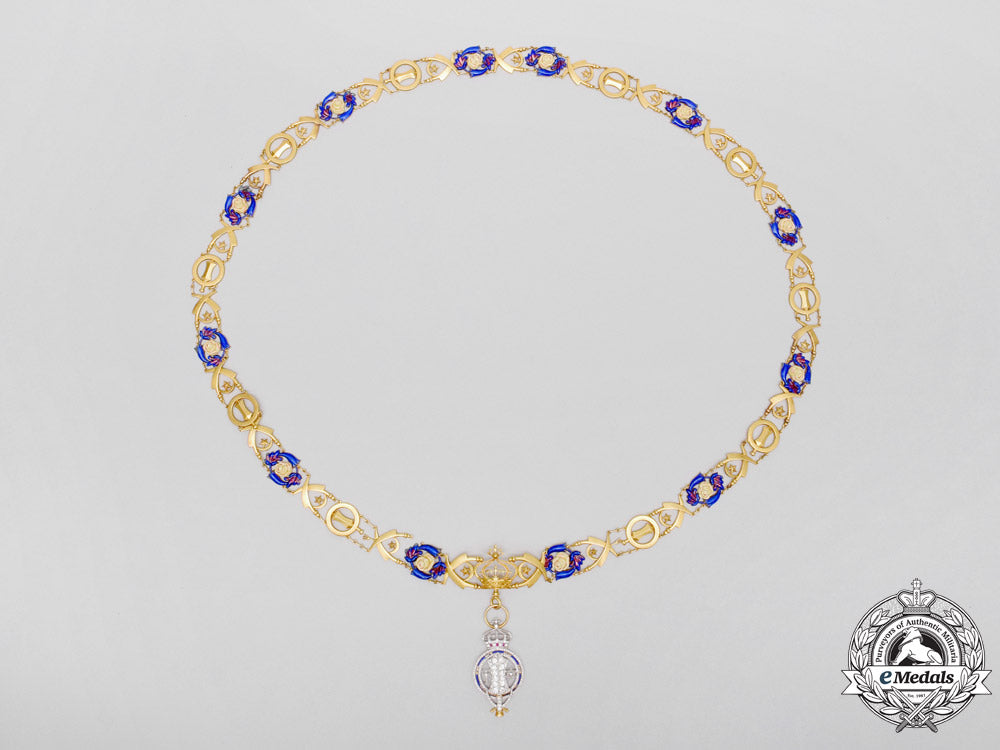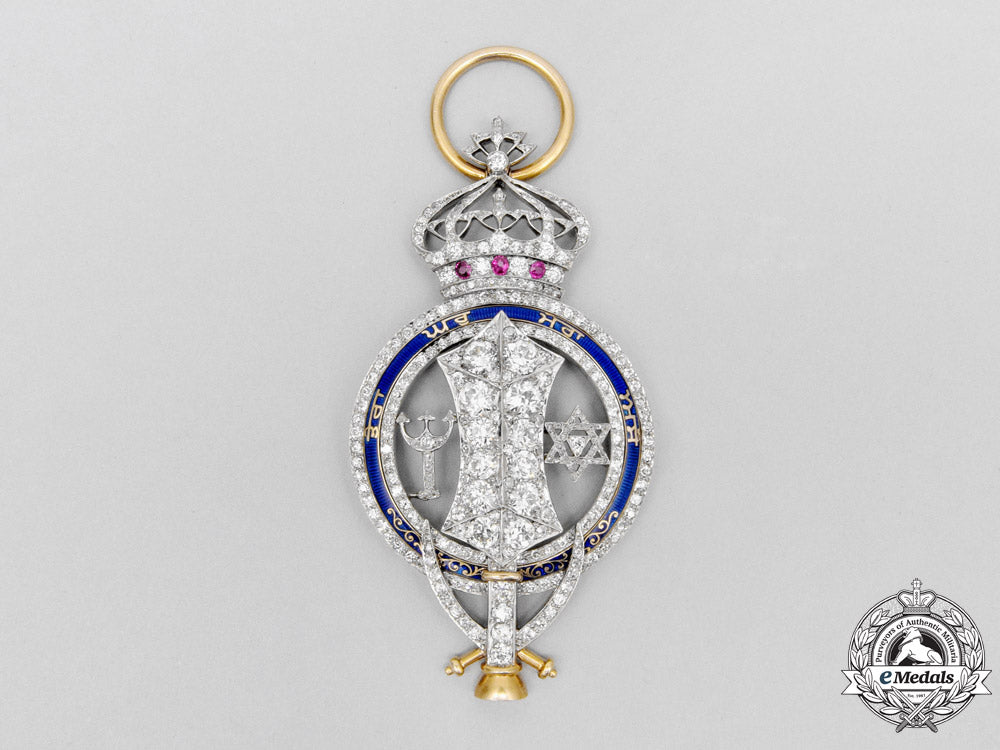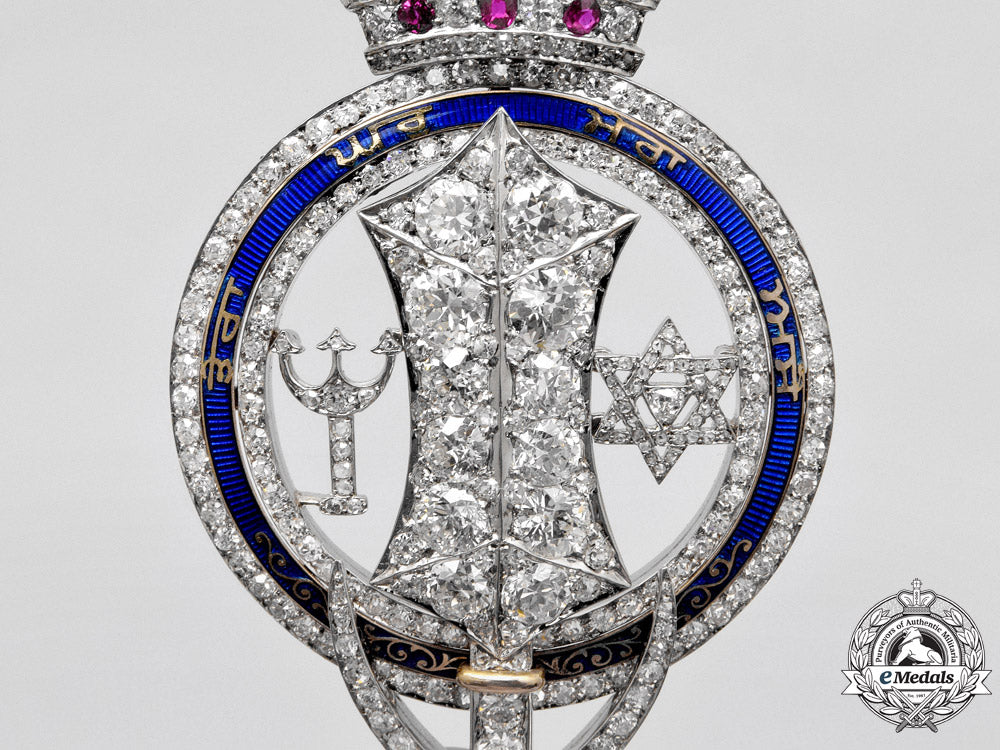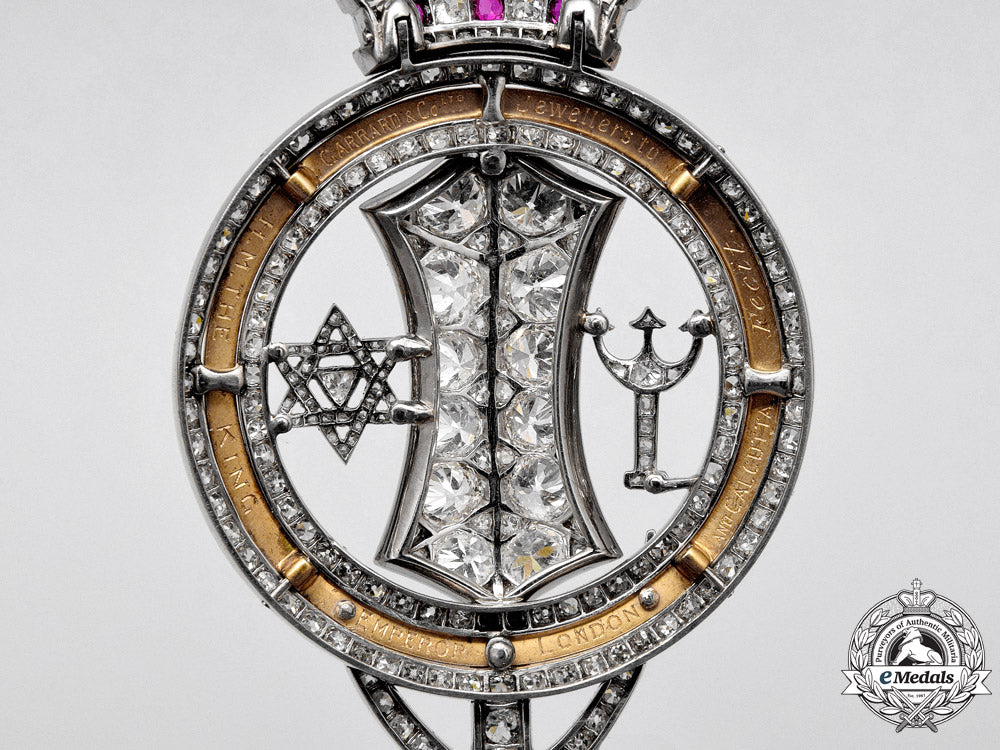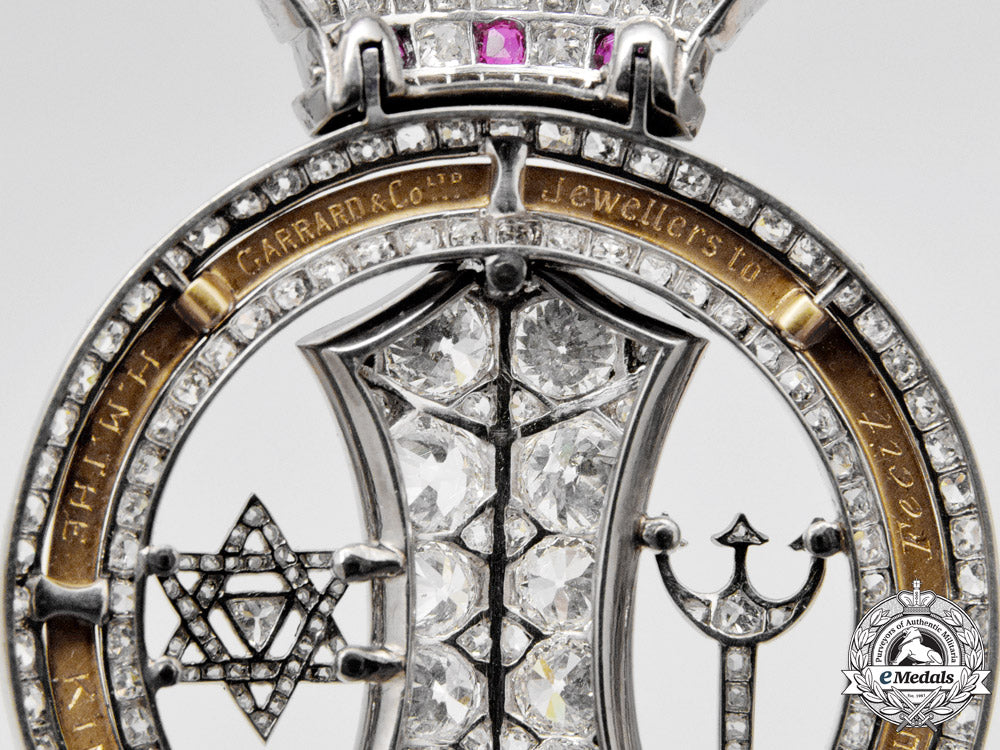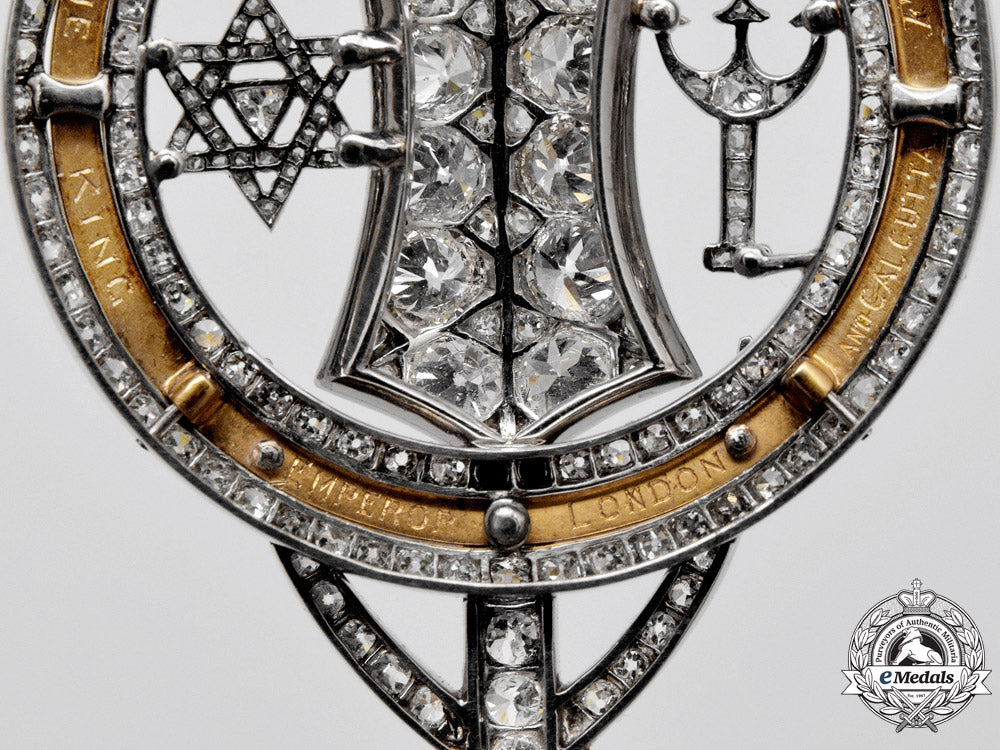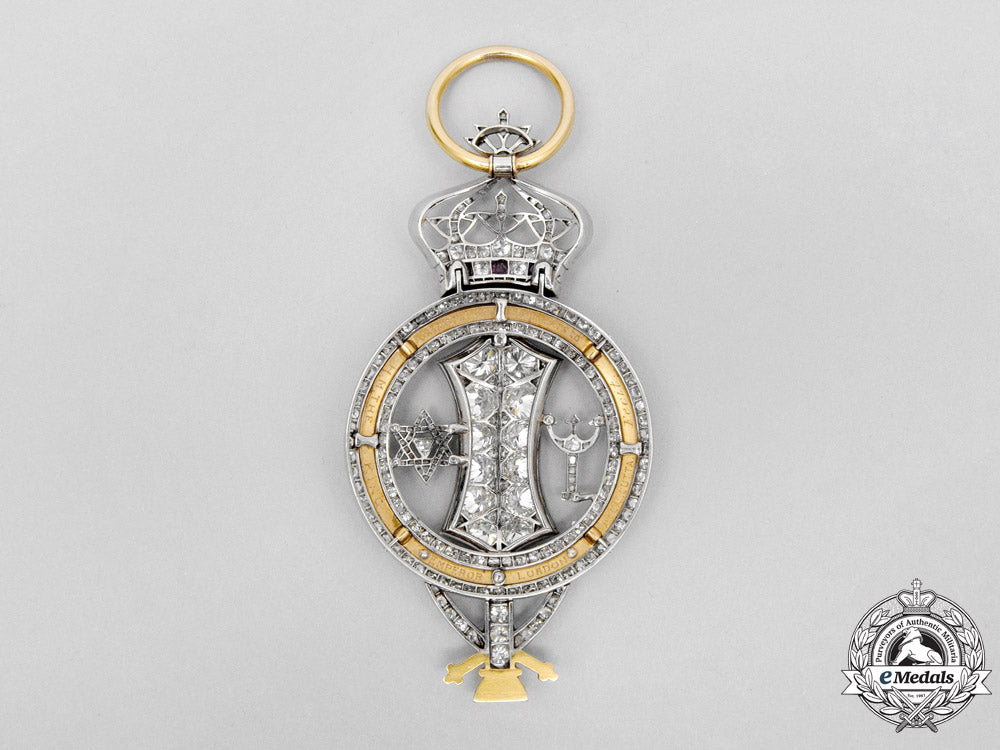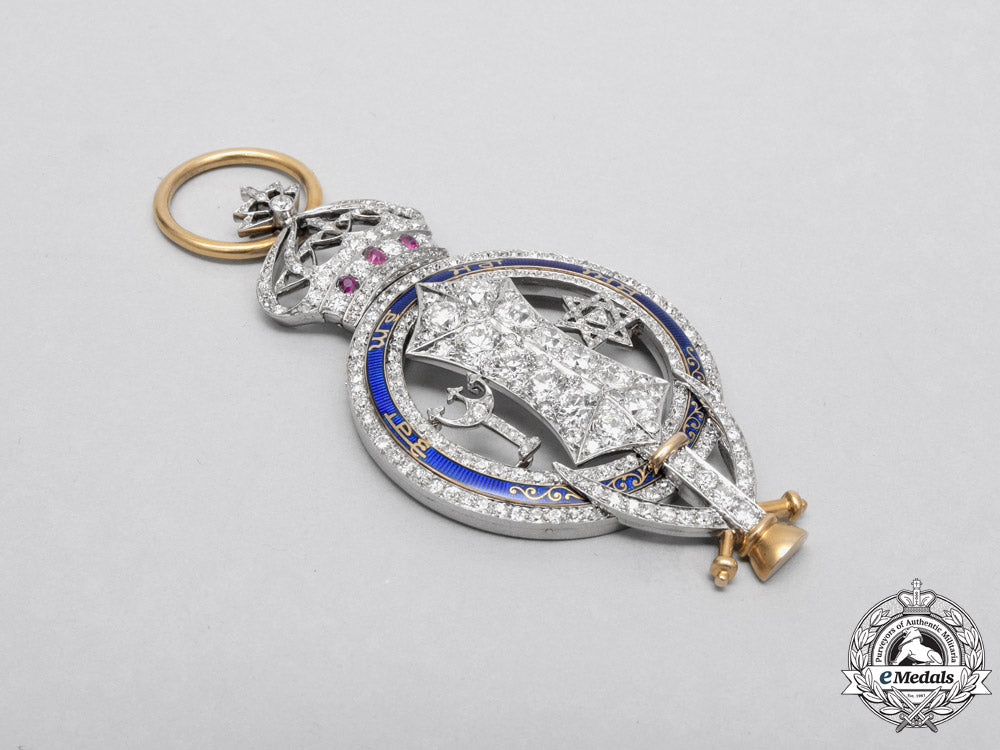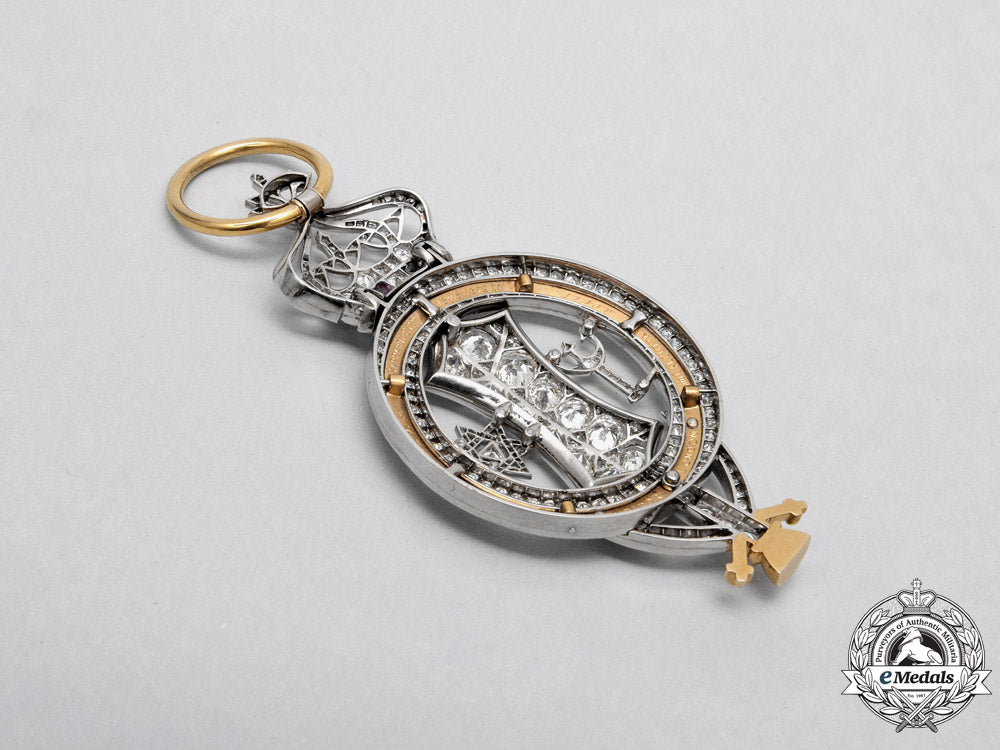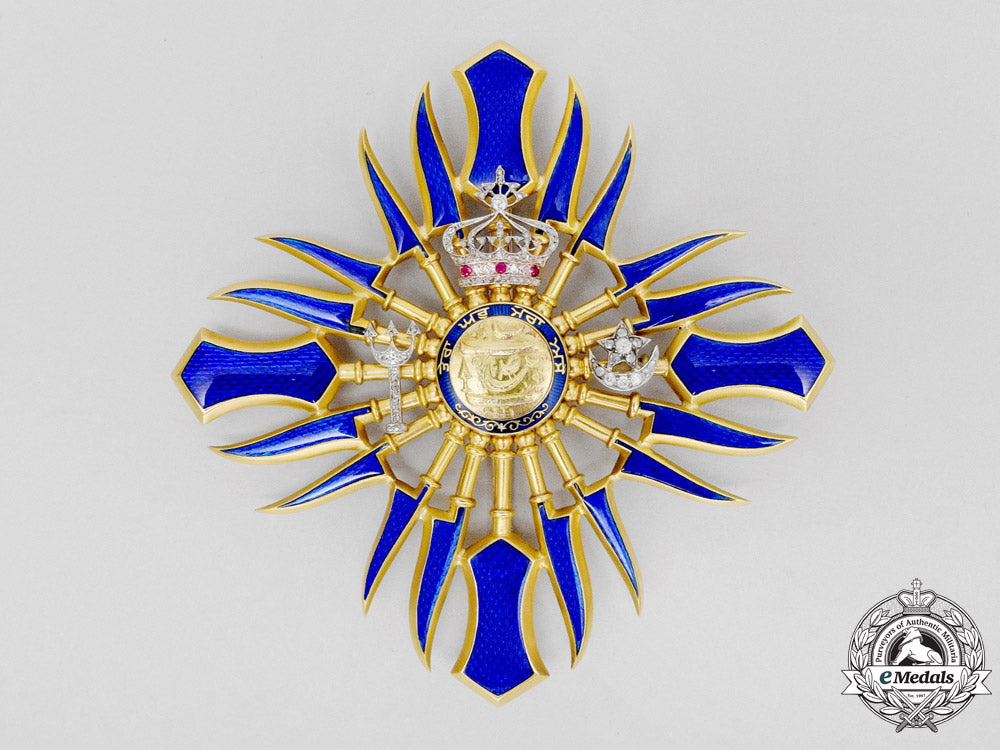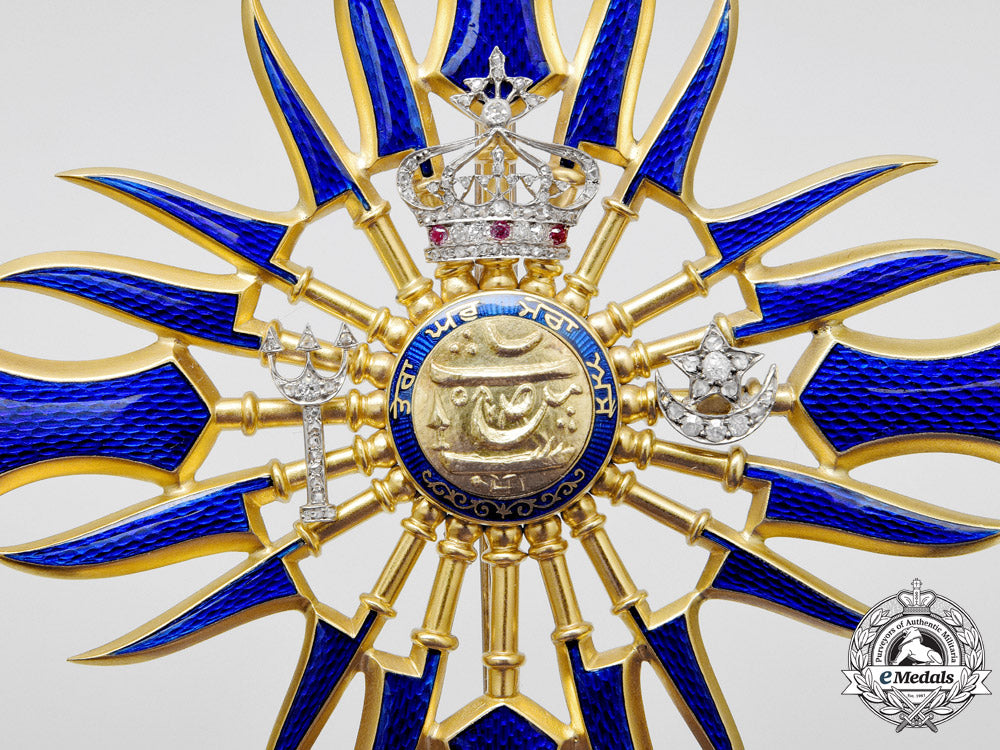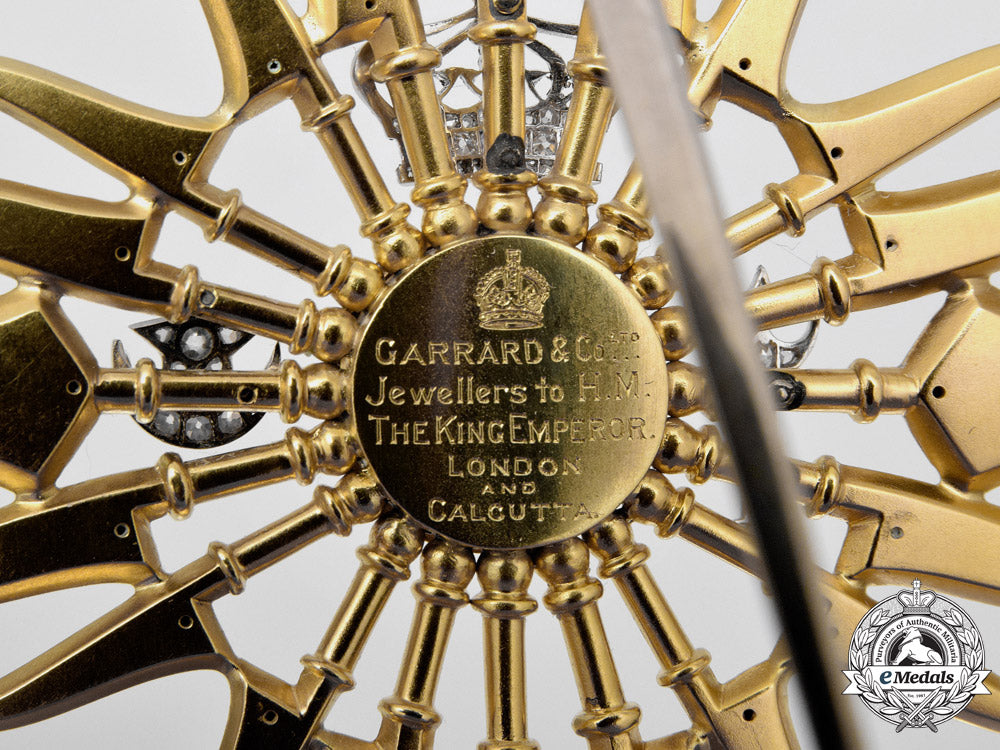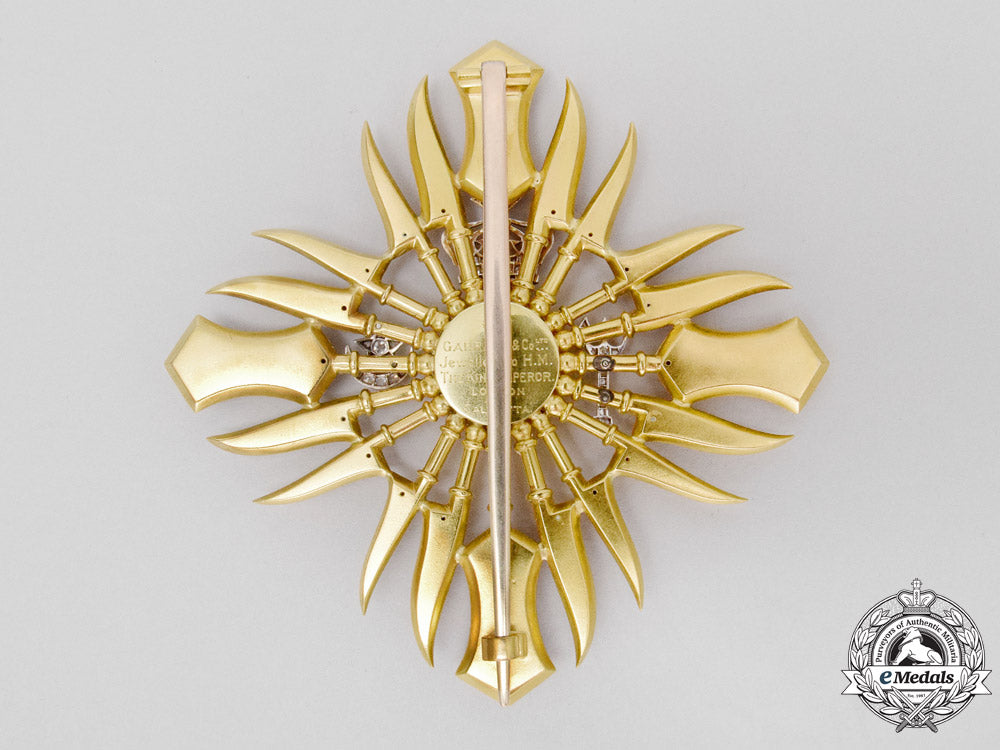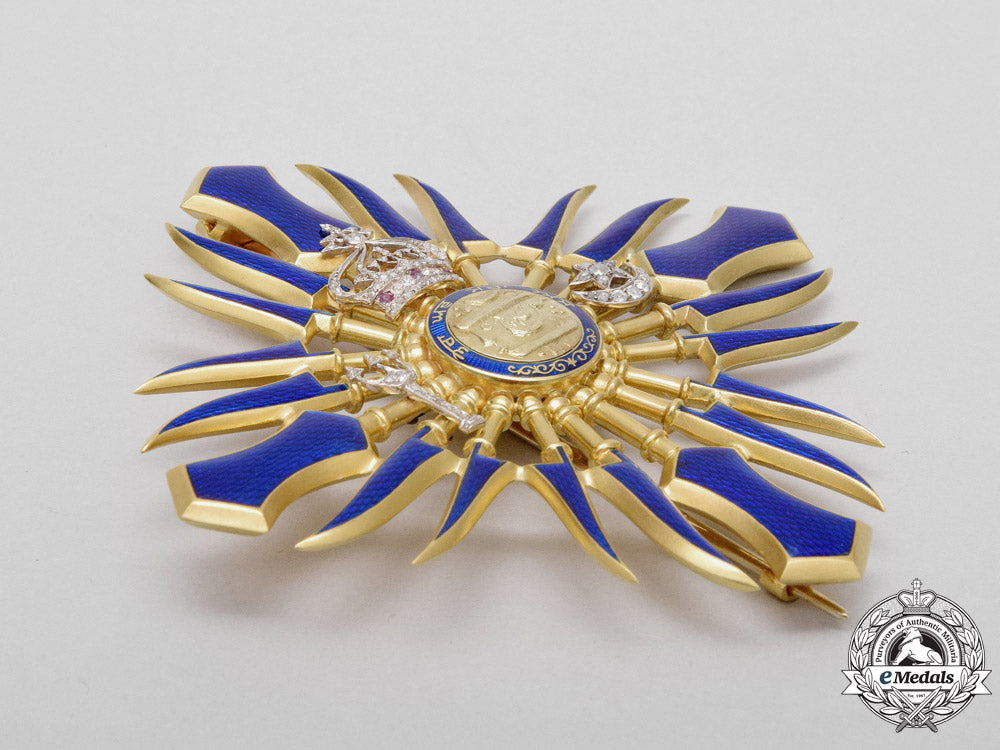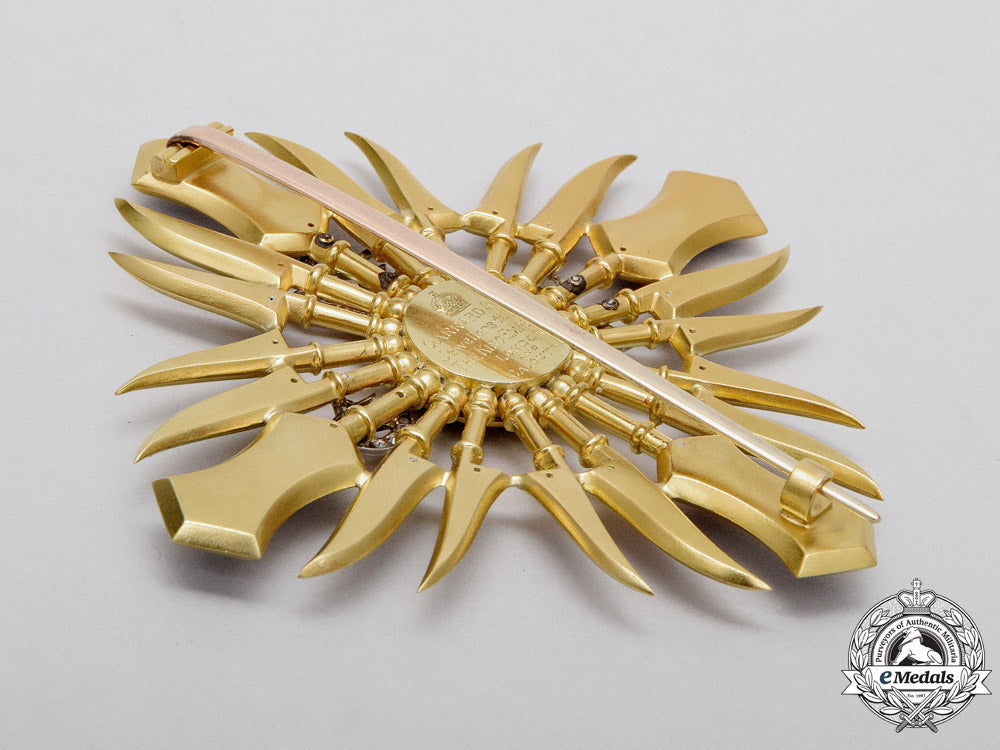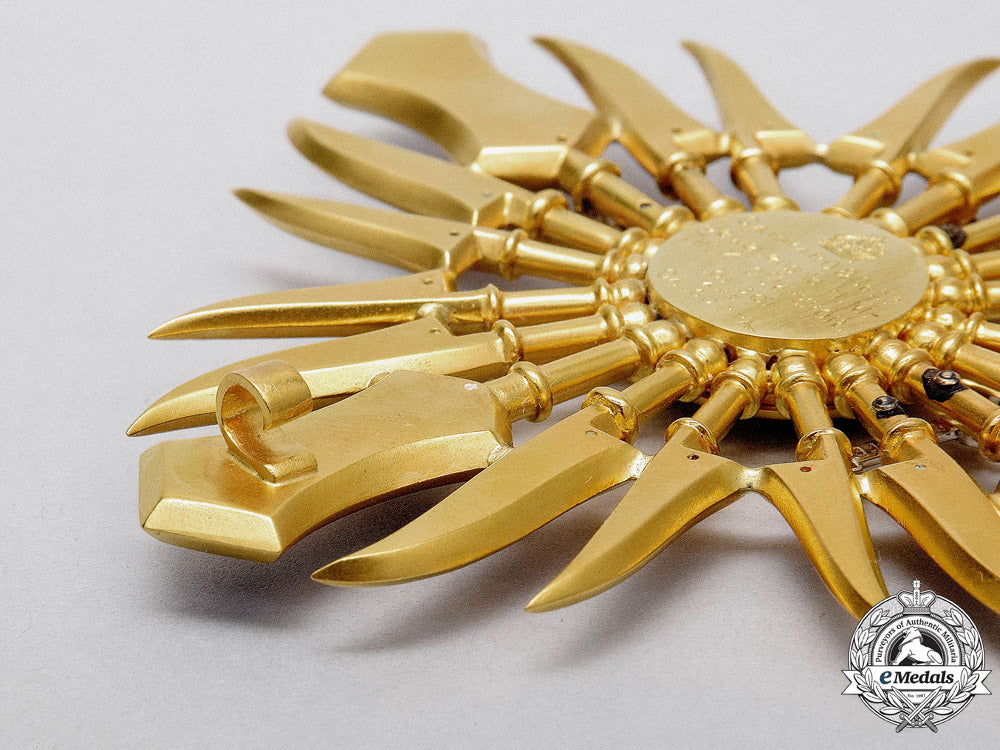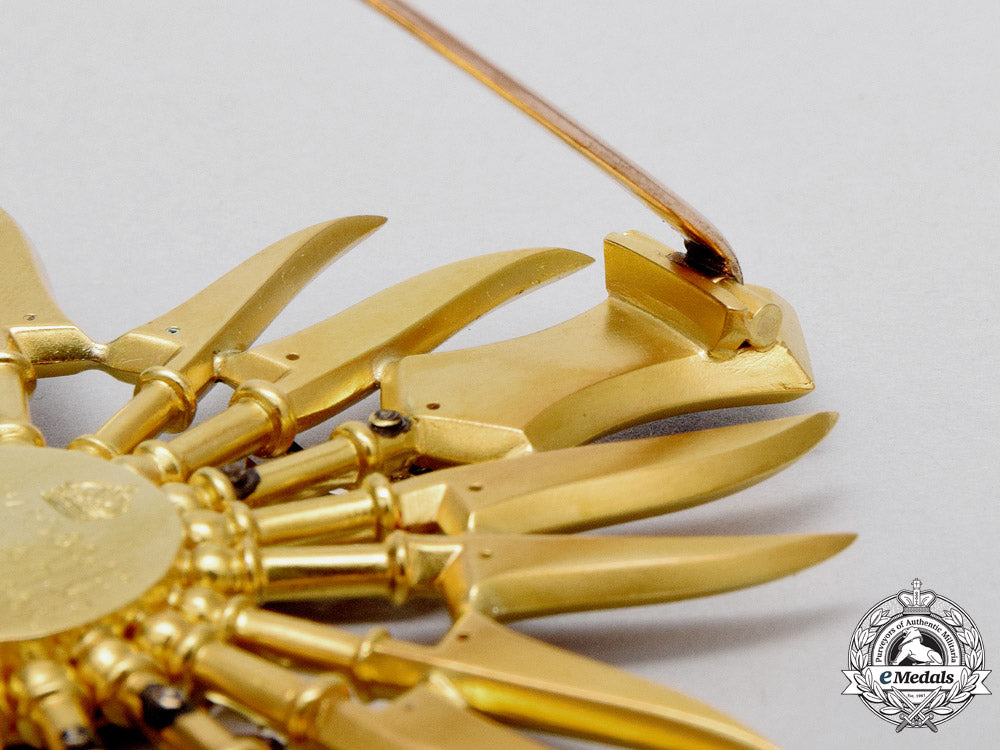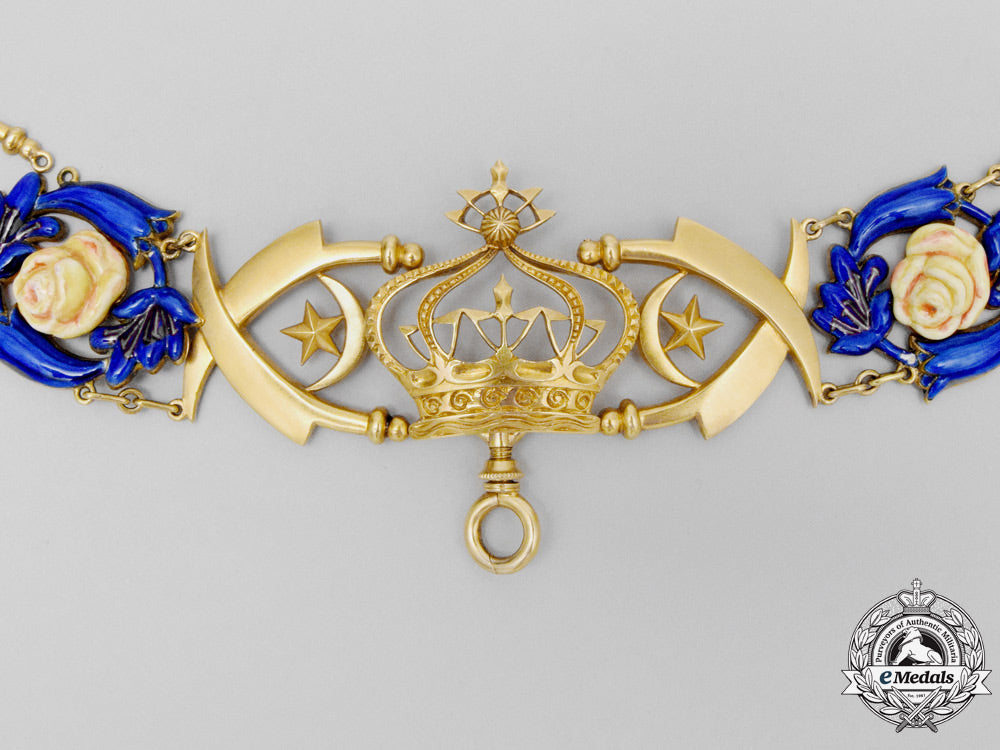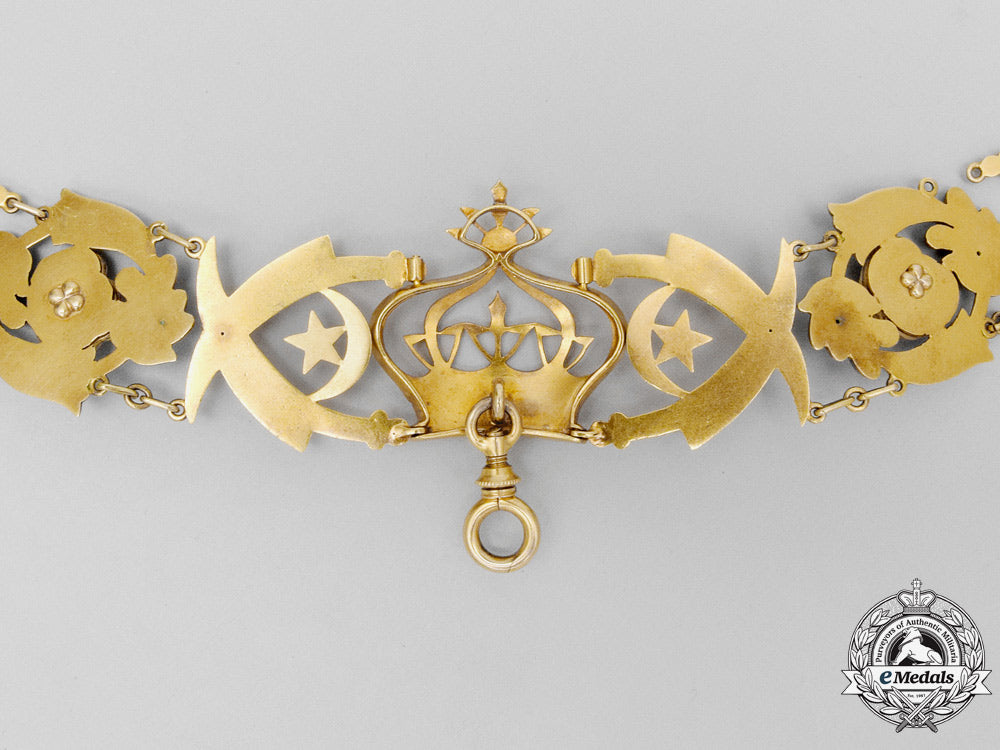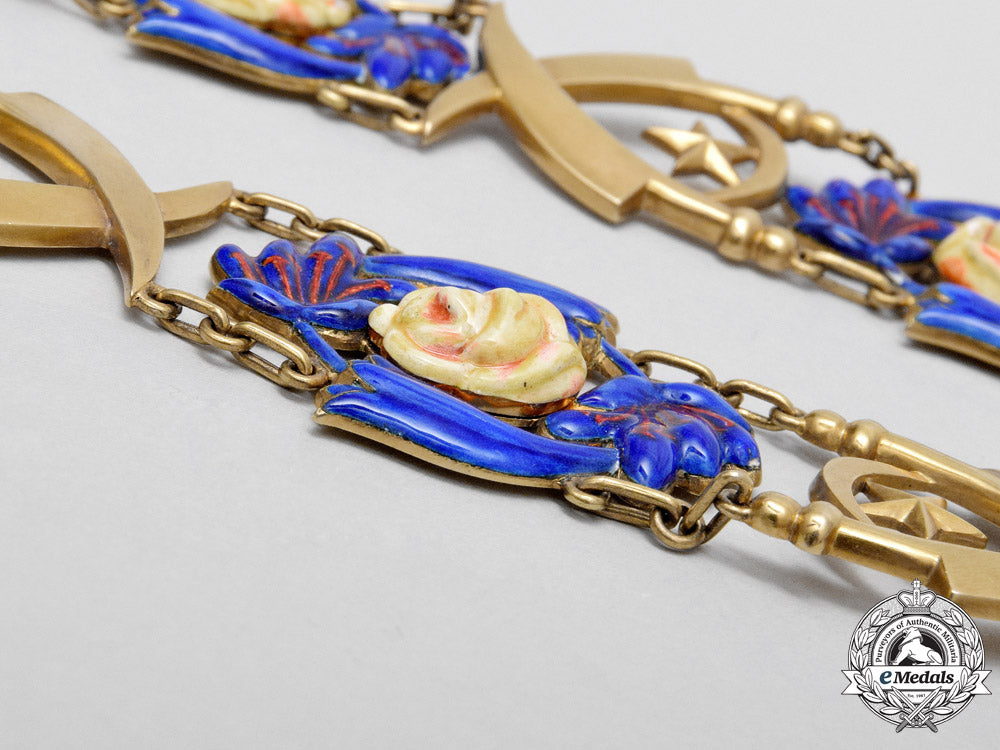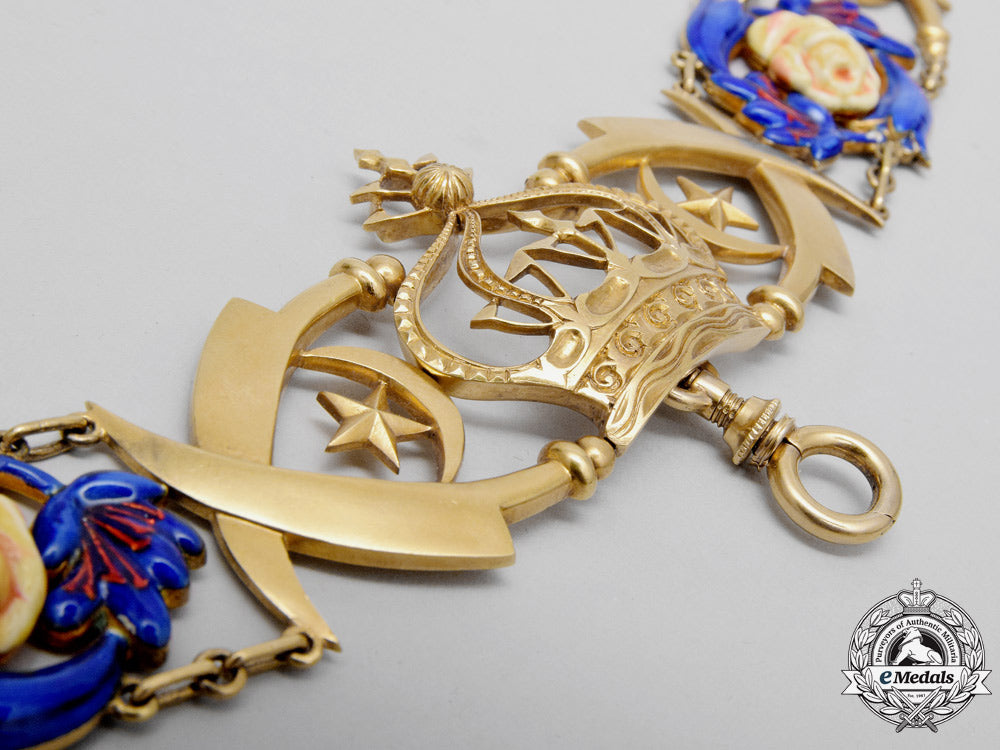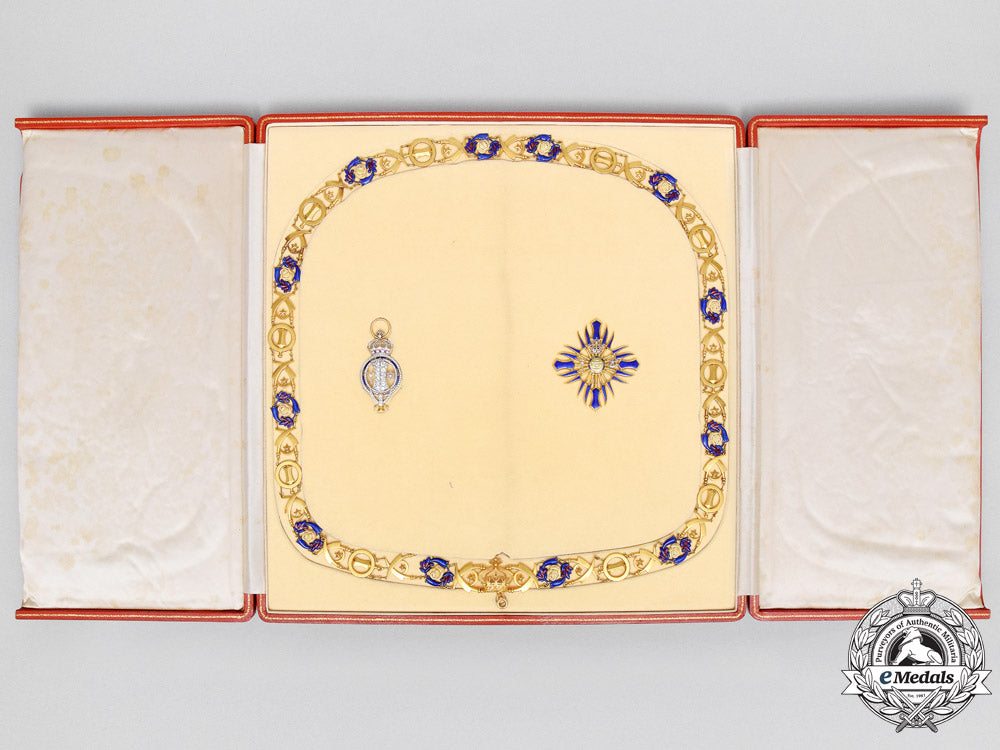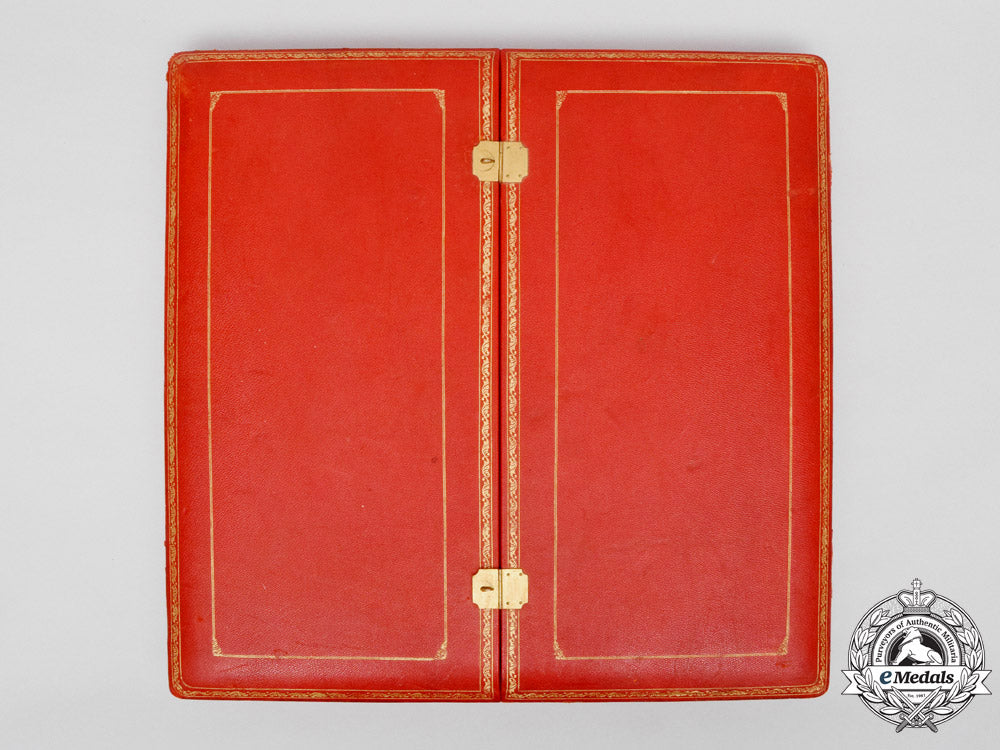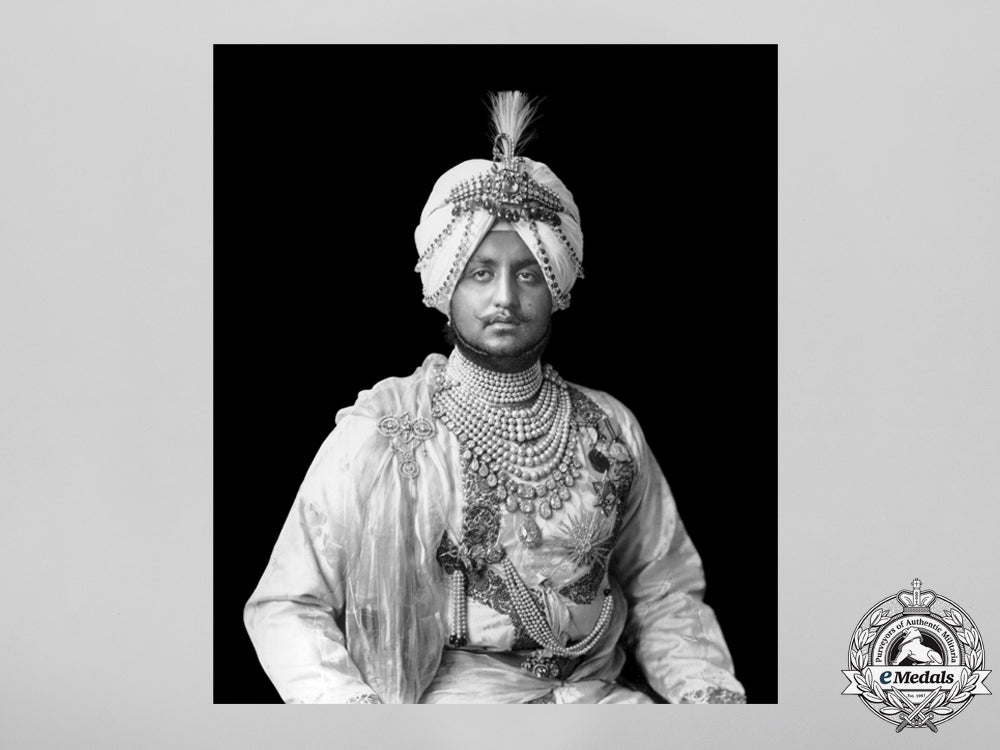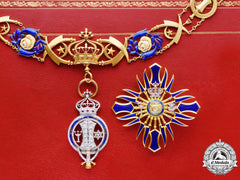
LOADING ...
In response to evolving domestic opinion, eMedals Inc has made the conscious decision to remove the presentation of German Third Reich historical artifacts from our online catalogue. For three decades, eMedals Inc has made an effort to preserve history in all its forms. As historians and researchers, we have managed sensitive articles and materials with the greatest of care and respect for their past and present social context. We acknowledge the growing sentiments put forth by the Canadian public and have taken proactive actions to address this opinion.
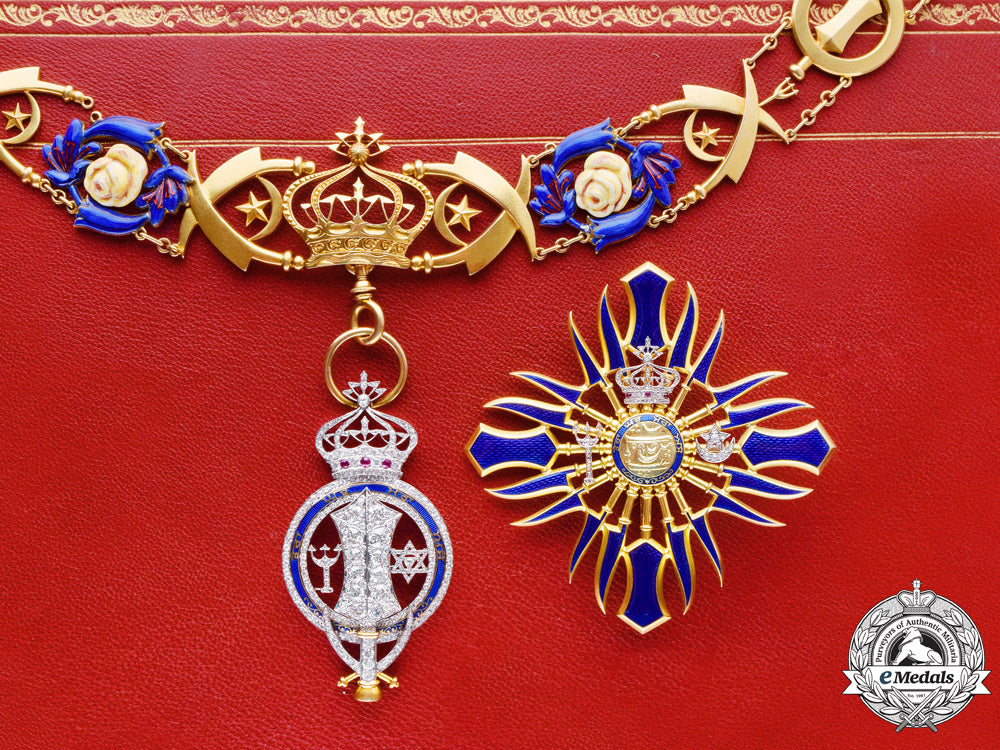
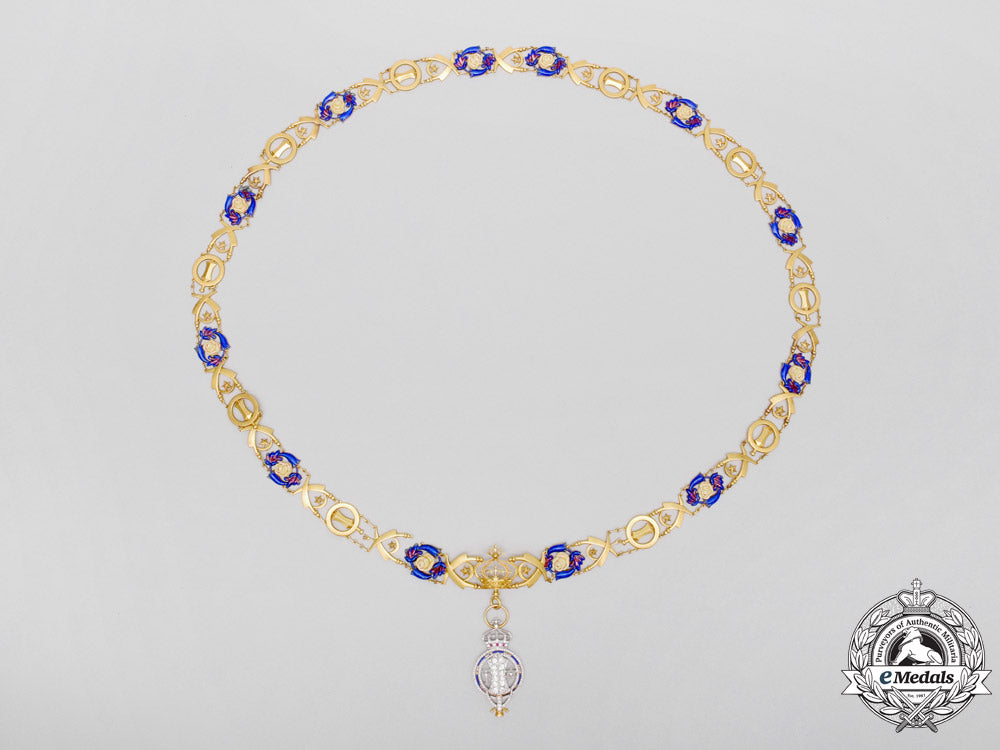
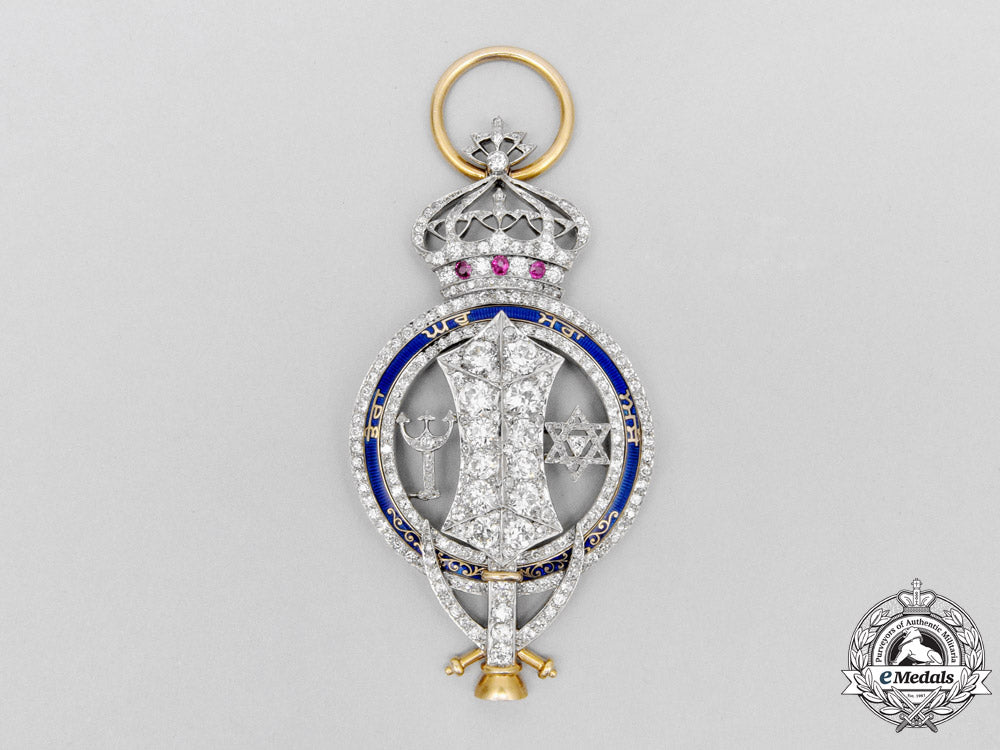
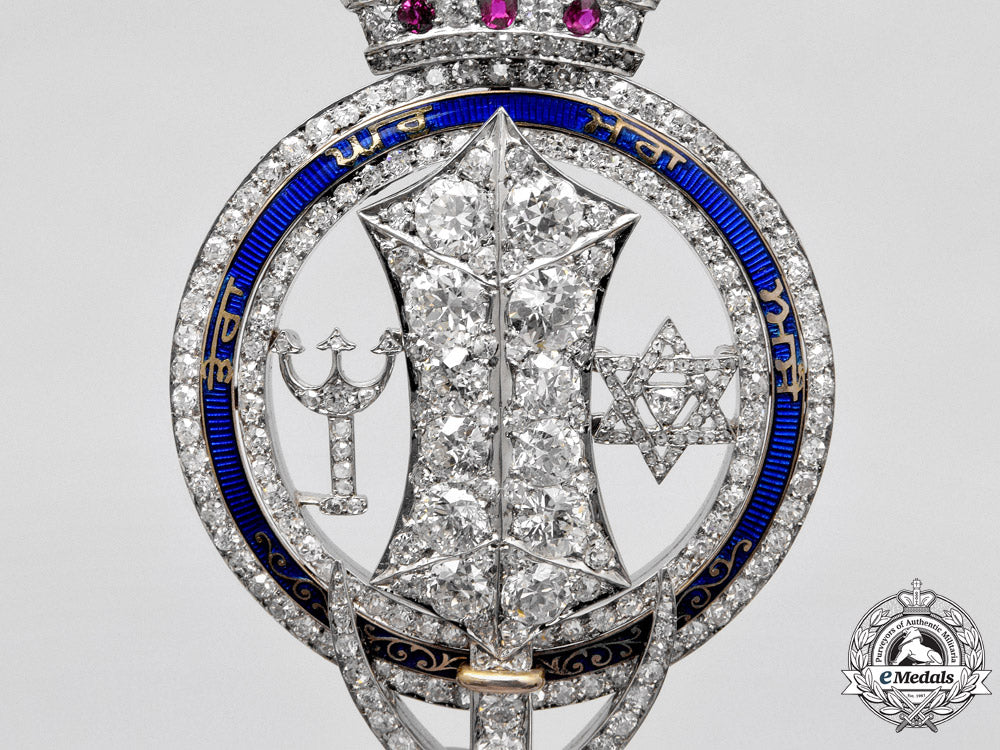
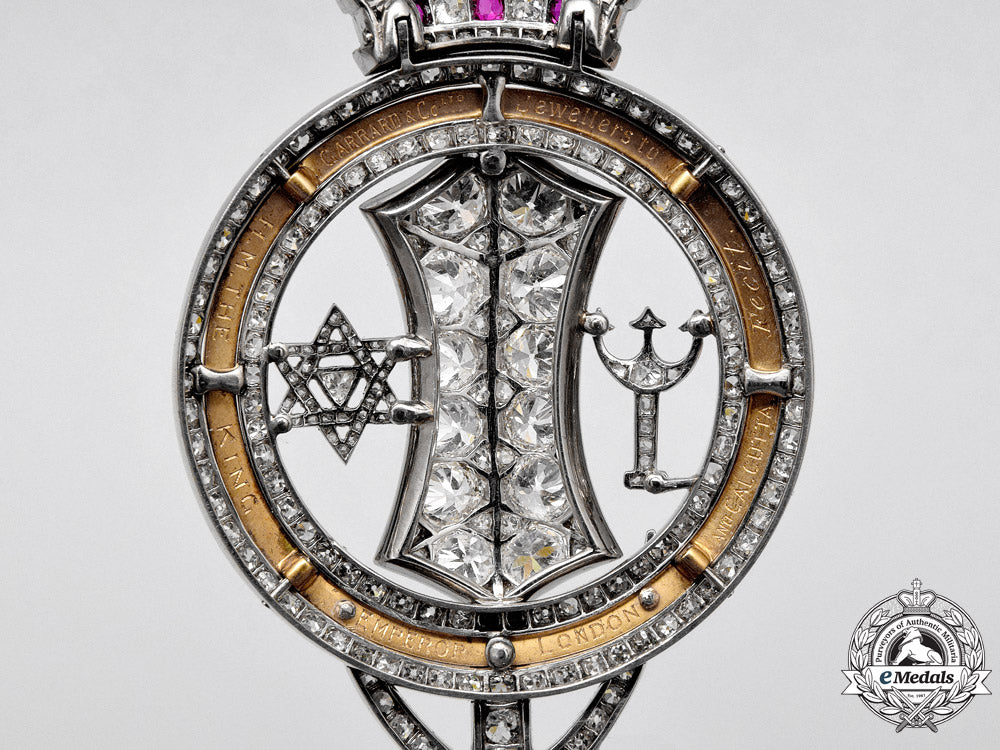
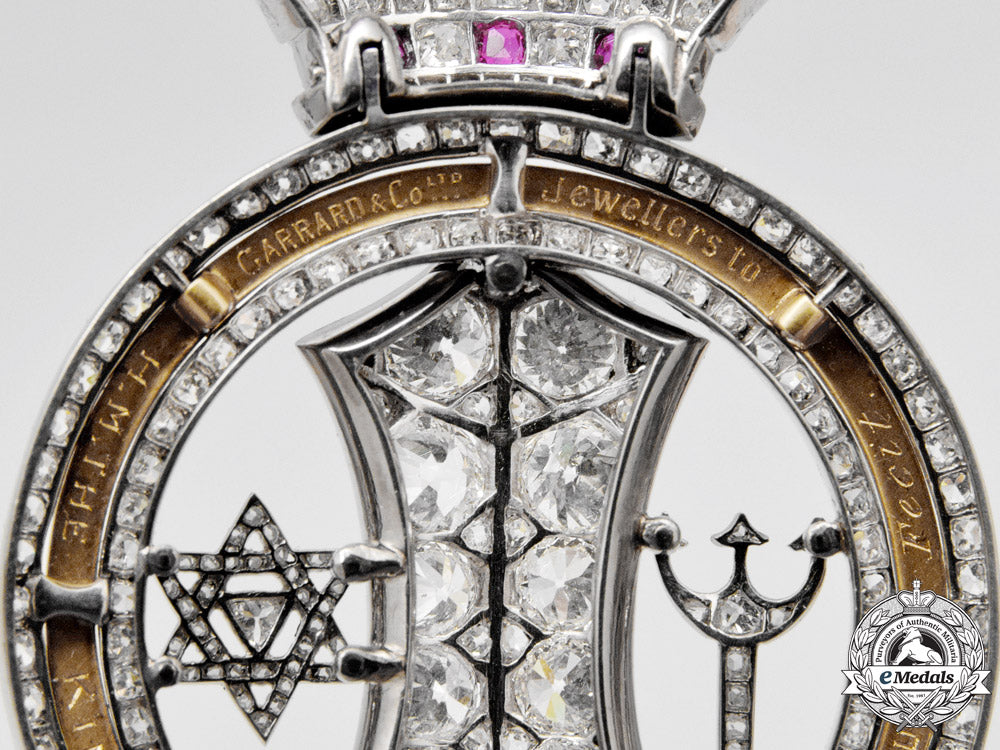
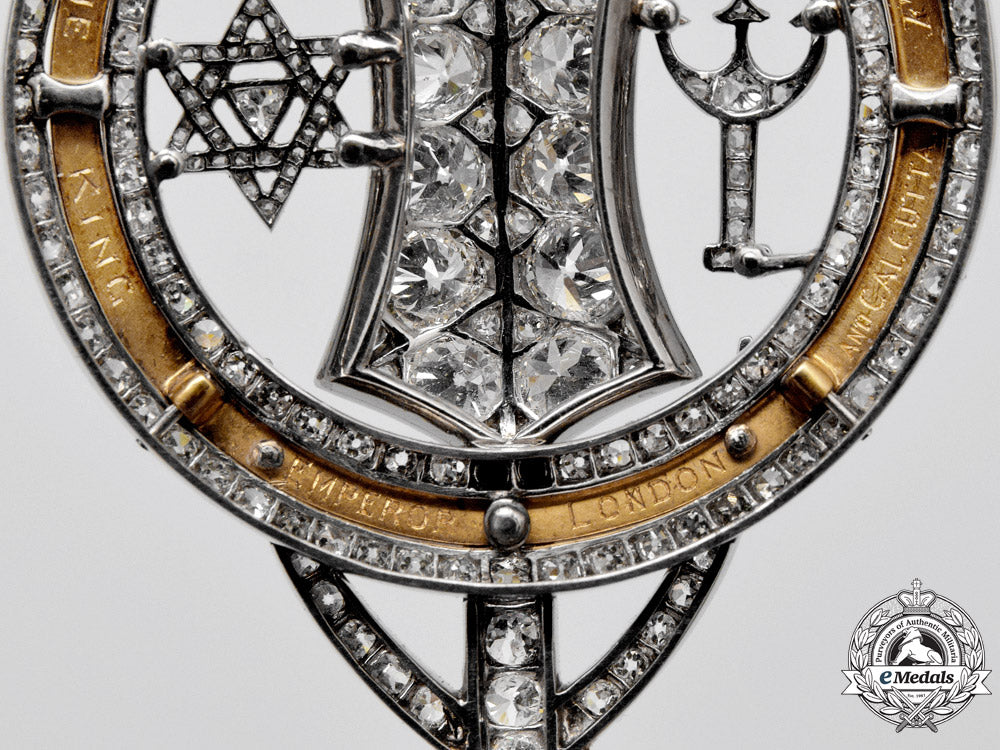
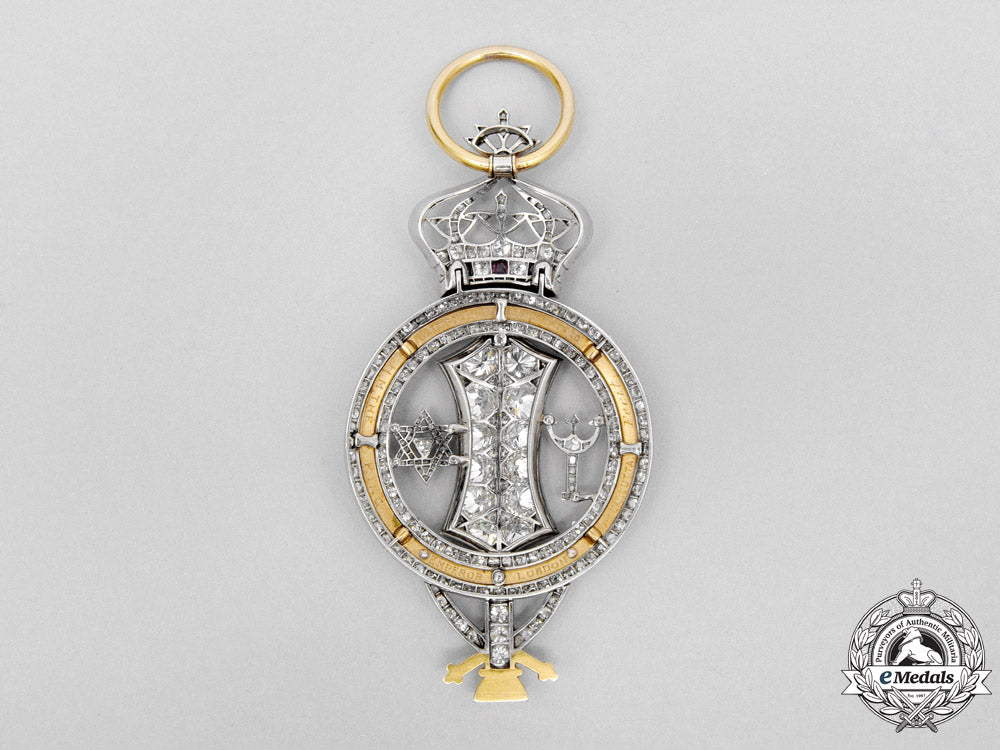
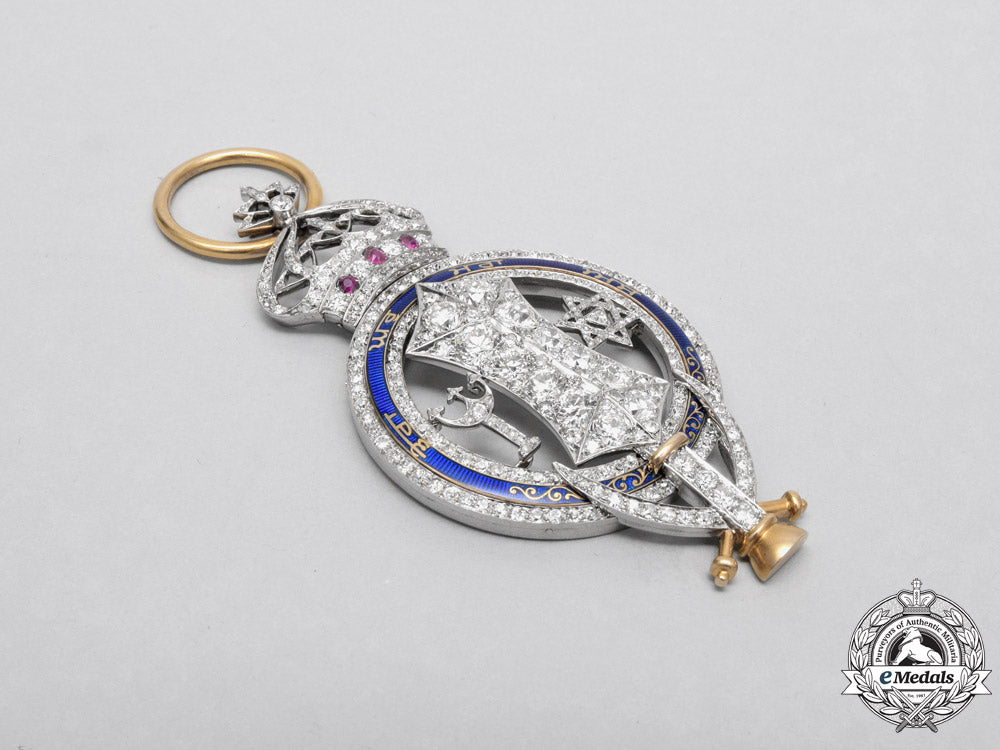
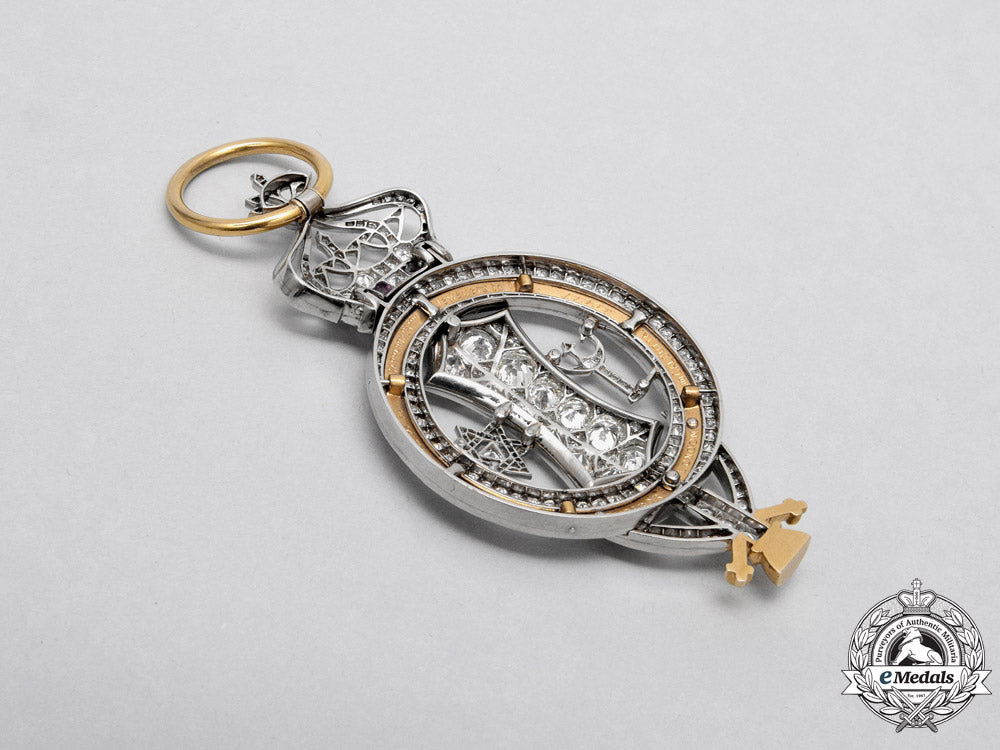
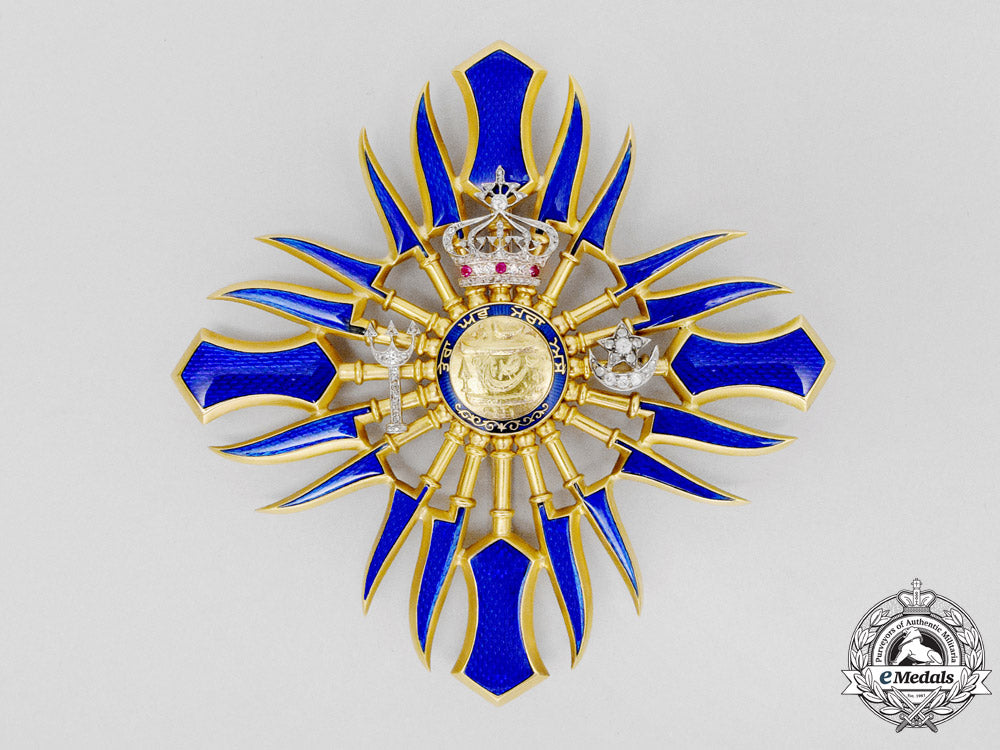
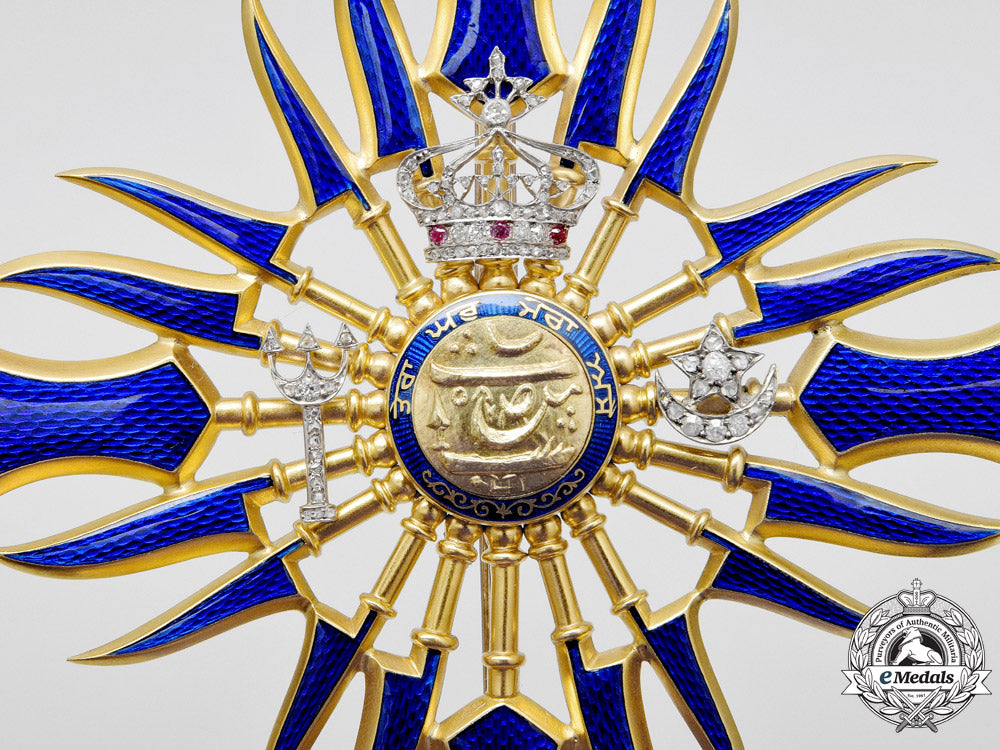
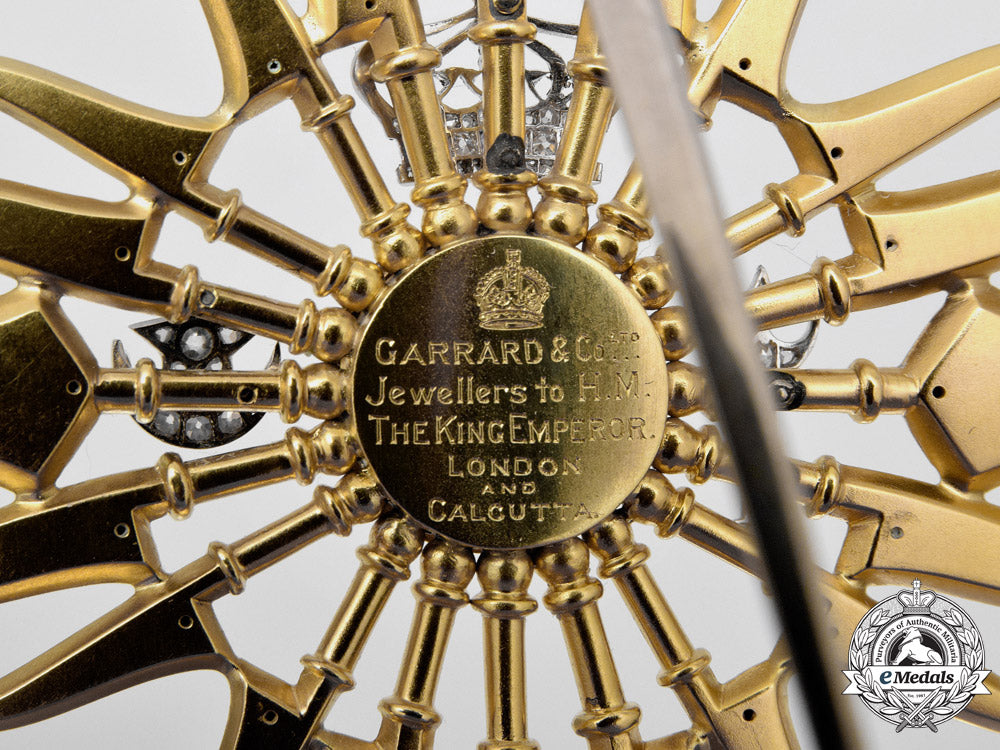
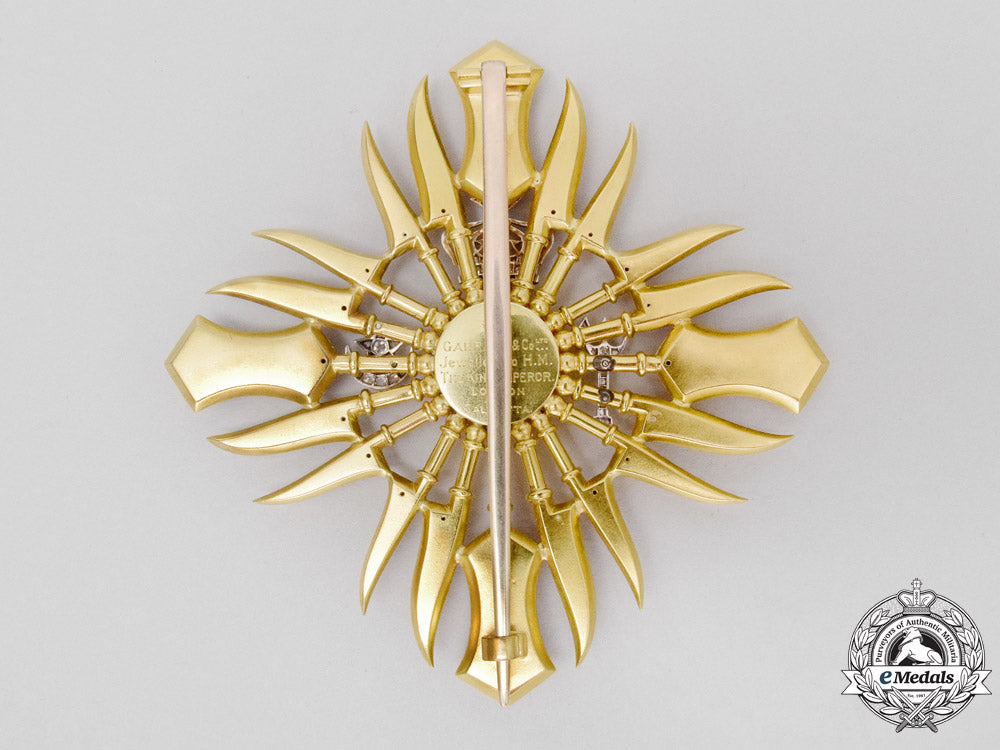
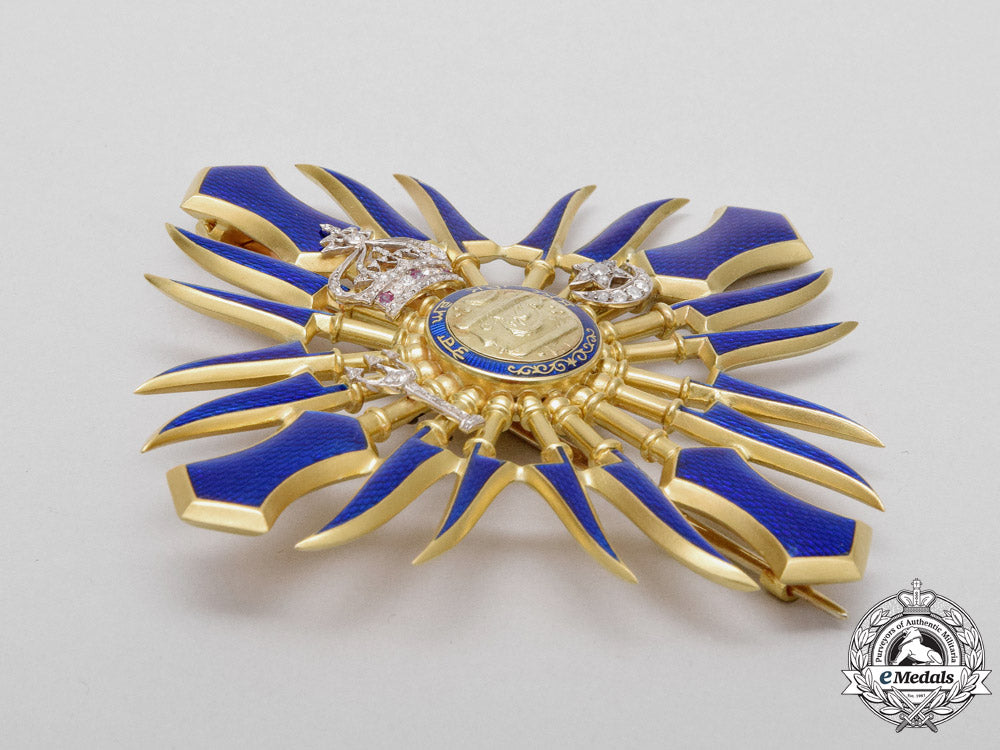
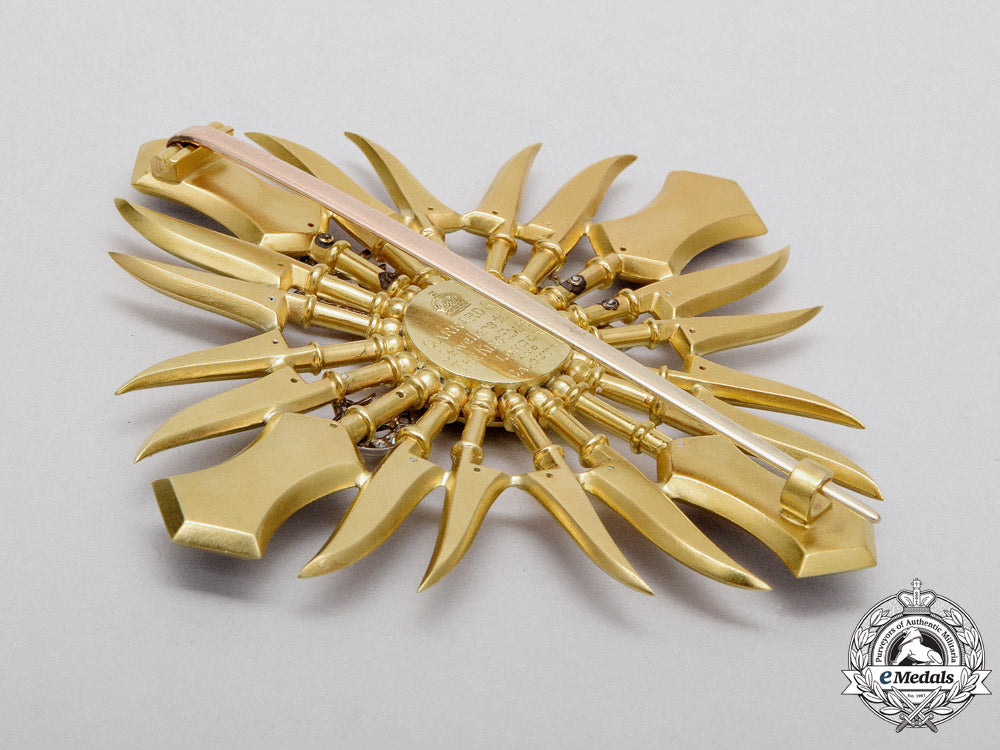
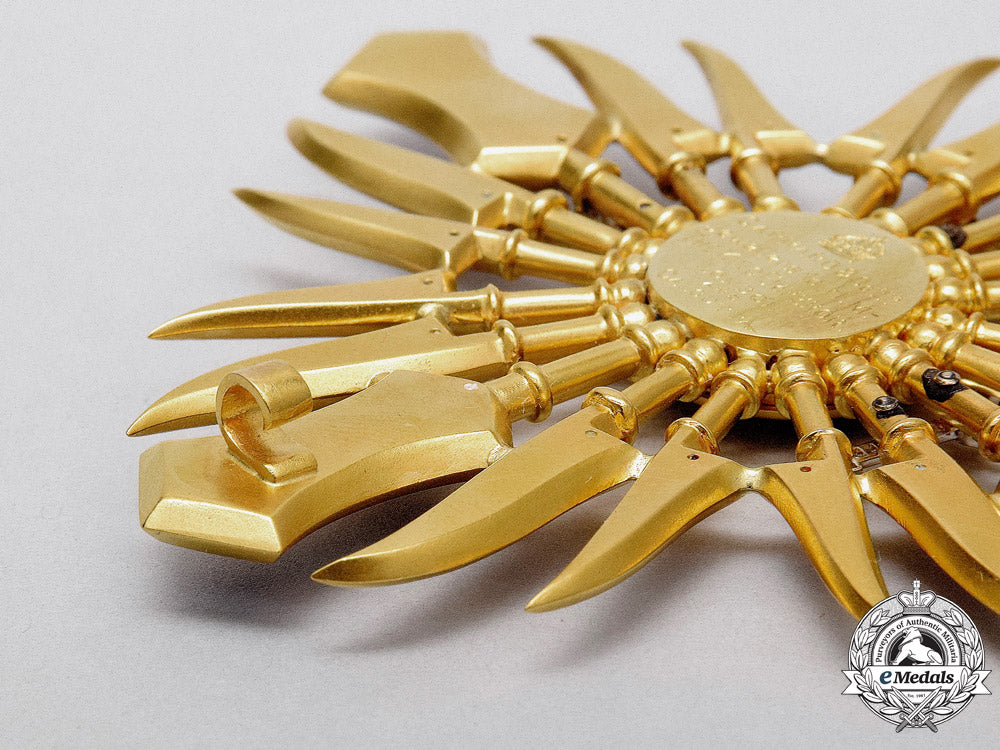
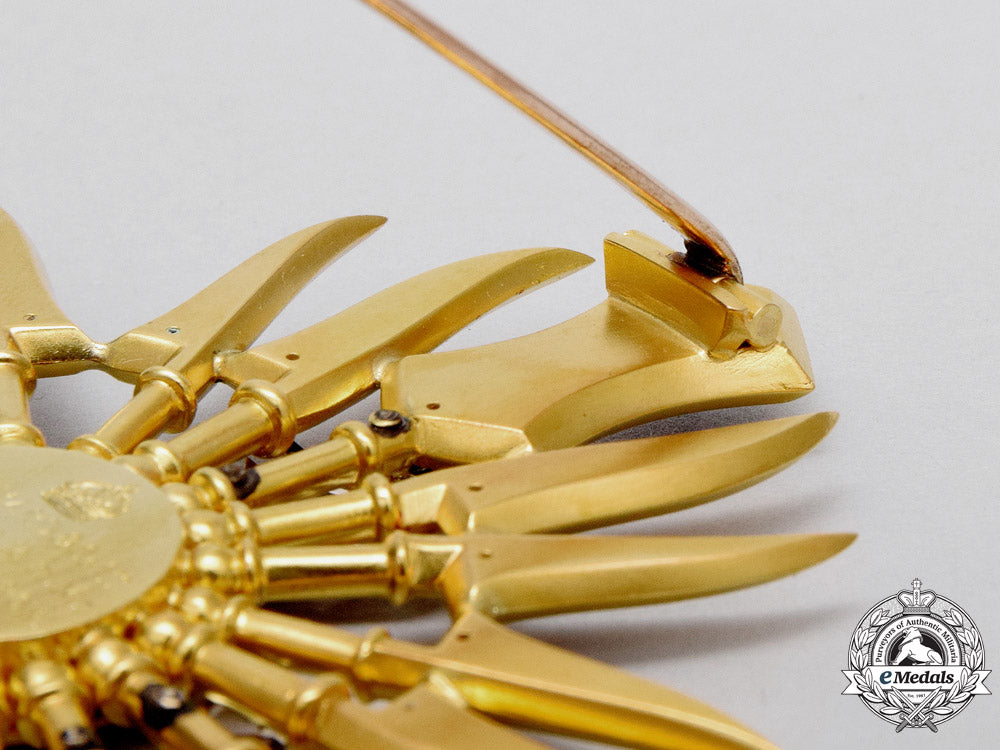
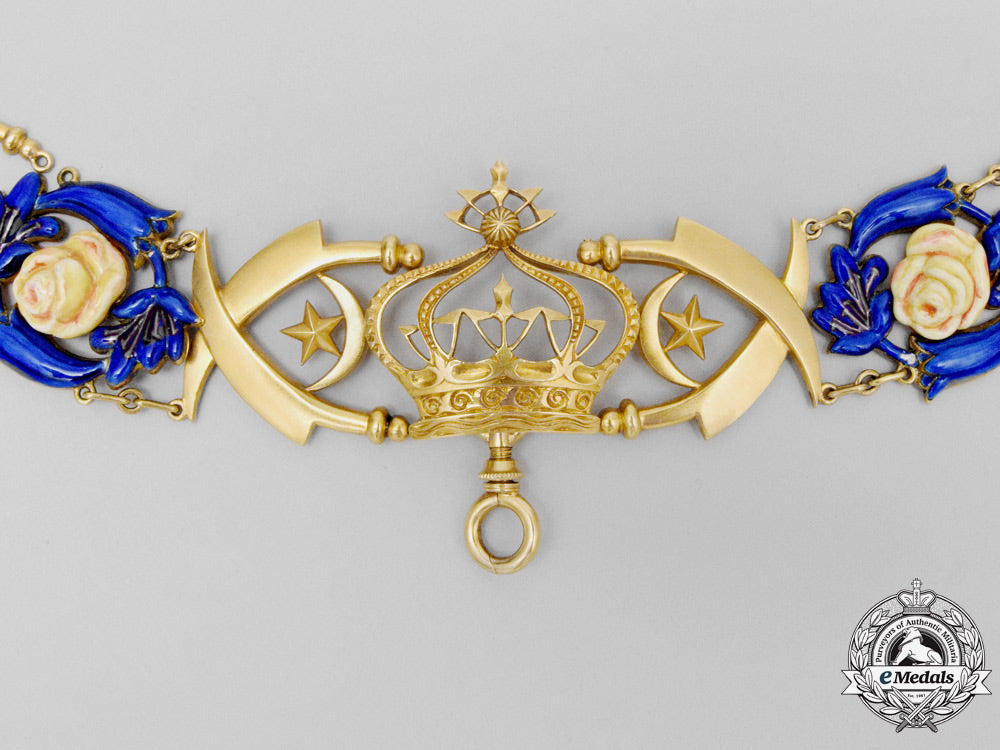
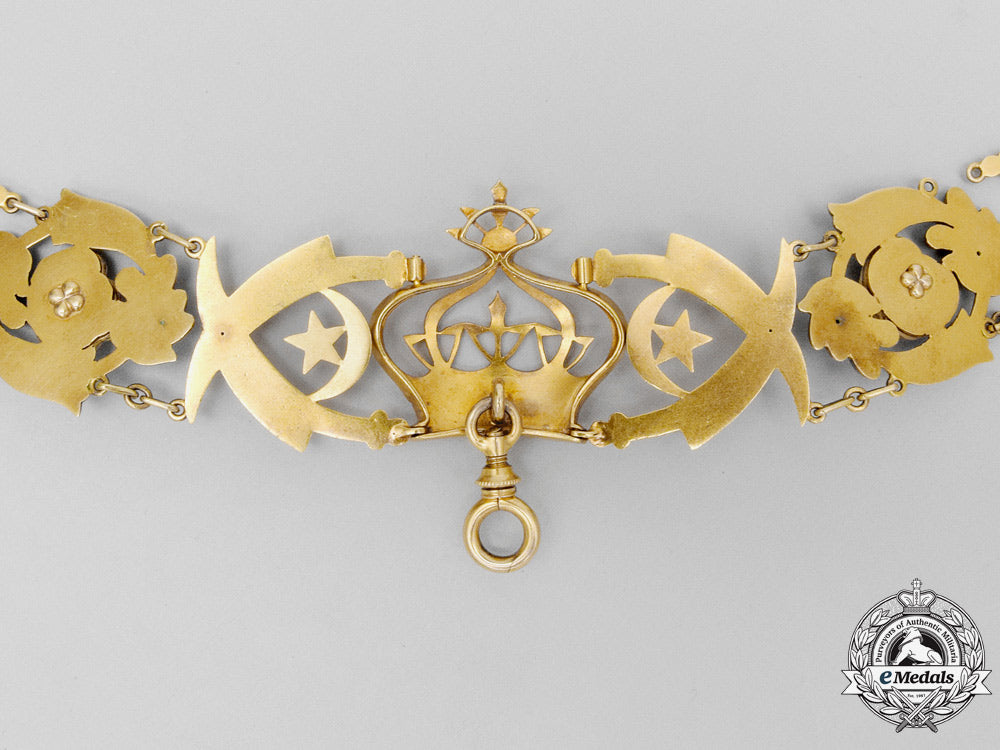
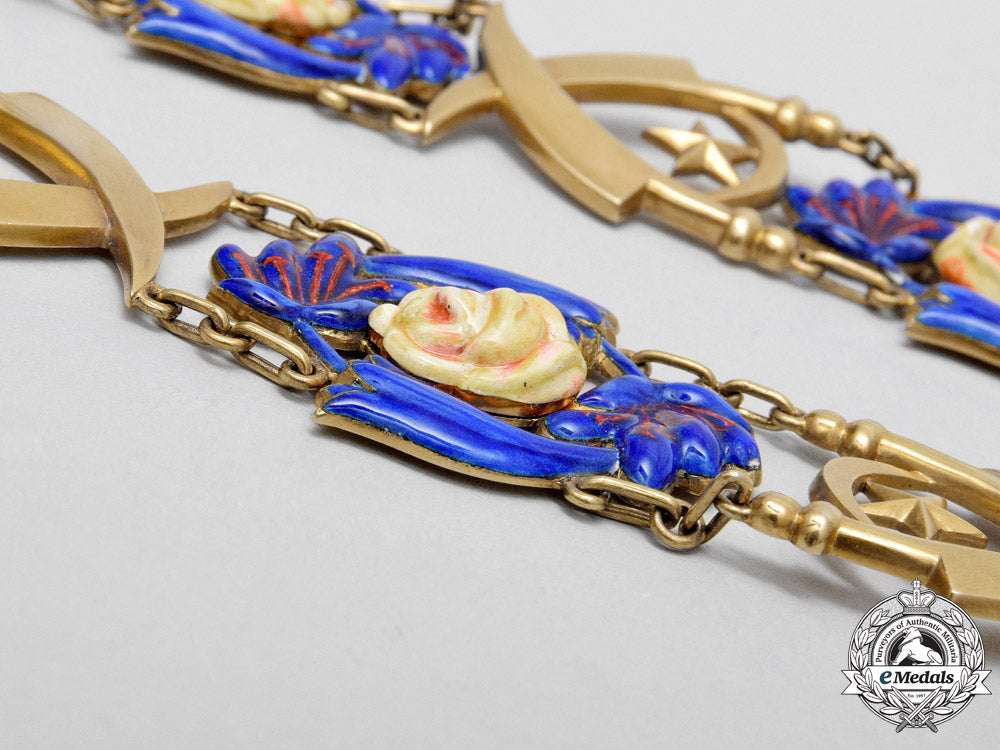
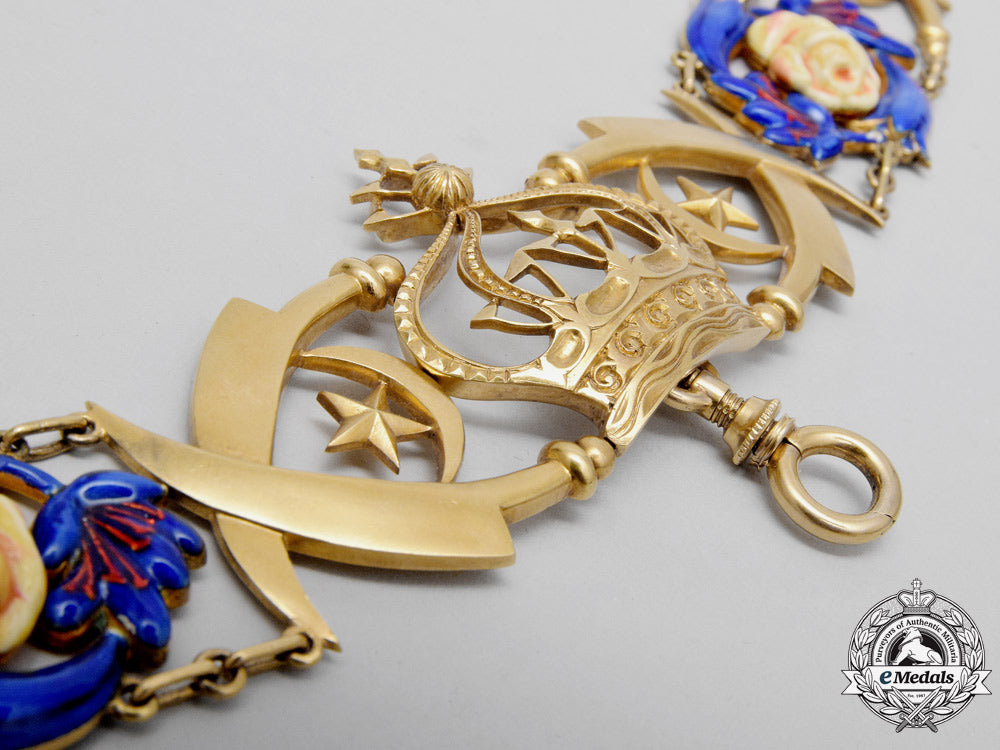
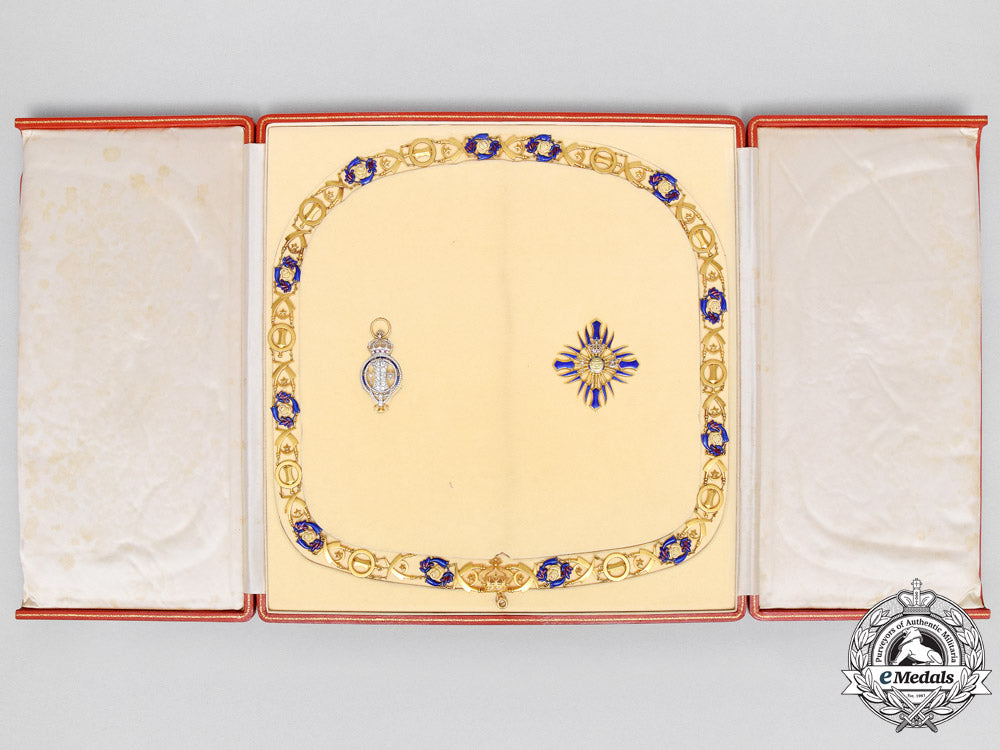
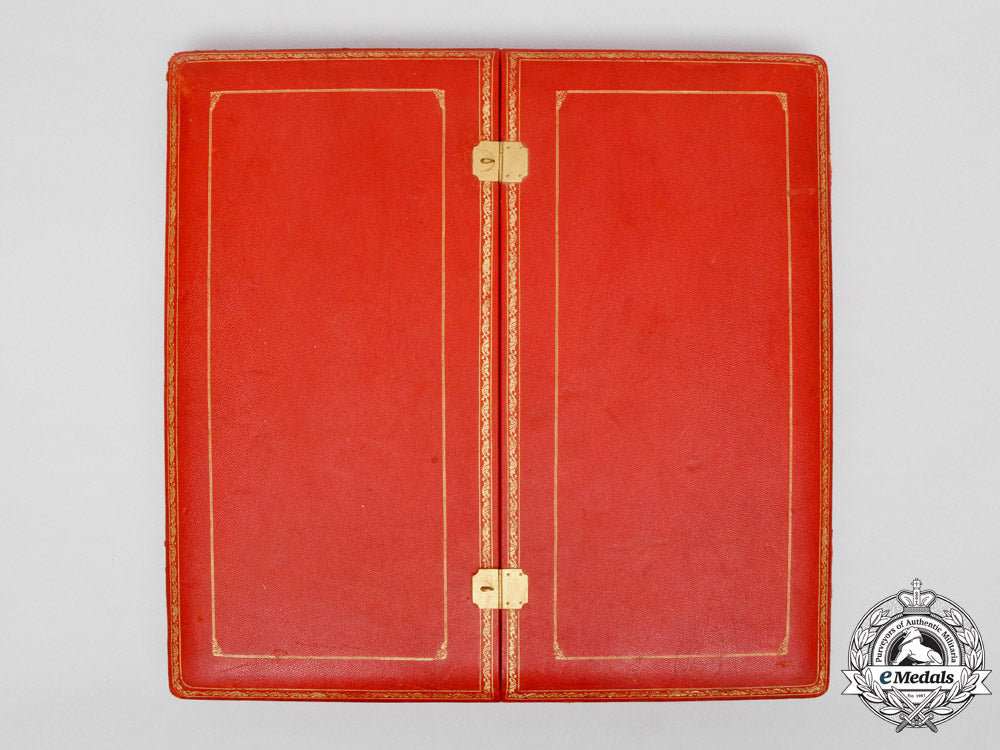
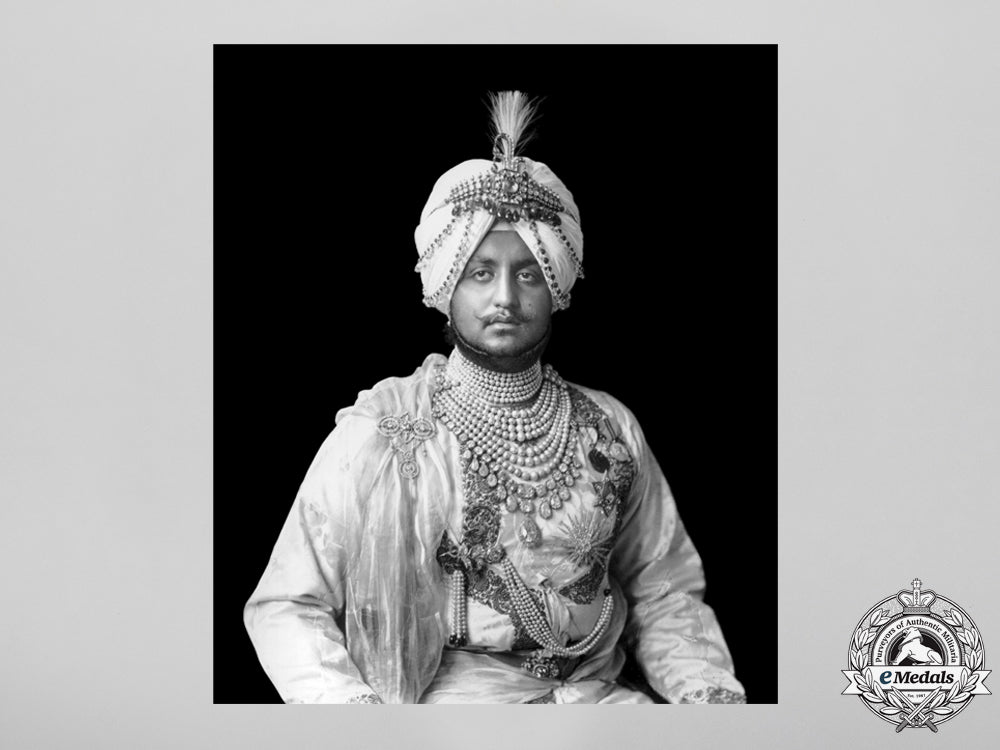
India (Patiala). The Superb Patiala Royal Family Order (Nishan-I-Phul) Of Maharaja Bhupendra Singh
India (Patiala). The Superb Patiala Royal Family Order (Nishan-I-Phul) Of Maharaja Bhupendra Singh
SKU: ITEM: W5023
0% Buyer's Premium
Current Bid:
Your Max Bid:
Bid History:
Time Remaining:
Couldn't load pickup availability
Shipping Details
Shipping Details
eMedals offers rapid domestic and international shipping. Orders received prior to 12:00pm (EST) will be shipped on the same business day.* Orders placed on Canadian Federal holidays will be dispatched the subsequent business day. Courier tracking numbers are provided for all shipments. All items purchased from eMedals can be returned for a full monetary refund or merchandise credit, providing the criteria presented in our Terms & Conditions are met. *Please note that the addition of a COA may impact dispatch time.
Shipping Details
eMedals offers rapid domestic and international shipping. Orders received prior to 12:00pm (EST) will be shipped on the same business day.* Orders placed on Canadian Federal holidays will be dispatched the subsequent business day. Courier tracking numbers are provided for all shipments. All items purchased from eMedals can be returned for a full monetary refund or merchandise credit, providing the criteria presented in our Terms & Conditions are met. *Please note that the addition of a COA may impact dispatch time.
Description
Description
An Indian State of Patiala Royal Family Order (Nishan-i-Phul) Collar Chain with Badge and Breast Star, Cased, unique, and attributed to Maharaja Sir Bhupendra Singh, GCSI, GCIE, GCVO, GBE. Of the highest possible quality and craftsmanship. With an absolute attention to detail and care, the collar set of Maharaja Sir Bhupendra Singh stands alone as a example of genuine superiority. Each individual component is meticulously made in 22 Kt yellow Gold, the twelve flowers with red, white and blue enamels added, unmarked, tested, weighing 488 grams, the chain composed of a 38.5 mm x 39 mm Gold Royal crown, designed with a swivelling suspension ring for the Badge, the chain with alternating icons consisting of ten 30 mm diameter Gold circular Quoits, each of which encompasses a dagger and twelve 29.5 mm x 39.5 mm Gold with red, white and blue enamelled flowers, each of the twenty-two aforementioned icons framed by 27 mm x 35.3 mm Gold crossed Kirpans framing a star and an upward-pointing crescent moon, the two crossed Kirpans flanking the enamelled flowers furthest from the Royal crown on either side are slightly larger at 29 mm x 43 mm, as they incorporate a trident, as well as the star and an upward-pointing crescent moon, the Kirpans totalling twenty-three in number, one of which sits directly behind the neck and is flanked by flowers on either side, each of the icons with four loops attached, two on either side, each joined together by either one or two elongated Gold links, the chain measuring approximately 1,700 mm in length, the enamels intact on all twelve flowers, with one Gold link missing on the left side of the flower where it connects to the right side of the crossed Kirpans with trident and upward-pointing crescent moon icon, to the left of the Royal crown; Badge: multi-piece construction, in 22K yellow Gold, Platinum with blue enamels, weighing 31.5 grams, obverse centre set with 12 larger round old European cut genuine Diamonds, weighing from approximately 0.50 ct to 0.75 ct each, for a total approximate weight of 7.2 carats, further encrusted with approximately 276 round old European cut genuine Diamonds, weighing approximately 7.5 carats in total weight, all diamonds are of white colour and average VS-SI clarity, the crown also set with three genuine Rubies, illustrating a dagger above two crossed Kirpans, flanked by a trident on the left and a six-pointed star on the right, an inscription in Gold on the blue enamelled garter, inscribed in Gurmukhi "Tera gharu mera asay" (Your home is my refuge) and surmounted by the Royal crown, reverse of the garter engraved with the maker mark "GARRARD & Co. Ltd. Jewellers to H.M. THE KING EMPEROR. LONDON AND CALCUTTA. Fecit.", 44.5 mm x 85 mm, designed with a large Gold ring for suspension from the Collar Chain; and Breast Star: multi-piece construction, in 22K yellow Gold with blue enamels, set with 82 genuine old European cut Diamonds and three Rubies, weighing 75.5 grams, obverse illustrating four large daggers, with each quadrant set housing four smaller knives, all of which radiate from a central medallion, inscription in Gold on the blue enamelled medallion, inscribed in Gurmukhi "Tera gharu mera asay" (Your home is my refuge), the medallion surrounded by three icons in Platinum with Diamonds, the Royal crown above, with a trident to the left and a five-pointed star resting upon an upward-facing crescent moon to the right, reverse cartouche engraved with the maker mark "GARRARD & Co. Ltd. Jewellers to H.M. THE KING EMPEROR. LONDON AND CALCUTTA.", 95 mm x 95.5 mm. All three pieces are of superb quality manufacture, with intact enamels, near mint.
In a custom hardshelled case of issue, the front designed with two doors that are each dual-hinged on either side, and when opened, expose a recessed medal bed for the Badge on the left side and a slot for the Breast Star on the right side, the two awards surrounded by a recessed channel housing the Collar Chain, the covering of the presentation area in a fine cream-coloured felt, the insides of both doors lined in a padded white satin, the doors secured in place when closed via two clasps with twist closures on top, measuring 535 mm x 535 mm x 56 mm deep, the exterior exhibiting scuff marks and light wear, with soiling evident in the padded white satin lining on both doors, case very fine.
Footnote: Although no statutes have been found for the Order, nor has it been determined as to whom it was awarded, it was almost certainly instituted by Maharaja Sir Bhupendra Singh, GCSI, GCIE, GCVO, GBE, the ruling Maharaja of the princely state of Patiala, from 1900 to 1938. It is believed that the Order was only intended for male members of Patiala or related Royal Families and it is possible that the diamond encrusted version was worn uniquely by Bhupendra Singh during grand ceremonies, while the gold and enamel version was worn by him on less formal occasions. Although no ribbon has been identified, it is possible that it would have been dark blue with gold stripes, these being the colours of Patiala State and of the decorations themselves. Maharaja Sir Bhupendra Singh, GCSI, GCIE, GCVO, GBE was born Bhupinder Singh at the Moti Bagh Palace, in Patiala, a city in southeastern Punjab, in northern India, on October 12, 1891 and was educated at Aitchison College in Lahore. At the age of nine, he succeeded as Maharaja of Patiala state upon the death of his father, Maharaja Rajinder Singh, on November 9, 1900. A Council of Regency ruled in his name until he took partial powers shortly before his eighteenth birthday on October 1, 1909 and was invested with full powers by the Viceroy of India, the 4th Earl of Minto, on November 3, 1910. He served on the General Staff in France, Belgium, Italy and Palestine during the First World War, as an Honourary Lieutenant-Colonel, later promoted to Honourary Major-General in 1918 and Honourary Lieutenant-General in 1931. He represented India at the League of Nations in 1925, and was Chancellor of the Indian Chamber of Princes for ten years, between 1926 and 1938, and was also a representative at the Round Table Conference. He married many times and had many children by his wives and concubines. Maharaja Sir Bhupinder Singh was the first man in India to own an aircraft, which he bought from the United Kingdom in the first decade of the twentieth century. He subsequently had an airstrip built at Patiala to accommodate the aircraft. He was well known for the construction of buildings with bold architectural designs in Patiala, including Kali Temple, Patiala, and Chail View Palace in the summer retreat of Kandaghat, along with Chail Palace and Oak Over and Cedar Lodge in Shimla, which now houses the Chief Minister of Himachal Pradesh and Punjab State Guest House, respectively. He is perhaps the most famous Maharaja of Patiala, best known for his extravagance and for being a cricketer and sportsman. He was also known for an exceptional collection of medals, believed to be the world's largest at the time. According to legend, Maharaja Sir Bhupinder Singh would be driven in a motorcade of twenty Rolls Royce cars. He had a unique monorail system built in Patiala known as Patiala State Monorail Trainways. He had the world's highest cricket pitch built, at 2,443 metres in 1893 at Chail. His then Education Minister, Pt. Makhan Lal Banerjee, accompanied him to the summer capital of Chail and was also a well-known referee in cricket. His cricket and polo teams, Patiala XI and Patiala Tigers, were among the best of India. He was Captain of the Indian cricket team that visited England in 1911 and played in twenty-seven first-class cricket matches between 1915 and 1937. In the 1926-1927 season, he played as a member of Marylebone Cricket Club. He donated the Ranji Trophy in honour of Kumar Shri Ranjitsinhji, Jam Sahib of Nawanagar. He was selected as the Captain of India on its first Test Tour of England in 1932, but dropped out for reasons of health two weeks before departure, with the Maharaja of Porbandar taking his place. Maharaja Sir Bhupendra Singh's other noted accomplishments included: donating most of the buildings of Chail Military School at Patiala to the Government of India, founding the State Bank of Patiala in 1917, serving as the Chancellor of the Chamber of Princes from 1926 to 1931 and working tirelessly for his subjects' betterment, which included the introduction of many social reforms in Patiala. He married five times and had numerous consorts.
From those unions, he sired an estimated eighty-eight children of whom at least fifty-three survived him. He was the proud owner of the world-famous Patiala Necklace, manufactured by the famous brand Cartier SA. His wife, Maharani Bakhtawar Kaur, presented Queen Mary with a magnificent necklace on behalf of the Ladies of India during the Delhi Durbar of 1911, to mark the first visit to India by any Queen Empress. Of his five married wives, Maharani Vimla Kaur of Patiala, his third Dowger Maharani from Ubbewal was his favourite wife. She attended all the ceremonies with him and travelled abroad. Maharaja Sir Bhupendra Singh died on March 23, 1938, in Patiala, at the age of 46 and was succeeded by Maharaja Yuvraj Yadavindra Singh. An Unani College at Patiala, namely Bhupinder Tibbi College, was named after him. Maharaja Sir Bhupendra Singh was the recipient of twelve British awards, including: the Delhi Durbar Gold Medal (1903); the Delhi Durbar Gold Medal (1911); the King George V Coronation Medal (1911); the Knight Grand Commander of the Order of the Indian Empire (GCIE) (1911); three First World War medals: 1914 Star, the British War Medal and the Victory Medal, as well as being Mentioned in Despatches in 1919; the Knight Grand Cross of the Order of the British Empire (GBE) (1918); the Knight Grand Commander of the Order of the Star of India (GCSI) (for war services, New Year Honours, 1921); the Knight Grand Cross of the Royal Victorian Order (GCVO) (1922), the King George V Silver Jubilee Medal (1935); and the King George VI Coronation Medal (1937). In addition, he was the recipient of twelve Foreign awards, including: the Grand Cross of the Order of the Crown of Italy (1918); the Grand Cordon of the Order of the Nile of Egypt (1918); the Grand Cordon of the Order of Leopold of Belgium (1918); the Grand Cross of the Order of the Crown of Romania (1922); the Grand Cross of the Order of the Redeemer of Greece (1926); the Grand Cross of the Order of Charles III of Spain (1928); the Grand Cross of the Order of the White Lion of Czechoslovakia (1930); the Grand Officer of the Legion d'Honneur of France (1918); the Grand Cross of the Legion d'Honneur of France (1930); the Grand Cross of the Order of Saint Maurice and Saint Lazarus of Italy (1935); the Grand Cross of the Order of Saint Gregory the Great of the Vatican (1935); and the Grand Cross of the Order of Dannebrog of Denmark (undated). Maharaja Sir Bhupendra Singh held nine titles throughout his lifetime, including: Sri Yuvaraja Sahib Bhupinder Singhji (1891-1900); His Highness Farzand-i-Khas-i-Daulat-i-Inglishia, Mansur-i-Zaman, Amir ul-Umara, Maharajadhiraja Raj Rajeshwar, 108 Sri Maharaja-i-Rajgan, Maharaja Bhupinder Singh, Mahendra Bahadur, Yadu Vansha Vatans Bhatti Kul Bushan, Maharaja of Patiala (1900-1911); His Highness Farzand-i-Khas-i-Daulat-i-Inglishia, Mansur-i-Zaman, Amir ul-Umara, Maharajadhiraja Raj Rajeshwar, 108 Sri Maharaja-i-Rajgan, Maharaja Sir Bhupinder Singh, Mahendra Bahadur, Yadu Vansha Vatans Bhatti Kul Bushan, Maharaja of Patiala, GCIE (1911-1914); Lieutenant-Colonel His Highness Farzand-i-Khas-i-Daulat-i-Inglishia, Mansur-i-Zaman, Amir ul-Umara, Maharajadhiraja Raj Rajeshwar, 108 Sri Maharaja-i-Rajgan, Maharaja Sir Bhupinder Singh, Mahendra Bahadur, Yadu Vansha Vatans Bhatti Kul Bushan, Maharaja of Patiala, GCIE (1914-1918); Major-General His Highness Farzand-i-Khas-i-Daulat-i-Inglishia, Mansur-i-Zaman, Amir ul-Umara, Maharajadhiraja Raj Rajeshwar, 108 Sri Maharaja-i-Rajgan, Maharaja Sir Bhupinder Singh, Mahendra Bahadur, Yadu Vansha Vatans Bhatti Kul Bushan, Maharaja of Patiala, GCIE, GBE (1918-1921); Major-General His Highness Farzand-i-Khas-i-Daulat-i-Inglishia, Mansur-i-Zaman, Amir ul-Umara, Maharajadhiraja Raj Rajeshwar, 108 Sri Maharaja-i-Rajgan, Maharaja Sir Bhupinder Singh, Mahendra Bahadur, Yadu Vansha Vatans Bhatti Kul Bushan, Maharaja of Patiala, GCSI, GCIE, GBE (1921-1922); Major-General His Highness Farzand-i-Khas-i-Daulat-i-Inglishia, Mansur-i-Zaman, Amir ul-Umara, Maharajadhiraja Raj Rajeshwar, 108 Sri Maharaja-i-Rajgan, Maharaja Sir Bhupinder Singh, Mahendra Bahadur, Yadu Vansha Vatans Bhatti Kul Bushan, Maharaja of Patiala, GCSI, GCIE, GCVO, GBE (1922-1931); Lieutenant-General His Highness Farzand-i-Khas-i-Daulat-i-Inglishia, Mansur-i-Zaman, Amir ul-Umara, Maharajadhiraja Raj Rajeshwar, 108 Sri Maharaja-i-Rajgan, Maharaja Sir Bhupinder Singh, Mahendra Bahadur, Yadu Vansha Vatans Bhatti Kul Bushan, Maharaja of Patiala, GCSI, GCIE, GCVO, GBE (1931-1935); and Lieutenant-General His Highness Farzand-i-Khas-i-Daulat-i-Inglishia, Mansur-i-Zaman, Amir ul-Umara, Maharajadhiraja Raj Rajeshwar, 108 Sri Maharaja-i-Rajgan, Maharaja Sir Bhupinder Singh, Mahendra Bahadur, Yadu Vansha Vatans Bhatti Kul Bushan, Maharaja of Patiala, GCSI, GCIE, GCVO, GBE, GCSG (1935-1938).
Description
An Indian State of Patiala Royal Family Order (Nishan-i-Phul) Collar Chain with Badge and Breast Star, Cased, unique, and attributed to Maharaja Sir Bhupendra Singh, GCSI, GCIE, GCVO, GBE. Of the highest possible quality and craftsmanship. With an absolute attention to detail and care, the collar set of Maharaja Sir Bhupendra Singh stands alone as a example of genuine superiority. Each individual component is meticulously made in 22 Kt yellow Gold, the twelve flowers with red, white and blue enamels added, unmarked, tested, weighing 488 grams, the chain composed of a 38.5 mm x 39 mm Gold Royal crown, designed with a swivelling suspension ring for the Badge, the chain with alternating icons consisting of ten 30 mm diameter Gold circular Quoits, each of which encompasses a dagger and twelve 29.5 mm x 39.5 mm Gold with red, white and blue enamelled flowers, each of the twenty-two aforementioned icons framed by 27 mm x 35.3 mm Gold crossed Kirpans framing a star and an upward-pointing crescent moon, the two crossed Kirpans flanking the enamelled flowers furthest from the Royal crown on either side are slightly larger at 29 mm x 43 mm, as they incorporate a trident, as well as the star and an upward-pointing crescent moon, the Kirpans totalling twenty-three in number, one of which sits directly behind the neck and is flanked by flowers on either side, each of the icons with four loops attached, two on either side, each joined together by either one or two elongated Gold links, the chain measuring approximately 1,700 mm in length, the enamels intact on all twelve flowers, with one Gold link missing on the left side of the flower where it connects to the right side of the crossed Kirpans with trident and upward-pointing crescent moon icon, to the left of the Royal crown; Badge: multi-piece construction, in 22K yellow Gold, Platinum with blue enamels, weighing 31.5 grams, obverse centre set with 12 larger round old European cut genuine Diamonds, weighing from approximately 0.50 ct to 0.75 ct each, for a total approximate weight of 7.2 carats, further encrusted with approximately 276 round old European cut genuine Diamonds, weighing approximately 7.5 carats in total weight, all diamonds are of white colour and average VS-SI clarity, the crown also set with three genuine Rubies, illustrating a dagger above two crossed Kirpans, flanked by a trident on the left and a six-pointed star on the right, an inscription in Gold on the blue enamelled garter, inscribed in Gurmukhi "Tera gharu mera asay" (Your home is my refuge) and surmounted by the Royal crown, reverse of the garter engraved with the maker mark "GARRARD & Co. Ltd. Jewellers to H.M. THE KING EMPEROR. LONDON AND CALCUTTA. Fecit.", 44.5 mm x 85 mm, designed with a large Gold ring for suspension from the Collar Chain; and Breast Star: multi-piece construction, in 22K yellow Gold with blue enamels, set with 82 genuine old European cut Diamonds and three Rubies, weighing 75.5 grams, obverse illustrating four large daggers, with each quadrant set housing four smaller knives, all of which radiate from a central medallion, inscription in Gold on the blue enamelled medallion, inscribed in Gurmukhi "Tera gharu mera asay" (Your home is my refuge), the medallion surrounded by three icons in Platinum with Diamonds, the Royal crown above, with a trident to the left and a five-pointed star resting upon an upward-facing crescent moon to the right, reverse cartouche engraved with the maker mark "GARRARD & Co. Ltd. Jewellers to H.M. THE KING EMPEROR. LONDON AND CALCUTTA.", 95 mm x 95.5 mm. All three pieces are of superb quality manufacture, with intact enamels, near mint.
In a custom hardshelled case of issue, the front designed with two doors that are each dual-hinged on either side, and when opened, expose a recessed medal bed for the Badge on the left side and a slot for the Breast Star on the right side, the two awards surrounded by a recessed channel housing the Collar Chain, the covering of the presentation area in a fine cream-coloured felt, the insides of both doors lined in a padded white satin, the doors secured in place when closed via two clasps with twist closures on top, measuring 535 mm x 535 mm x 56 mm deep, the exterior exhibiting scuff marks and light wear, with soiling evident in the padded white satin lining on both doors, case very fine.
Footnote: Although no statutes have been found for the Order, nor has it been determined as to whom it was awarded, it was almost certainly instituted by Maharaja Sir Bhupendra Singh, GCSI, GCIE, GCVO, GBE, the ruling Maharaja of the princely state of Patiala, from 1900 to 1938. It is believed that the Order was only intended for male members of Patiala or related Royal Families and it is possible that the diamond encrusted version was worn uniquely by Bhupendra Singh during grand ceremonies, while the gold and enamel version was worn by him on less formal occasions. Although no ribbon has been identified, it is possible that it would have been dark blue with gold stripes, these being the colours of Patiala State and of the decorations themselves. Maharaja Sir Bhupendra Singh, GCSI, GCIE, GCVO, GBE was born Bhupinder Singh at the Moti Bagh Palace, in Patiala, a city in southeastern Punjab, in northern India, on October 12, 1891 and was educated at Aitchison College in Lahore. At the age of nine, he succeeded as Maharaja of Patiala state upon the death of his father, Maharaja Rajinder Singh, on November 9, 1900. A Council of Regency ruled in his name until he took partial powers shortly before his eighteenth birthday on October 1, 1909 and was invested with full powers by the Viceroy of India, the 4th Earl of Minto, on November 3, 1910. He served on the General Staff in France, Belgium, Italy and Palestine during the First World War, as an Honourary Lieutenant-Colonel, later promoted to Honourary Major-General in 1918 and Honourary Lieutenant-General in 1931. He represented India at the League of Nations in 1925, and was Chancellor of the Indian Chamber of Princes for ten years, between 1926 and 1938, and was also a representative at the Round Table Conference. He married many times and had many children by his wives and concubines. Maharaja Sir Bhupinder Singh was the first man in India to own an aircraft, which he bought from the United Kingdom in the first decade of the twentieth century. He subsequently had an airstrip built at Patiala to accommodate the aircraft. He was well known for the construction of buildings with bold architectural designs in Patiala, including Kali Temple, Patiala, and Chail View Palace in the summer retreat of Kandaghat, along with Chail Palace and Oak Over and Cedar Lodge in Shimla, which now houses the Chief Minister of Himachal Pradesh and Punjab State Guest House, respectively. He is perhaps the most famous Maharaja of Patiala, best known for his extravagance and for being a cricketer and sportsman. He was also known for an exceptional collection of medals, believed to be the world's largest at the time. According to legend, Maharaja Sir Bhupinder Singh would be driven in a motorcade of twenty Rolls Royce cars. He had a unique monorail system built in Patiala known as Patiala State Monorail Trainways. He had the world's highest cricket pitch built, at 2,443 metres in 1893 at Chail. His then Education Minister, Pt. Makhan Lal Banerjee, accompanied him to the summer capital of Chail and was also a well-known referee in cricket. His cricket and polo teams, Patiala XI and Patiala Tigers, were among the best of India. He was Captain of the Indian cricket team that visited England in 1911 and played in twenty-seven first-class cricket matches between 1915 and 1937. In the 1926-1927 season, he played as a member of Marylebone Cricket Club. He donated the Ranji Trophy in honour of Kumar Shri Ranjitsinhji, Jam Sahib of Nawanagar. He was selected as the Captain of India on its first Test Tour of England in 1932, but dropped out for reasons of health two weeks before departure, with the Maharaja of Porbandar taking his place. Maharaja Sir Bhupendra Singh's other noted accomplishments included: donating most of the buildings of Chail Military School at Patiala to the Government of India, founding the State Bank of Patiala in 1917, serving as the Chancellor of the Chamber of Princes from 1926 to 1931 and working tirelessly for his subjects' betterment, which included the introduction of many social reforms in Patiala. He married five times and had numerous consorts.
From those unions, he sired an estimated eighty-eight children of whom at least fifty-three survived him. He was the proud owner of the world-famous Patiala Necklace, manufactured by the famous brand Cartier SA. His wife, Maharani Bakhtawar Kaur, presented Queen Mary with a magnificent necklace on behalf of the Ladies of India during the Delhi Durbar of 1911, to mark the first visit to India by any Queen Empress. Of his five married wives, Maharani Vimla Kaur of Patiala, his third Dowger Maharani from Ubbewal was his favourite wife. She attended all the ceremonies with him and travelled abroad. Maharaja Sir Bhupendra Singh died on March 23, 1938, in Patiala, at the age of 46 and was succeeded by Maharaja Yuvraj Yadavindra Singh. An Unani College at Patiala, namely Bhupinder Tibbi College, was named after him. Maharaja Sir Bhupendra Singh was the recipient of twelve British awards, including: the Delhi Durbar Gold Medal (1903); the Delhi Durbar Gold Medal (1911); the King George V Coronation Medal (1911); the Knight Grand Commander of the Order of the Indian Empire (GCIE) (1911); three First World War medals: 1914 Star, the British War Medal and the Victory Medal, as well as being Mentioned in Despatches in 1919; the Knight Grand Cross of the Order of the British Empire (GBE) (1918); the Knight Grand Commander of the Order of the Star of India (GCSI) (for war services, New Year Honours, 1921); the Knight Grand Cross of the Royal Victorian Order (GCVO) (1922), the King George V Silver Jubilee Medal (1935); and the King George VI Coronation Medal (1937). In addition, he was the recipient of twelve Foreign awards, including: the Grand Cross of the Order of the Crown of Italy (1918); the Grand Cordon of the Order of the Nile of Egypt (1918); the Grand Cordon of the Order of Leopold of Belgium (1918); the Grand Cross of the Order of the Crown of Romania (1922); the Grand Cross of the Order of the Redeemer of Greece (1926); the Grand Cross of the Order of Charles III of Spain (1928); the Grand Cross of the Order of the White Lion of Czechoslovakia (1930); the Grand Officer of the Legion d'Honneur of France (1918); the Grand Cross of the Legion d'Honneur of France (1930); the Grand Cross of the Order of Saint Maurice and Saint Lazarus of Italy (1935); the Grand Cross of the Order of Saint Gregory the Great of the Vatican (1935); and the Grand Cross of the Order of Dannebrog of Denmark (undated). Maharaja Sir Bhupendra Singh held nine titles throughout his lifetime, including: Sri Yuvaraja Sahib Bhupinder Singhji (1891-1900); His Highness Farzand-i-Khas-i-Daulat-i-Inglishia, Mansur-i-Zaman, Amir ul-Umara, Maharajadhiraja Raj Rajeshwar, 108 Sri Maharaja-i-Rajgan, Maharaja Bhupinder Singh, Mahendra Bahadur, Yadu Vansha Vatans Bhatti Kul Bushan, Maharaja of Patiala (1900-1911); His Highness Farzand-i-Khas-i-Daulat-i-Inglishia, Mansur-i-Zaman, Amir ul-Umara, Maharajadhiraja Raj Rajeshwar, 108 Sri Maharaja-i-Rajgan, Maharaja Sir Bhupinder Singh, Mahendra Bahadur, Yadu Vansha Vatans Bhatti Kul Bushan, Maharaja of Patiala, GCIE (1911-1914); Lieutenant-Colonel His Highness Farzand-i-Khas-i-Daulat-i-Inglishia, Mansur-i-Zaman, Amir ul-Umara, Maharajadhiraja Raj Rajeshwar, 108 Sri Maharaja-i-Rajgan, Maharaja Sir Bhupinder Singh, Mahendra Bahadur, Yadu Vansha Vatans Bhatti Kul Bushan, Maharaja of Patiala, GCIE (1914-1918); Major-General His Highness Farzand-i-Khas-i-Daulat-i-Inglishia, Mansur-i-Zaman, Amir ul-Umara, Maharajadhiraja Raj Rajeshwar, 108 Sri Maharaja-i-Rajgan, Maharaja Sir Bhupinder Singh, Mahendra Bahadur, Yadu Vansha Vatans Bhatti Kul Bushan, Maharaja of Patiala, GCIE, GBE (1918-1921); Major-General His Highness Farzand-i-Khas-i-Daulat-i-Inglishia, Mansur-i-Zaman, Amir ul-Umara, Maharajadhiraja Raj Rajeshwar, 108 Sri Maharaja-i-Rajgan, Maharaja Sir Bhupinder Singh, Mahendra Bahadur, Yadu Vansha Vatans Bhatti Kul Bushan, Maharaja of Patiala, GCSI, GCIE, GBE (1921-1922); Major-General His Highness Farzand-i-Khas-i-Daulat-i-Inglishia, Mansur-i-Zaman, Amir ul-Umara, Maharajadhiraja Raj Rajeshwar, 108 Sri Maharaja-i-Rajgan, Maharaja Sir Bhupinder Singh, Mahendra Bahadur, Yadu Vansha Vatans Bhatti Kul Bushan, Maharaja of Patiala, GCSI, GCIE, GCVO, GBE (1922-1931); Lieutenant-General His Highness Farzand-i-Khas-i-Daulat-i-Inglishia, Mansur-i-Zaman, Amir ul-Umara, Maharajadhiraja Raj Rajeshwar, 108 Sri Maharaja-i-Rajgan, Maharaja Sir Bhupinder Singh, Mahendra Bahadur, Yadu Vansha Vatans Bhatti Kul Bushan, Maharaja of Patiala, GCSI, GCIE, GCVO, GBE (1931-1935); and Lieutenant-General His Highness Farzand-i-Khas-i-Daulat-i-Inglishia, Mansur-i-Zaman, Amir ul-Umara, Maharajadhiraja Raj Rajeshwar, 108 Sri Maharaja-i-Rajgan, Maharaja Sir Bhupinder Singh, Mahendra Bahadur, Yadu Vansha Vatans Bhatti Kul Bushan, Maharaja of Patiala, GCSI, GCIE, GCVO, GBE, GCSG (1935-1938).
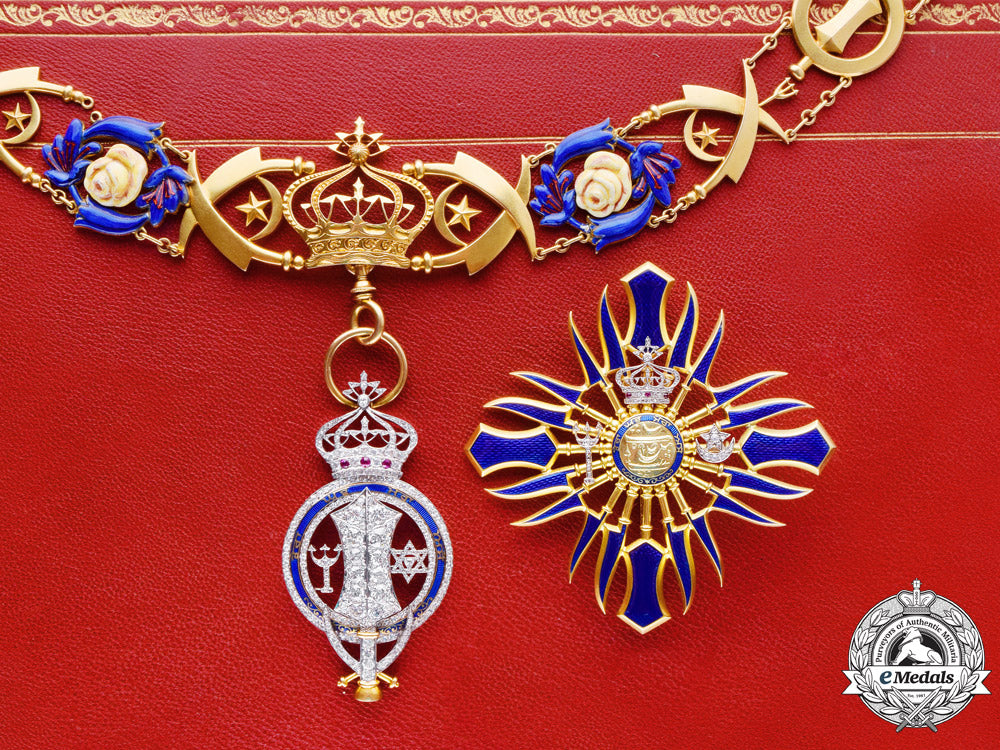
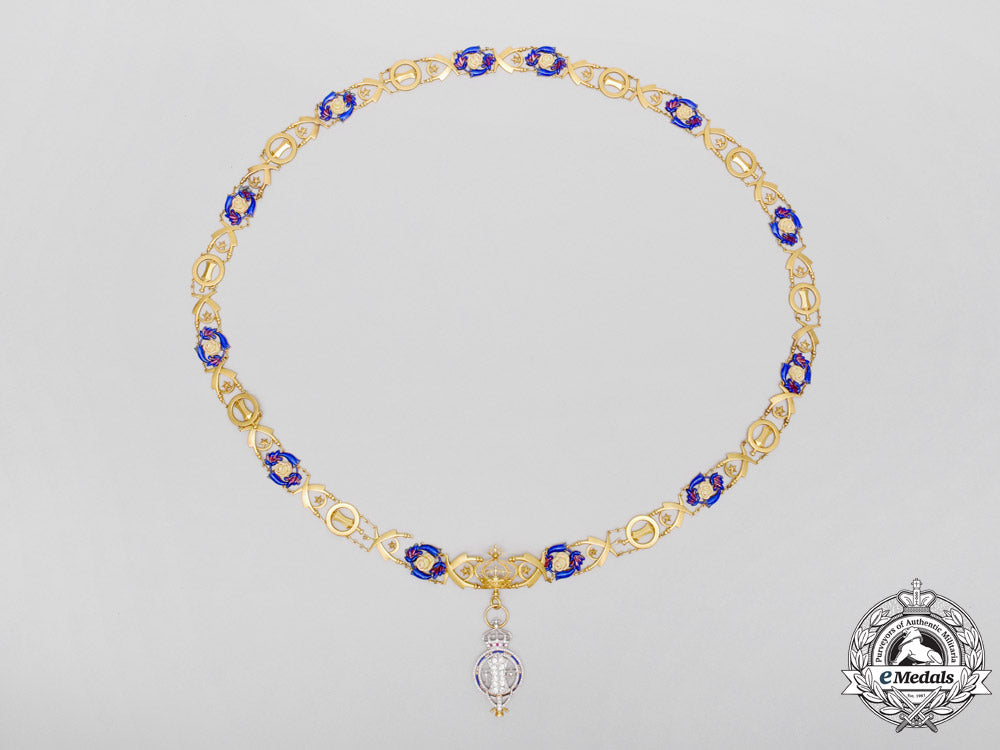
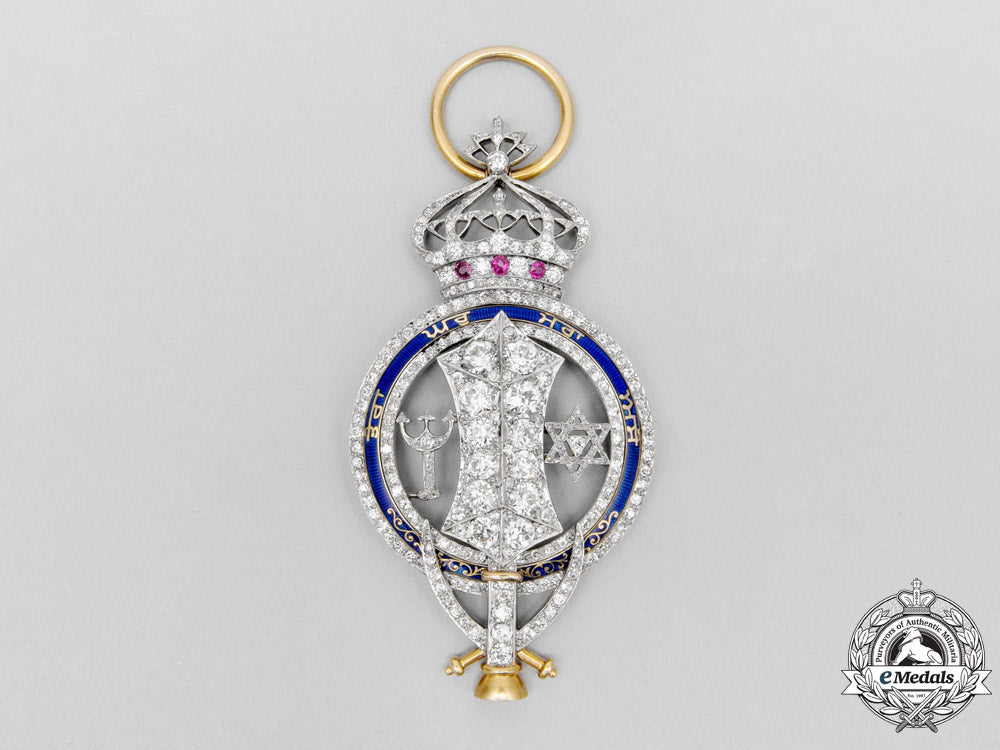

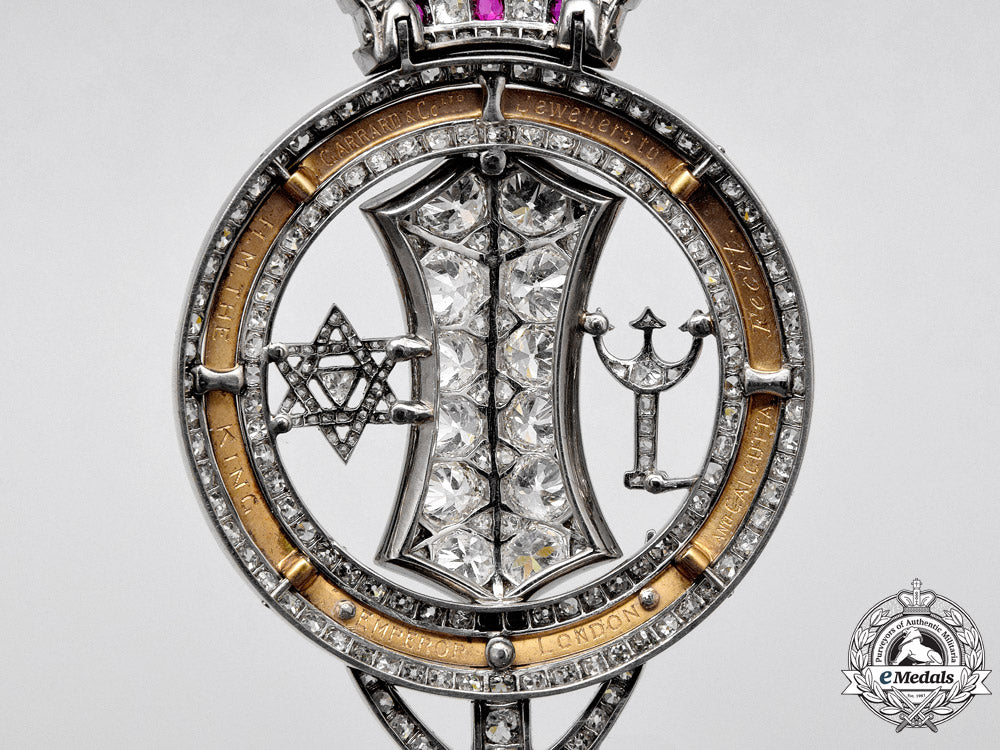
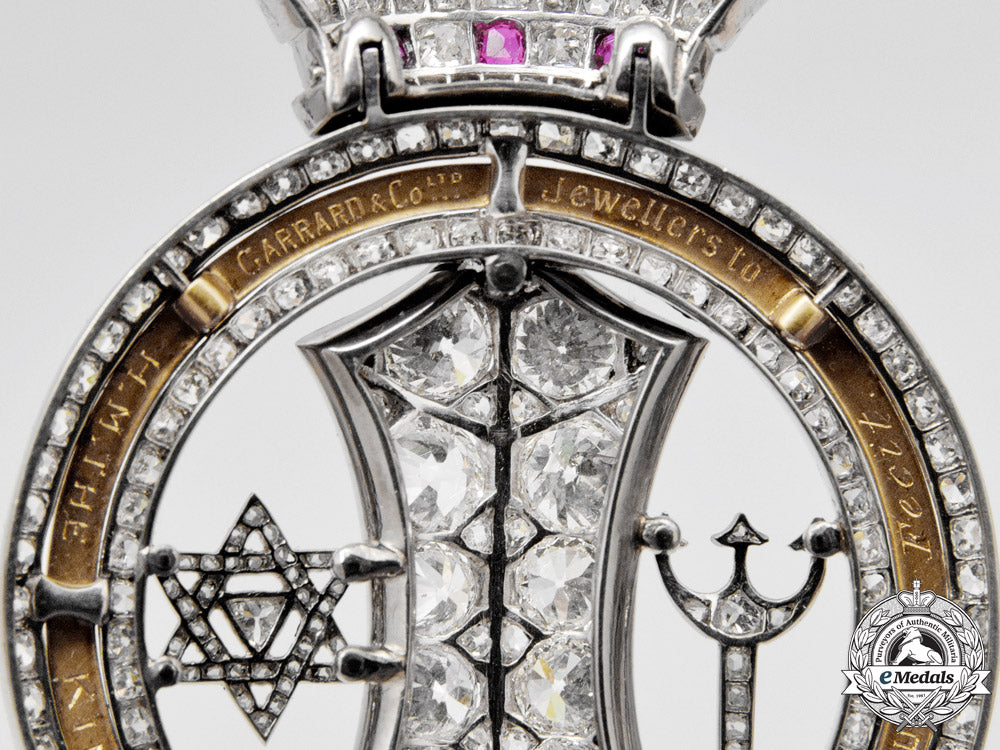
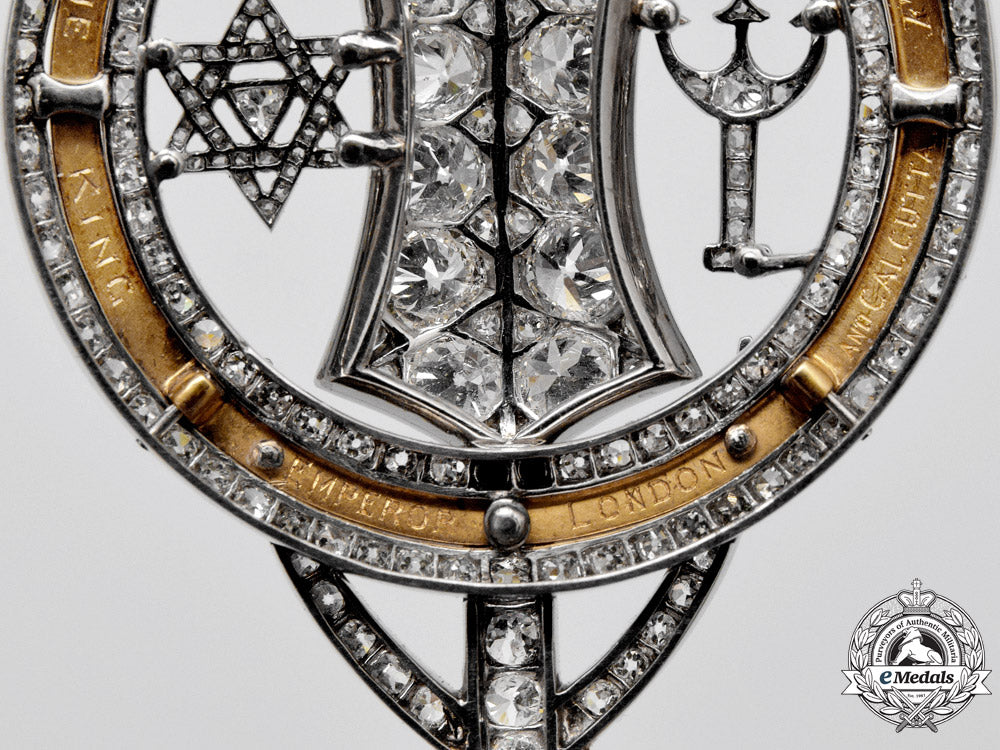
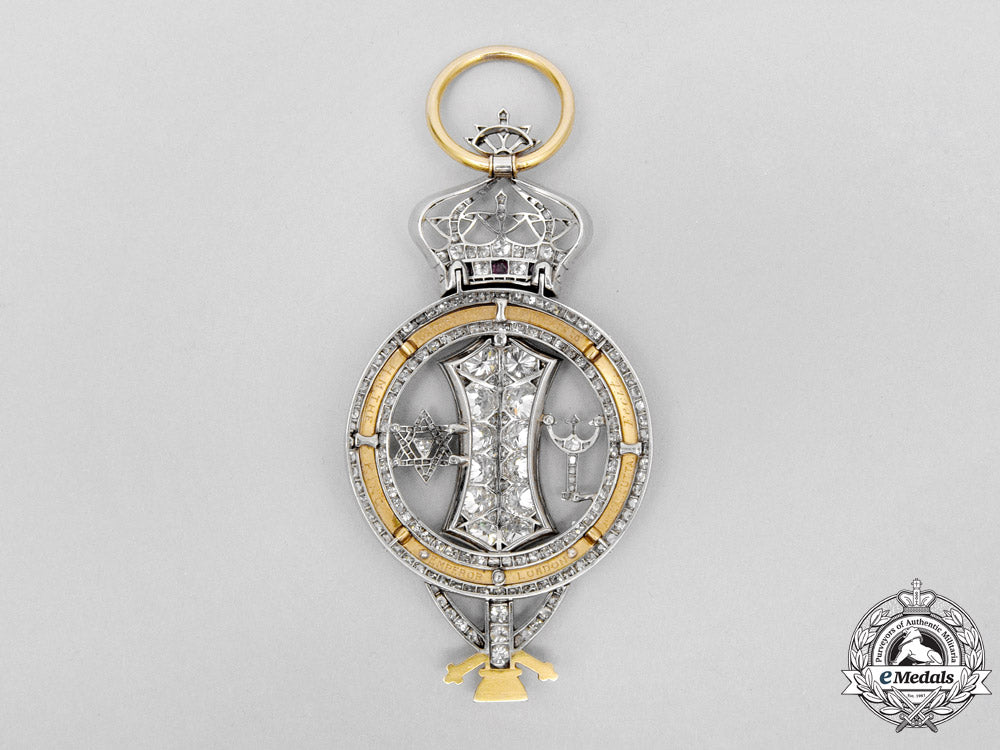
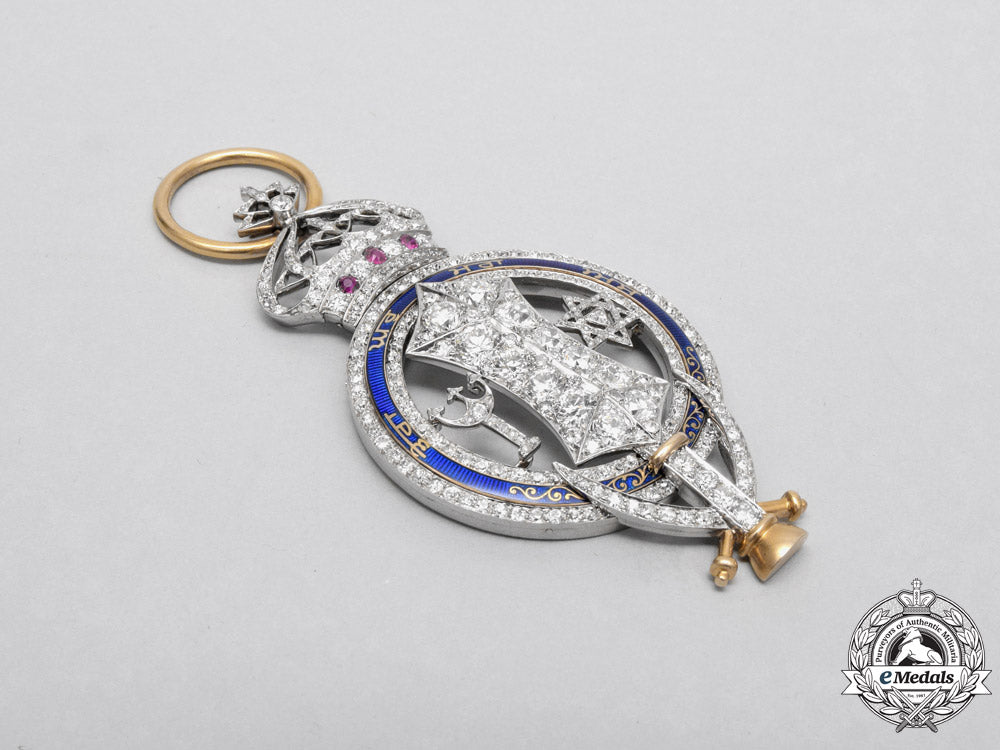
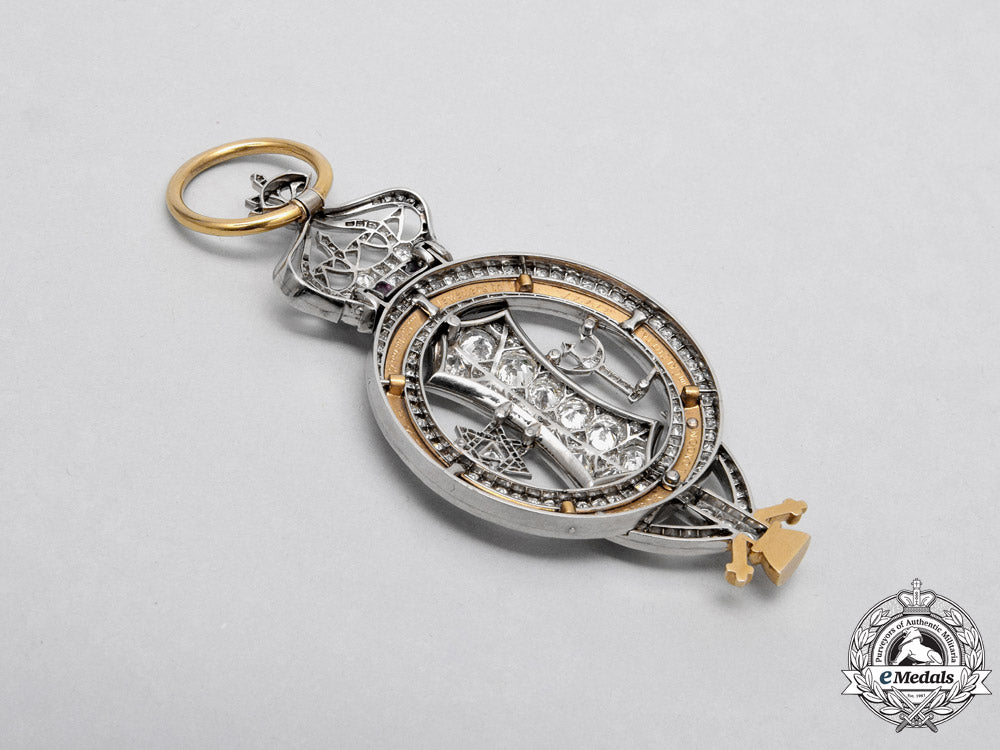
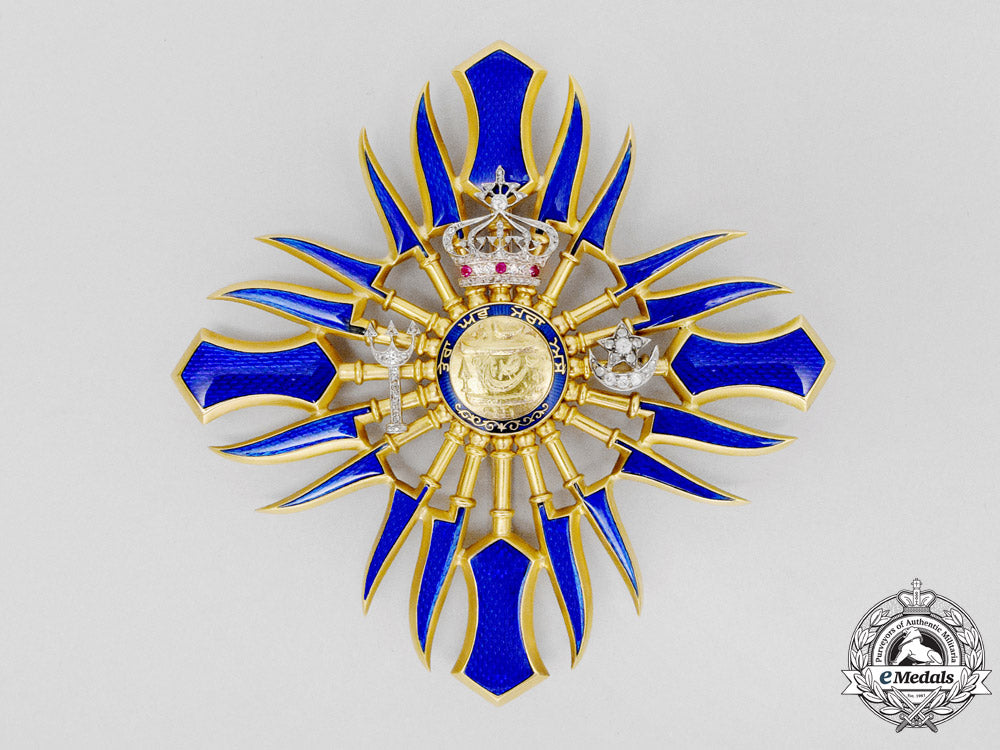
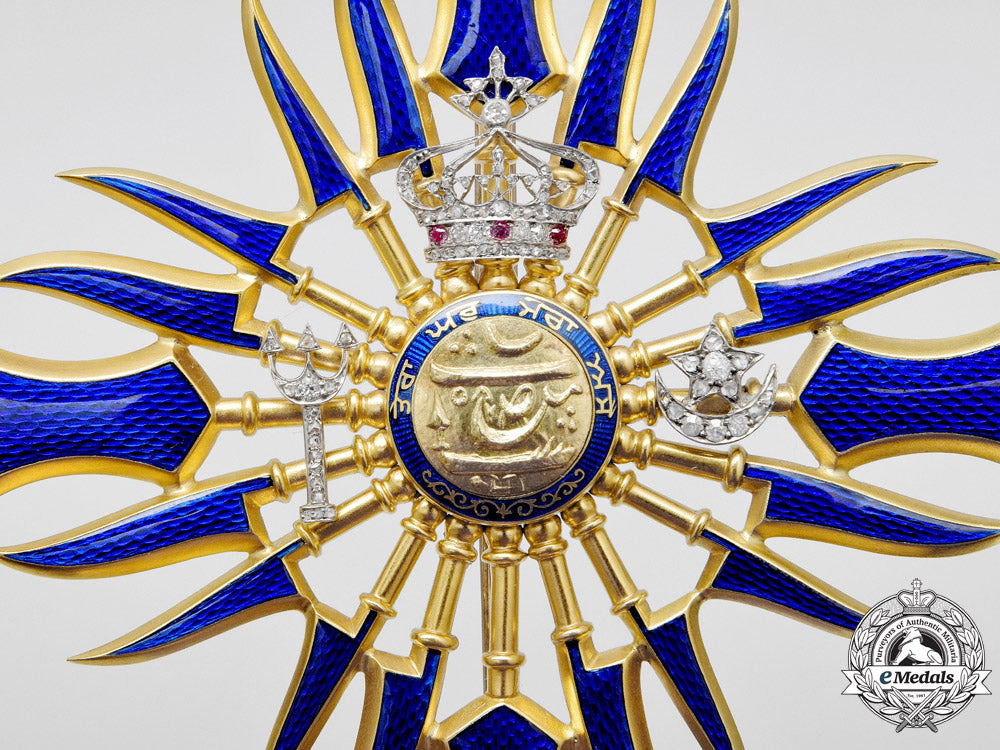
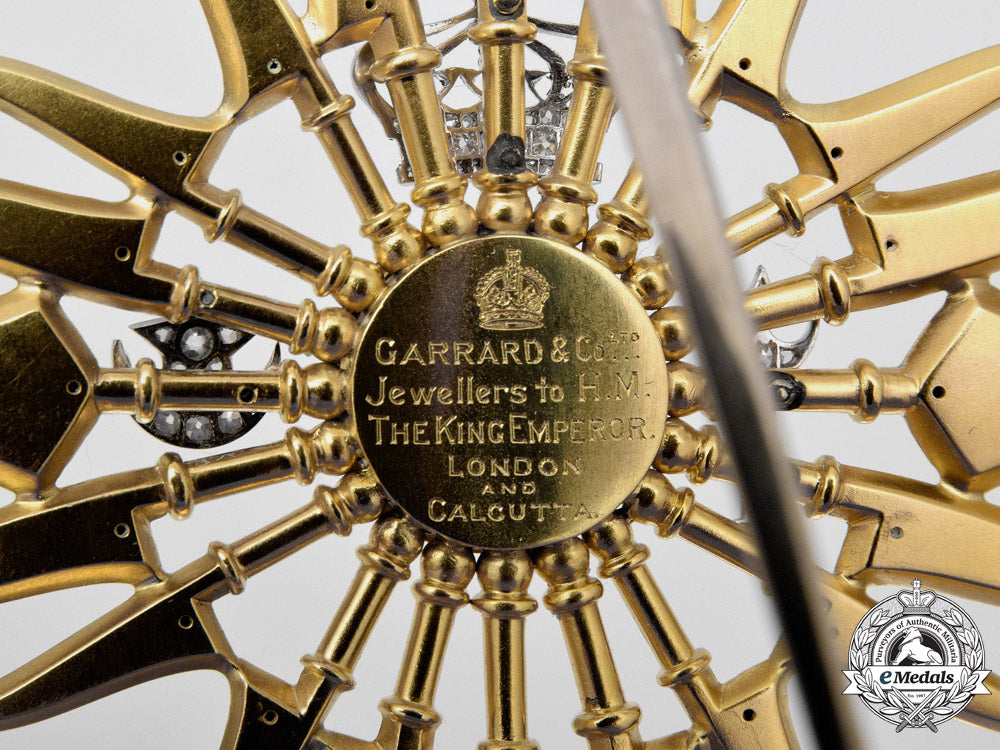
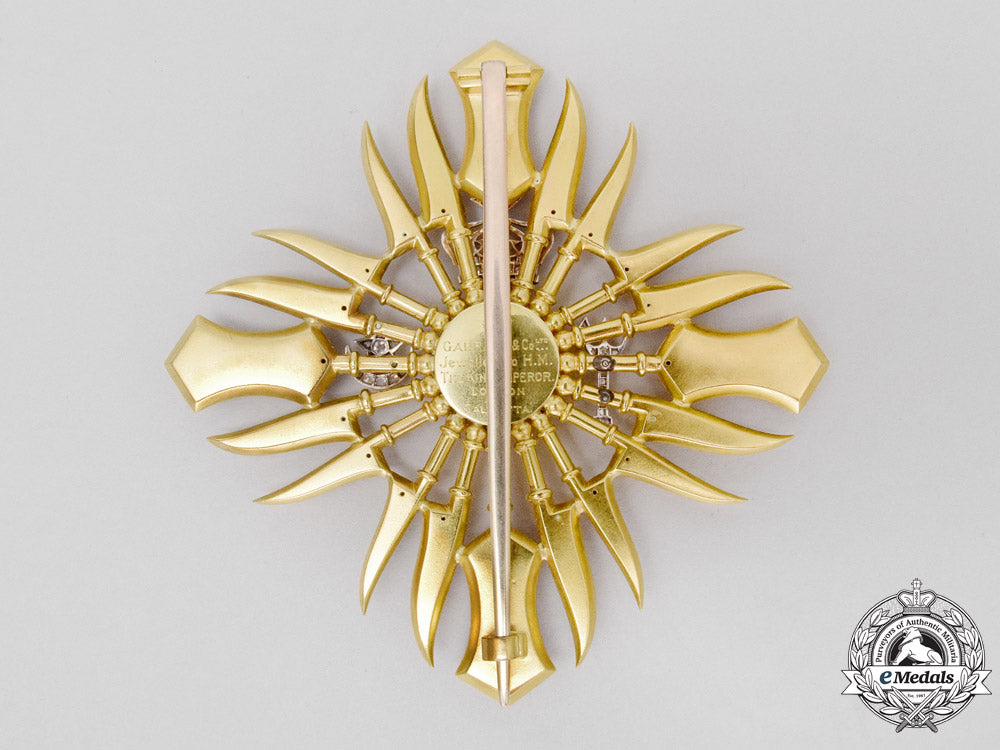
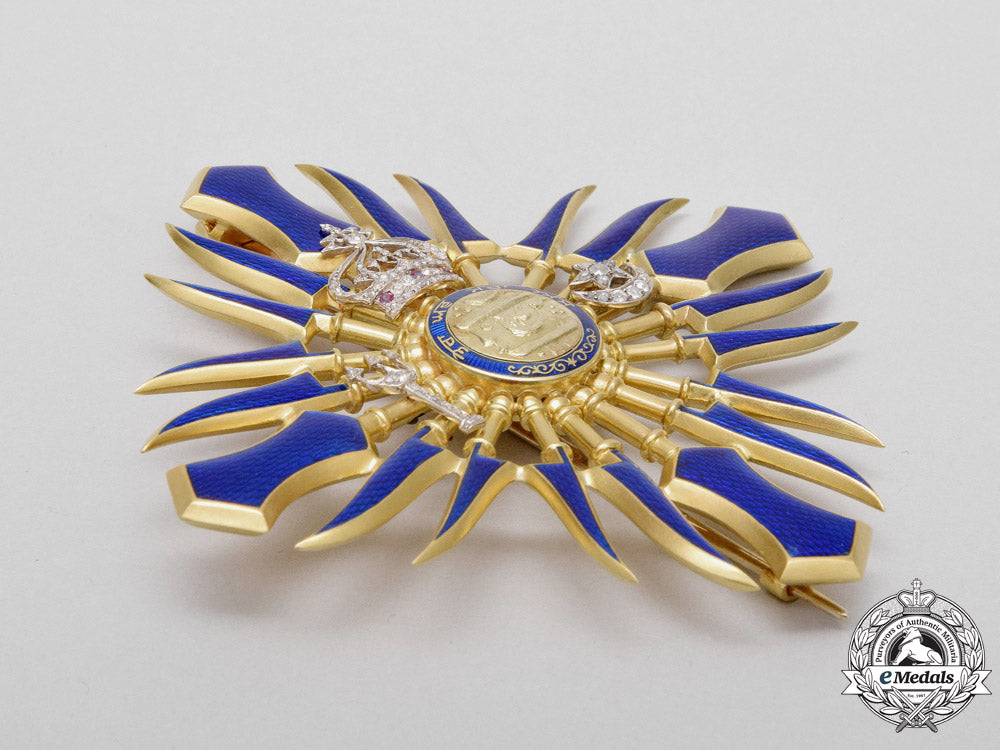
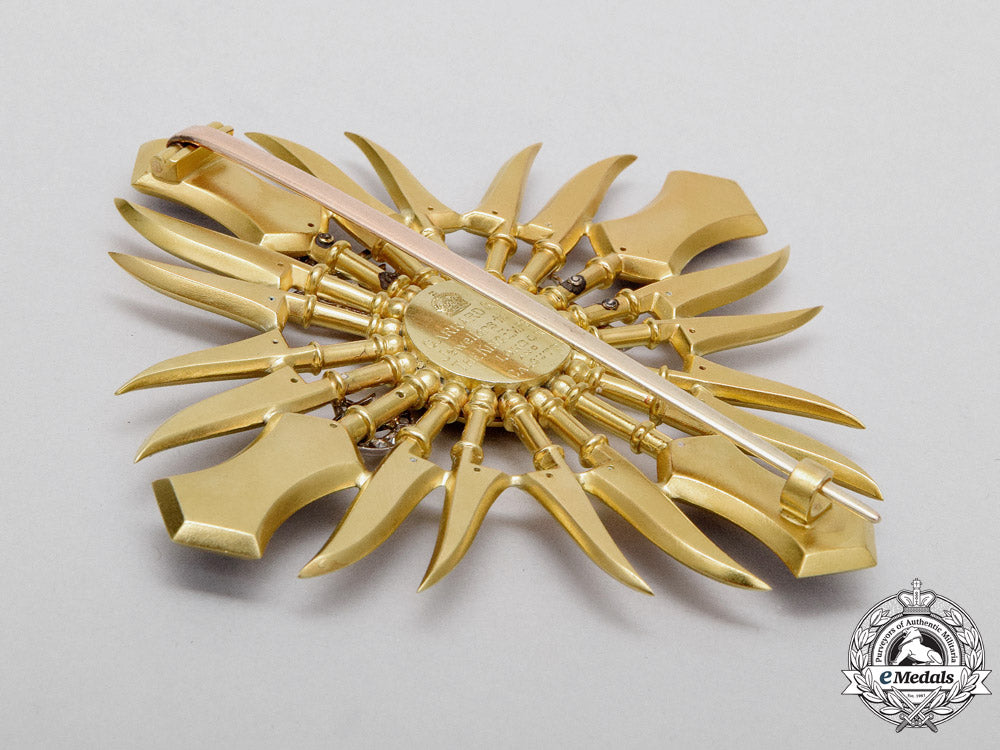
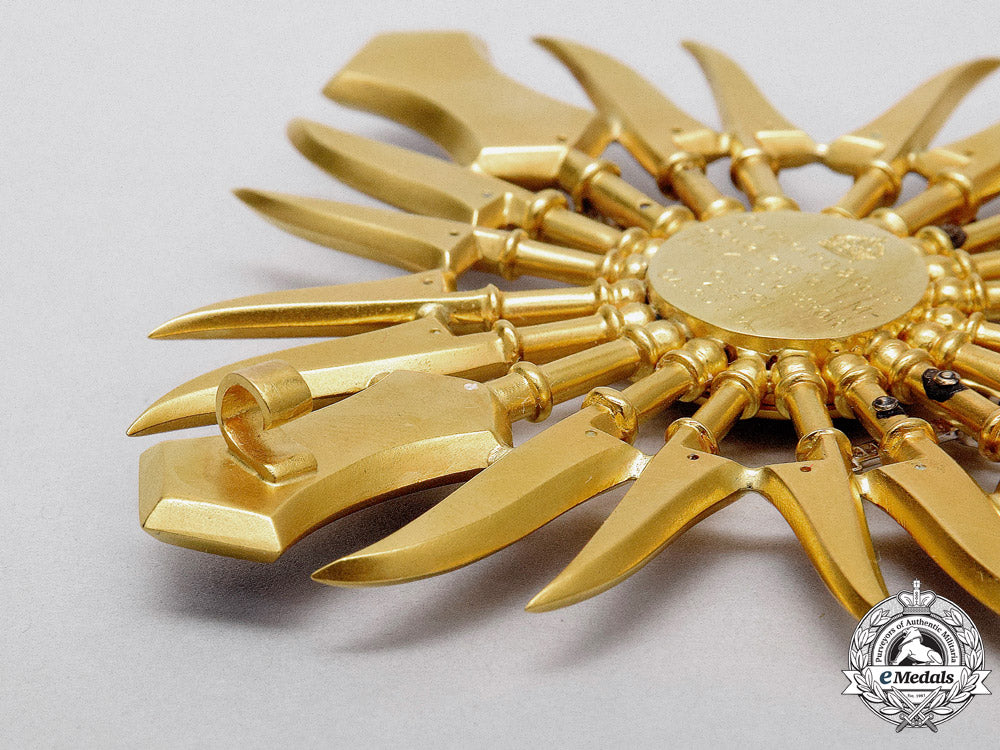
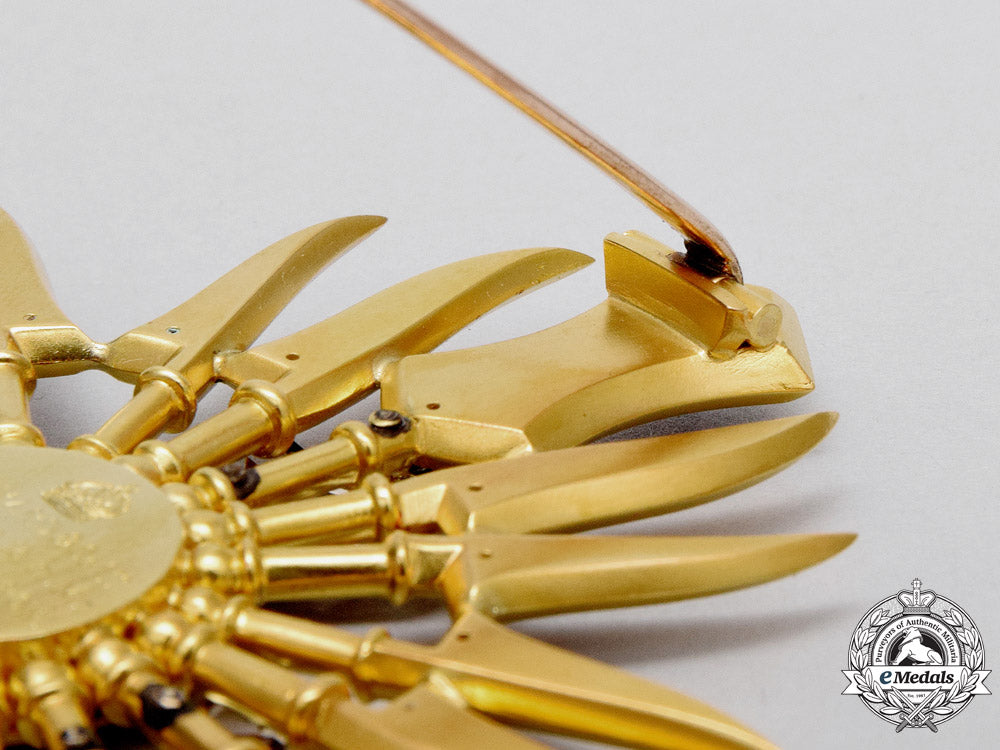
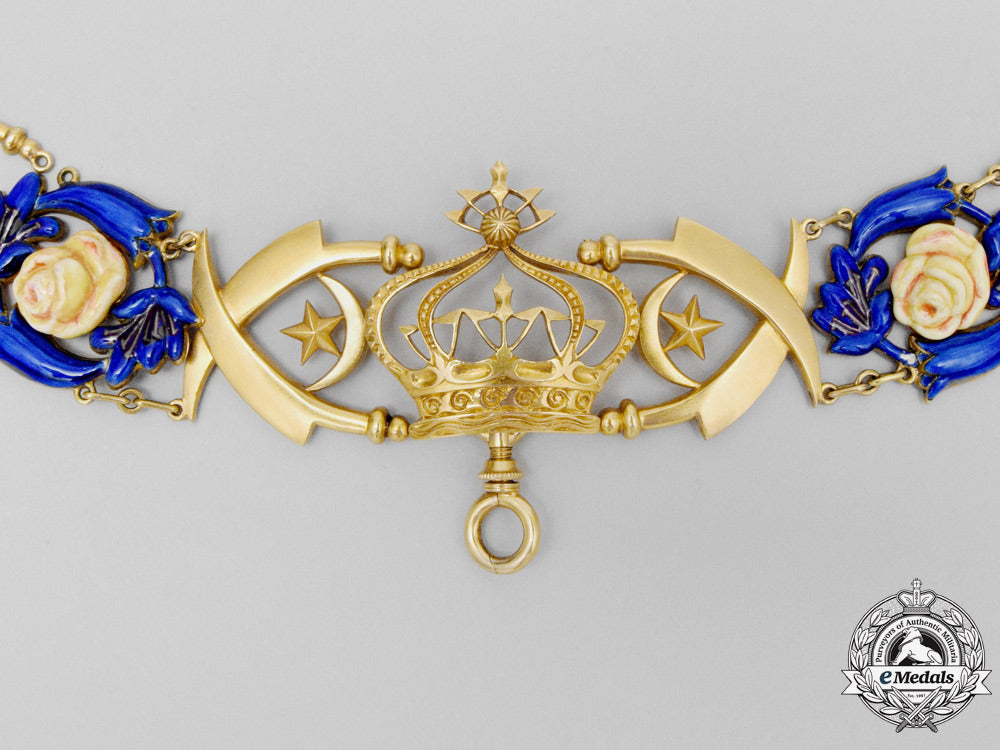
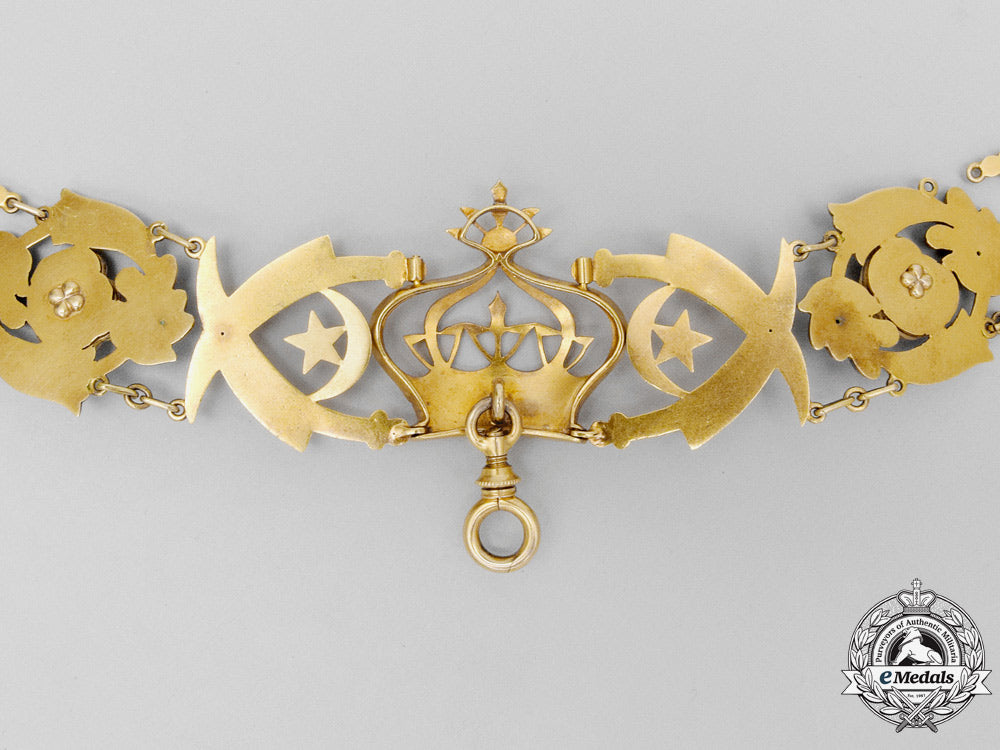
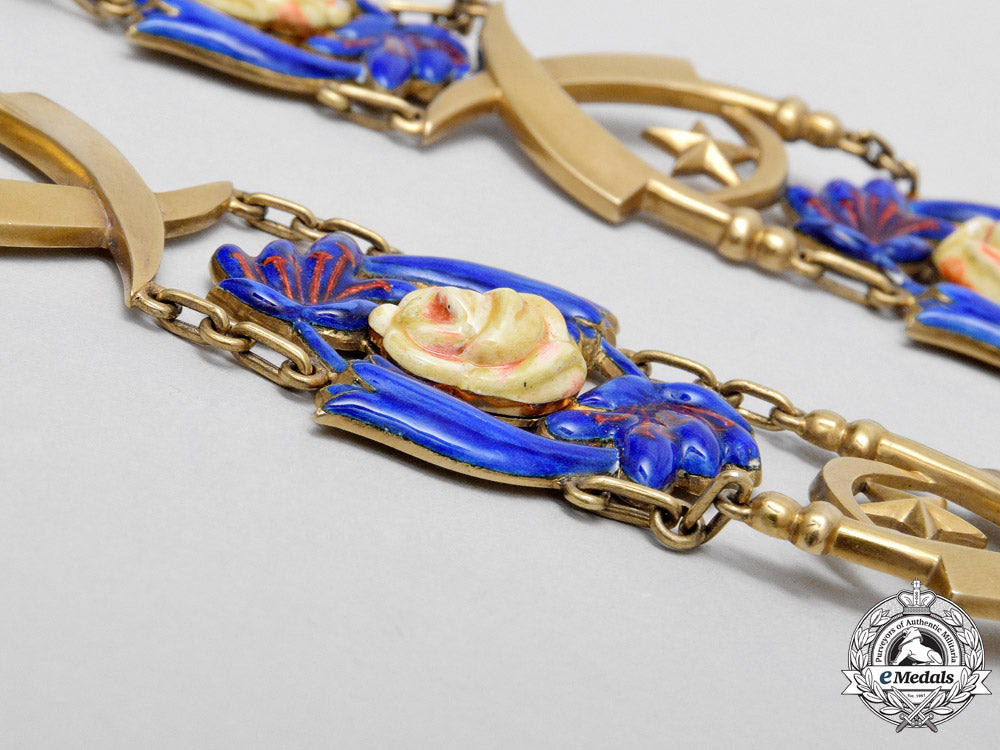

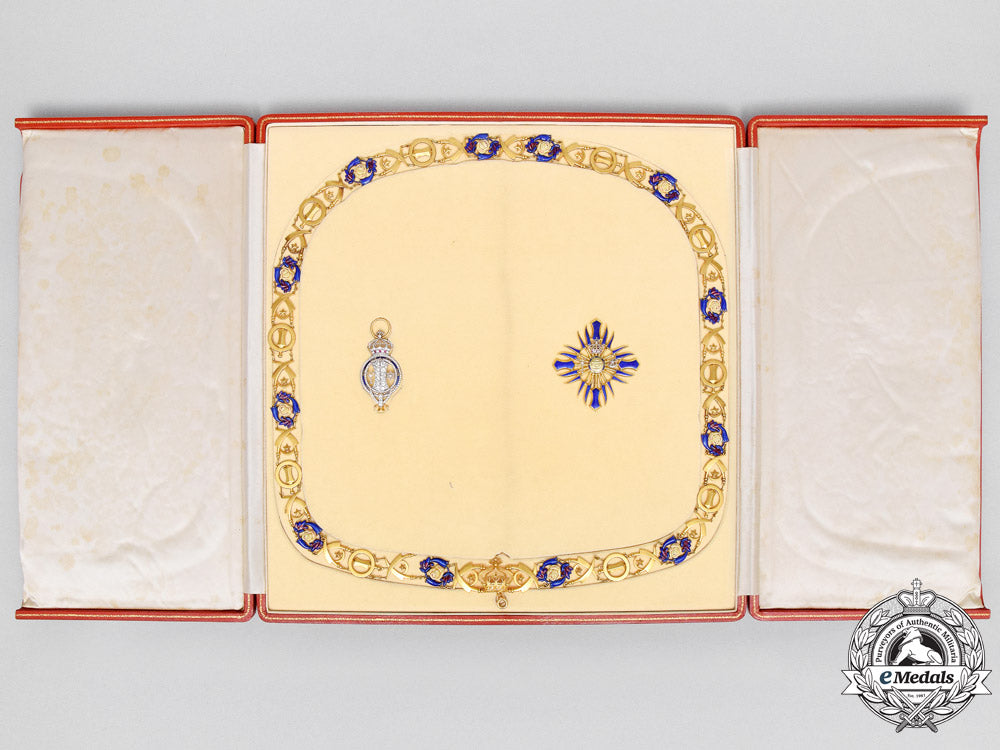
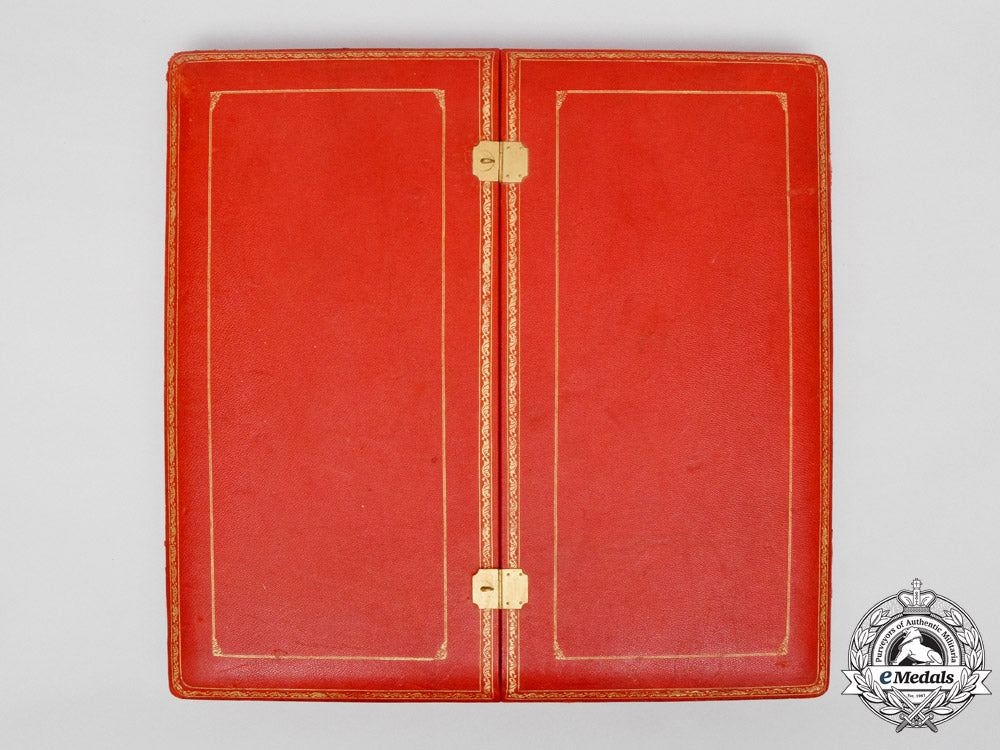
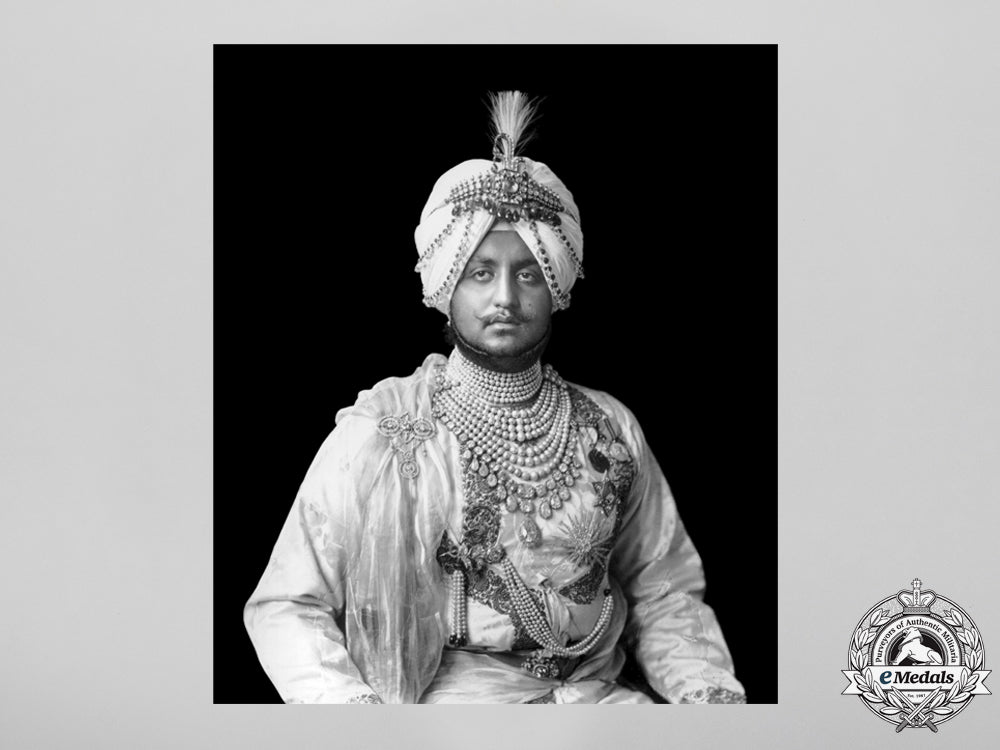
You May Also Like
Germany, Third Reich. A Mixed Lot of Tyrolean Marksmanship Badges
G52930
Germany, SS. An Estonian Waffen-SS Volunteer’s Sleeve Shield
G50381
Germany, SS. A Waffen-SS Sturmmann Sleeve Insignia
G52846
Germany, Third Reich; Slovakia, First Republic. A Mixed Lot of Wartime Postcards
G52905
Germany, Third Reich. A Pair of Tyrolean Marksmanship Badges
G52981
-
Germany, Third Reich. A Mixed Lot of Tyrolean Marksmanship Badges
G52930
Add to CartRegular price $135 USDRegular price $0 USD Sale price $135 USDUnit price / per -
Germany, SS. An Estonian Waffen-SS Volunteer’s Sleeve Shield
G50381
Add to CartRegular price $150 USDRegular price $0 USD Sale price $150 USDUnit price / per -
Germany, SS. A Waffen-SS Sturmmann Sleeve Insignia
G52846
Add to CartRegular price $135 USDRegular price $0 USD Sale price $135 USDUnit price / per -
Germany, Third Reich; Slovakia, First Republic. A Mixed Lot of Wartime Postcards
G52905
Add to CartRegular price $135 USDRegular price $0 USD Sale price $135 USDUnit price / per -
Germany, Third Reich. A Pair of Tyrolean Marksmanship Badges
G52981
Add to CartRegular price $135 USDRegular price $0 USD Sale price $135 USDUnit price / per
Do you have a similar item you are interested in selling?
Please complete the form and our client care representatives will contact you.
Sell Item